How to Travel to Antarctica: The Ultimate Guide
This article may contain affiliate links where I make a small commission for purchases you make from links that you click from this article. By purchasing through these links, you support me at no additional cost to you. Thanks for your support.
Traveling to Antarctica is a bucket list item for a lot of people. And I’m lucky enough to have been to Antarctica – not once – but twice. On two occasions, I got to travel to Antarctica and cross a couple of items off my bucket list.
Right there at the top – there it is – “Camp on Antarctica and see the Penguins.” When I was planning my first trip in 2012, I could almost see the pencil poised above the word “Camp” right now, ready to firmly press on the paper and pull it across with a fervor and jolt of joy.
However, there is another item on my Bucket List that was even more exciting to me than seeing penguins. Down a bit further, you’ll find it – “Experience 24 hours of daylight.”
On that first trip with my father, we were sailing near the Antarctic Circle around December 21st – the longest day of the year in the southern hemisphere.
If Antarctica (or something to do with traveling to Antarctica) is on your bucket list, this guide to Antarctica Travel will help you achieve that!
Table of Contents
How to Get to Antarctica
The main way to get to Antarctica is via cruise. Specifically, expedition cruises.
I have said repeatedly that I have no interest in being on a cruise. The confinement and mode of travel just don’t fit my personality and desires.
However, there have always been a few exceptions to this statement – Antarctica is one of them. Plus, expedition cruising is quite a bit different than your standard big cruise.
There are two different routes to choose from that give you two very different experiences. Thankfully, I’m one of the few people in the world who has taken them both and can explain the differences!
The Drake Passage
The first time I traveled to Antarctica was with my father in 2012.
We took the route that most Antarctic cruises begin from Ushuaia, the southernmost tip of Argentina, traveled south through the Drake Passage for 2 days to the Antarctica Peninsula, and looped back up to Argentina again.
This is the most direct route to get to Antarctica, and my cruise lasted 13 days in total. My father and I cruised with Expedition Trips and G Adventures, who sponsored the trip.
The Ross Sea
The second time I went to Antarctica was via the Ross Sea in 2014.
This time I journeyed through the Southern Ocean from New Zealand, arriving at historic Cape Adare in East Antarctica. This is the route of the famous explorers and has the most history involved in it.
Cook, Ross, Borchgrevink, Mawson, Scott, and Shackleton all made this same journey through the Southern Ocean multiple times to go deeper into Terra Australis incognita – the unknown southern land.
Approximately 500 tourists take the route from New Zealand, through the Southern Ocean to Eastern Antarctica each austral summer, while 50,000 take the route from South America.
Why do so few people take this route to Eastern Antarctica and the Ross Sea?
Because it’s hard, unpredictable, rough, riddled with ice, and the journey simply takes a much longer time.
But the journey can also be exhilarating, and I’m the type of person who looks at those words and think “Yeeessss. A real adventure!” I wanted to go to Eastern Antarctica because it was unique and I like going the hard way, where few people tread. More than anything, I like to really explore.
I took this cruise with Heritage Expeditions, who sponsored the trip. They’re one of the few companies that offer expedition cruises into the Ross Sea.
This small family-owned company has been doing it the longest and knows the area better than anyone. I cruised for 28 days on the In the Wake of Scott and Shackleton Itinerary.
No matter which way you spin it, you’ll be spending a lot of time on a ship, and it will be a bit unpredictable.
As the expedition leader on the G Expedition from my first trip always said, “Mother Nature is in charge.” When cruising the Antarctic, you really don’t know what each day will hold, and weather can dictate the route and schedule.
But for the trip of a lifetime that fewer people take than climb Everest, I’d say a bit of unpredictability is well worth it! (And even holds some of the adventures!)
Planning & Preparing for A Trip to Antarctica
Any adventure as colossal and exciting as a trip to Antarctica requires plenty of preparation and planning.
Thankfully, for my first trip, I had a team of people at Expedition Trips helping me to get me through all of the paperwork, plans, itineraries, and checklists.
Here’s everything you need to prepare in order to travel to Antarctica:
Flights/Visas/Transfers
Whether you are going from the popular route of Ushuaia or the more obscure route from New Zealand – first, you have to get there. That’s one heck of a long plane ride with multiple transfers. For my trip with my dad in 2012, I organized our flights in two segments – from South Dakota to Buenos Aires and then from Buenos Aires to Ushuaia through a combination of my own online booking and utilizing the Expedition Trip staff to help me book the Ushuaia leg.
To get into Argentina you do not need a visa if you are an American citizen and your stay is limited to 90 days.
However, an American going to New Zealand is required to have an NZeTA. This is true for cruise ship passengers as well. It can take up to 72 hours to process an NZeTA, so you should apply well in advance of your trip to New Zealand. The NZeTA is valid for multiple visits for up to two years. The cost of the NZeTA depends on the system used to request it: if you apply utilizing the mobile app, it will cost NZD $9; if you apply on the website, it will cost NZD $12.If you are coming from other countries, be sure to check the visa requirements for either country.
A clean bill of health
Since you are out on a ship far away from modern facilities, there’s a bit of paperwork that needs to be done. They need to have your medical history. This is basically to alert the ship staff of the passengers’ medical history so that they can be well prepared to care for anyone in case of an emergency.
This was pretty simple paperwork but you do have to provide more information that normal about your medical history than you would on a normal vacation.
Check out my winter packing list for extreme temperatures
Emergency Medical/Evacuation Insurance
Of course, since you are in the remote corners of the earth, the ship has to know that if there is an emergency, their passengers are covered from an insurance perspective.
They require proof of a minimum of $200,000 of Emergency Medical/Evacuation Insurance. This is pretty much the norm on these types of remote expedition trips.
Getting proof of that coverage was easy for me to do – I just called my insurance provider and made sure I was covered and then had them send me the paperwork that provided my proof of coverage. However, trying to do this for my father, who was 76 at the time, proved to be much more cumbersome.
Have you ever tried to call Medicare and get answers… It is not fun.
And let’s face it – they don’t have a lot of 76-year-olds taking trips to the ends of the earth – so apparently, they don’t get many questions about emergency medical evacuation from foreign countries. At least that’s what I deduced based on the two different customer service reps I dealt with and their utter confusion about the questions and their inability to provide me any straight answers.
But we got it all sorted in the end, thank goodness.
Extreme Cold Weather Gear
Layers, layers, layers!
On my first trip, Expedition Trips supplied us with a pretty thorough packing list that included clothing and other travel gear.
Luckily our boat provided the necessary boots for the cruise and our daily excursions onto land – so that’s one less thing we needed.
I was surprised to find out that Antarctica isn’t as cold in December as I thought it would be – average temps around 20 to 40 F – which quite frankly is warmer than where my father lives in South Dakota in December!
However – you’ll still need some winter coats and warm layers as well as waterproof pants and gear.
Oh yes, and swimsuits! In case you feel like taking a polar plunge.
Photo Equipment
Since one of my main focuses was to do photography in Antarctica, I needed to think ahead on what equipment I would need.
You should plan on taking as long of a lens as you can. Even though you can often get close to the penguins and seals on landings, you will be shooting whales and seabirds from further distances, and you’ll need a long lens for that. I had a 300mm, but honestly, I wish I had a longer lens. I say 400mm or greater is required. And if you don’t have one of your own, you can always rent one.
In addition, you’ll want a wide-angle lens to get spectacular landscape shots and boat shots.
I also took a GoPro video camera to take with me on the daily excursions and kayaking.
You’ll want to make sure your gear is protected from the elements in Antarctica, especially the sea spray that you often encounter on bad weather days or on the zodiac. I use Lenscoat products to cover my lenses. They protect your lens from the elements and make them easier to handle in the cold. I also use their Raincovers for even more protection for my gear, including my camera body.
LensCoat® lens covers offers your valuable equipment some protection from scrapes and bumps, preserving its resale value. It also help break up the shape of your lens, making it less noticeable to wildlife.
Don't let the weather stop your photography! This innovative cover provides protection for your camera and lens from the elements like rain, snow, salt spray, dirt, sand and dust while allowing you easy access to the camera and lens controls.
Life on a Cruise to Antarctica
My two trips had some similarities and some differences. The trip across the Drake Passage was on a larger expedition ship called the G Expedition. The trip from New Zealand across the Ross Sea, a much longer trip, was on a smaller, basic expedition ship called Spirit of Enderby. There are inherent similarities between the two trips (life on the sea on the way to Antarctica is pretty distinct, so of course there would be!). However, the difference in the nature of the ships led to some particular differences as well.
Since my father and I were novice cruisers (however my father did in fact cruise from Seattle to New Zealand and back on a freighter ship), we both didn’t really know what to expect from the G Expedition. But pretty quickly we fell into a comfortable routine and surprisingly kept busier than we ever imagined or expected.
Answers to common questions about life on an expedition cruise, whether you are going on a larger or smaller ship.
What is included in the cost of the cruise?
It’s probably easier to say what wasn’t included – alcohol, soda, expedition coats (sometimes they are now included depending on the company), optional camping activities, optional kayaking activities, and tips.
Can you pay in US Dollars?
Yes – you can pay in US Dollars and you can pay by credit card for any extra expenses. When you get on the boat each passenger is given a swipe card with the name on it, their cabin number, and mud room ‘space’ number. This card can be connected to a credit card if you’d like. All charges are simply added to your account with the swipe card, and at the end, you can settle the bill via a credit card or cash. You can even add your tip to the swipe card at the end. It was a very convenient process!
What did you do to keep busy all day?
There are normally 1 to 2 zodiac landings a day. It is your choice to go on them or not (and of course you are going to go!). After the landings for the day were complete, there was a debriefing for the current day’s landings as well as the next day’s planned landings.
On the G Expedition, each night after dinner, there was a movie option to watch in the Discovery Lounge, or typically, there was music and socializing in the Polar Bear Lounge/bar that went into the very early morning hours! And on the Spirit of Enderby, there were also movies or presentations.
For the days when we were completely at sea, there were always lectures on various topics ranging from Antarctica history, to wildlife, to geology.
Trust me when I say there was ALWAYS something to do. In fact, some days, I was simply exhausted from all of the activity!
What Gear Was Provided?
Both of the ships provided a winter parka and boots for each passenger. This helps cut down on your packing incredibly!
Antarctica packing is much more than just ensuring you have warm clothes! Before you go, make sure you have all of these Antarctica items!
What did you do at night?
Most nights a movie was offered. The movies were normally Antarctica-themed in some way. Or if you wanted to be a bit more social you could go to the Lounge, listen to music, and socialize with other passengers.
Or you could simply go out and sit outside and marvel at the white nights. Since the sun never really set while we were in Antarctica, we had some spectacular sunsets at about midnight! It never really did get entirely dark out during our cruise making it even harder to sleep when there is so much to see! In addition, I actually was lucky enough to see the Southern Lights while we cruised through the Southern Ocean one night!
Is there internet?
Yes – but you must pay to play. The ship had a satellite connection that was pretty decent most days. However, satellite costs are hefty – you could buy an ‘access code’ based on megabytes downloaded as opposed to time spent online. The G Expeditions ship had wifi in various common areas such as the reception area, Discovery Lounge, and Polar Bear Lounge. There were also two computers available to use that had hard connections. The Spirit of Enderby recently added a WiFi option as well as shared computers for guests.
You would need to be careful to shut off your phone push settings as you can eat up megabytes pretty quickly with a smartphone. However, my best advice is that unless you are working there on board like me – just unplug and enjoy the peace and quiet of Antarctica and leave the email and photos until you get back home.
What kind of animals did you see, and could you get close to them?
We saw Penguins (Gentoo, Macaroni, Chinstrap, Adele), Seals (Leopard, Crabeater, Elephant, Weddell), Whales ( Minke, Orca, Fin), and a variety of seabirds. In the Ross Sea, we were also able to see King Penguins. We saw some pretty spectacular sights when it came to the animals – about 100 Orca whales hunting/harassing Minke whales, a leopard seal and a pup nursing, and rookeries including 60,000 penguins!
Yes – you were able to get very, very close to the animals in certain situations. In fact – the Fin whales actually were about 3 meters in front of our boat! And I had penguins come right up to me and peck on my GoPro camera a few times!
The expedition staff and crew were wonderful at pointing out the animals and providing you with loads of information on them. In addition, the Captain was thoroughly skilled at maneuvering our large ship very close to the wildlife but not so close that it scared them.
Life on the G Expedition Ship through the Drake Passage
How big was the ship?
The G Expedition was built in 1972 and refurbished in 2009. It was staffed with 52 crew and about 10 Expedition Staff. There were approximately 130 passengers on board the ship for our cruise. It had a reception area, 3 main living/cabin levels, a mud room, a sauna, a large lounge that held all passengers, a dining room, an exercise room, a library, a computer room, a gift shop, and a bar/lounge.
How did the Zodiac Landings work?
All passengers were assigned to one of 4 groups. Two groups would be called down to the mudroom (the loading/unloading area) at once. Once in the mudroom, you would get into all of your gear which normally consisted of a warm coat, waterproof pants & coat, waterproof boots(provided by the boat), mittens, cap, sunglasses, lifejacket, and backpack/camera. Then you would queue to get on a zodiac boat.
You were ‘checked’ out of the ship via a swipe card, you stepped in a solution to disinfect your boots (ensuring no foreign critters/bacteria made it to Antarctica), and got on a zodiac. The zodiac would take you to land, and upon landing, an Expedition Leader would greet you and explain the layout of the island – where various penguins or seals were located, what trails you could walk on, and what was off-limits. They would also tell you when the last zodiac would be going back to the ship so that you knew how much time you had.
After the briefing, you were on your own to explore and take photos! You typically had about 1 to 1 ½ hours to walk around on your own. Once you went back to the ship, you were checked back in via your swipe card and went through the disinfecting process again.
What were the cabins and facilities like?
We had a class 3 cabin which consisted of two twin beds, a desk & chair, another reading chair, a bathroom with shower, and a decent-sized window. Some of the cabins slept 3 or 4 people and had bunk beds. There was a cleaning service daily and a nighttime turn-down service.
More information on the variety of cabins and facilities on the G Expedition.
There were plenty of places to lounge around the ship and read or just look out the windows. Plus you could go outside on deck or go up to the bridge and visit the captain and crew.
Were there options to Kayak?
Yes, I signed up for the optional kayaking program when I booked my trip on the G Expeditions Ship. This proved to be the best thing for getting exercise and keeping me from going a bit stir-crazy. Every time there was a landing – we had an opportunity to kayak if the weather conditions permitted, and most days, the weather was kind to us, and we were able to go out. We would paddle for about 2 ½ to 3 hours, covering around 5 to 7 miles. Overall on our cruise, kayak was offered 8 times (thanks to great weather), and it covered 33 nautical miles. Normally, I would do one zodiac landing with my father and one kayaking excursion a day. Typically, the kayaking excursions would last about 2 ½ to 3 hours.
What did you eat?
There was a huge variety of food for every meal. Breakfast and Lunch were always buffet-style eating, while dinner was a sit-down 4-course dinner with menu choices. Special diet options were always available.
It was communal dining, so most days, you just chose a table and ate with new people – which made the whole process very social! The food was always good and the waiters/servers were amazing to watch as they carried large trays stacked full as the ship rocked and rolled. You could also purchase a bottle of wine, and if you didn’t want to finish it the staff would put your cabin number on it and keep it for you for the next day.
One evening, the crew held a BBQ dinner out on the back deck. They transformed the deck into a dining room with some of the best food of the whole trip. We were blessed with perfect weather and one of the most amazing views I’ve ever had while eating – the Lemaire Channel.
Did you go stir-crazy without exercise?
The zodiac landings normally provided a good chance for you to get out and stretch your legs a bit and walk around islands and explore. In addition, there was an exercise room on the ship too.
Life on the Spirit of Enderby through the Southern Ocean
How big was the ship?
The Spirit of Enderby (Professor Khromov) is a fully ice-strengthened expedition vessel, built in 1984 for polar and oceanographic research, and is perfect for Expedition Travel. It can transport a max of 50 guests.
It has one dining room, one lounge, a presentation room, and a sauna. There aren’t a lot of frills on this ship – it’s basic and that was fine with me! There was also a small library of books in the lounge.
There are suites and cabins with ensuite bathrooms as well as simple twin shares with shared bathrooms. I actually loved the option of a lower-cost cabin where you shared a bathroom and shower. Each cabin did have a sink and vanity though.
How did the Zodiac Landings work?
Cruising in the Ross Sea means that there are fewer vessels you have to share it with. That meant that our landings were very spontaneous; we didn’t have to keep to a strict schedule and we were very free to roam based on weather conditions. That also meant that we could hang out longer at a location waiting for the weather to clear for a zodiac landing.
In addition, since we only had 40 passengers on the ship, that meant that everyone on the ship could go on a landing at the same time. In an attempt to prevent damage to the region’s unique ecosystem, only 100 visitors are to be allowed on shore at any given time. Since we didn’t have to separate into multiple groups for a landing, that meant we had more time on shore – sometimes as much as 4 hours!
The Spirit of Enderby does not have an electronic check-in/off-the-boat system, but it was very easy to do. There is also a disinfection process, much like the G Expeditions process.
What were the cabins and facilities like?
The ship was originally a research vessel and therefore it wasn’t built or designed like a typical cruise ship. But I wasn’t looking for glitzy lounges or big, fancy, suites; I just wanted to be in Antarctica!
The cabins I stayed in with a roommate had two single beds, 2 closets, a desk and chair, and a sink with a mirror. The dining room had long tables with chairs that were bolted to the floor – which was great when the seas were rough!
Were there options to kayak?
No. But there were some options for citizen science on the Spirit of Enderby!
What did you eat?
Even though the ship was very functional, the food was luxurious. The Spirit of Enderby regularly has professional chefs from New Zealand and Australia on board, and it shows.
I was expecting basic meat and potato food. Instead, I got Indian curries, seafood, Asian hot pot and dumplings, chowders, rack of lamb, steak, decadent desserts, and every kind of fish you can imagine.
Breakfast is served buffet style, but lunch and dinner are full 3-course meals. For dinner, you were always able to choose from 2 different choices.
It was always communal eating at each of the meals.
Was there an exercise room?
No, this ship didn’t have an exercise room.
How to Travel to Antarctica Like the Old Explorers
In 1841, Sir James Clark Ross was the first to enter what is now known as the Ross Sea and discovered Ross Island as well as the Ross Ice Shelf, Mount Erebus, and Mount Terror (both named after his ships).
If you want to get a feel for the explorers of old and what they went through, then East Antarctica is where you want to be. The history of this part of the continent is plentiful.
Learn more about the Ross Sea Route
If you are going to travel to Antarctica via the Ross Sea, it’s a long journey. And like most things in life, the longer it takes, the more meaningful the reward – right?
I wanted to go this long route as it takes me below the Antarctic Circle to a whole different part of the continent very few people get to see and experience.
Nothing makes me happier than feeling like I’m really exploring and blazing a trail. After all, travel to me is about exploration, just like the voyagers of old. It’s not about selfies or bucket lists, but about truly discovering a place and yourself.
The good news is that Heritage Expeditions breaks up this long journey by stopping at the Subantarctic islands in the South Pacific Ocean. They are collectively designated as a UNESCO World Heritage Site.
At these islands, I saw a massive variety of wildlife, including four species of penguin: King, Royal, Rockhopper, and Gentoo. And when I say ‘massive,’ I mean millions of penguins!
Then we continued through the famed Southern Ocean and eventually got to the continent and the Ross Sea where stops are dependent on weather and ice conditions.
The Heritage Expedition Ship
The Spirit of Enderby is a bit more serious, grittier, non-flashy, much smaller boat.
I expect the passengers on this trip to be heartier and probably really well off, as this isn’t a cheap journey. But it’s one that I believe is worth every penny.
I haven’t even taken the trip yet and I know that to be true already because Antarctica is Just. That. Amazing. It’s a special place where animals and the environment are in charge, and humans are simply alien visitors.
I’d actually been on this ship before when I went to Wrangel Island in Russia. It’s small and functional and built for the rough seas. There will be 48 passengers on the boat, approximately 30 crew.
What is expedition cruising, and why should you take one?
What to Expect when Expedition Cruising to Antarctica
Most people want to know everything they can before they take a trip like this; they want to be prepared. And once you’ve finished the preparation and planning phase, you might still feel unprepared!
And even though the expedition to Antarctica is completely unpredictable due to weather, there are a few things that are predictable about this type of expedition cruise.
Based on my experiences, here are a few things you can expect to experience while cruising to Antarctica. Some of these are true of both routes (Peninsula and Ross Sea), and some are particular to the Ross Sea route.
You will likely get seasick
Whether it’s the Drake Passage or the Southern Ocean – it’s inevitable you’ll be seasick. I’ve got some handy tips for you that I learned the hard way in the section below.
But whatever you do, don’t let the seasickness deter you. I was seasick on both trips I took to Antarctica!
However, most everyone ‘finds their sea legs’ after a few days. Plus, not every day is rough. You’ll have calm times, and once you actually reach Antarctica everything calms down significantly.
You will struggle to get on/off the zodiac
The way you do landings and get ashore on an expedition cruise is by zodiac raft. You will board the raft from a gangway on the ship and then get off on shore.
Sure, it sounds easy – but it isn’t.
Sometimes, it’s completely flat and easy, but the majority of the time, the swells are moving both the ship and the zodiac furiously. You have to step off the ship and onto the zodiac, trying not to fall in the boat or in the water. It does take some balance and athleticism. There are sailors and expedition staff to assist you, but realize this isn’t a cakewalk.
In addition, getting on and off zodiacs at the landings isn’t necessarily easy either.
Most of our landings were wet, which means you are greeted by crashing waves and rough waters as you swing your legs over the raft and walk to shore. Once again, there will be people there to help you, but realize that this isn’t as simple as just stepping off a boat and onto shore.
People fall and get wet occasionally.
You will get great food
The Spirit of Enderby, the ship I took with Heritage Expeditions across the Ross Sea, is not a luxury expedition ship – it’s functional, and no frills.
However, the one thing that was luxurious on the cruise was the food.
Chef Ed and Chef Max fed us three meals a day for 28 days and never repeated any lunch or dinner menu item.
The Chefs took so much pride in putting out a beautifully plated meal in some of the roughest waters on earth. It was impressive to watch and even better to eat.
I was so impressed that I created a video on their cooking in rough seas.!
You won’t make it to everywhere on the itinerary
The Antarctic is unpredictable, and so are the itineraries. This is probably the biggest reset of expectations you have to do if you go on this trip.
You will likely not see everything that is mentioned on the itinerary, but that’s okay. It’s about the journey. This is especially true of the Ross Sea route.
I talked to Rodney, the founder/owner of Heritage Expeditions, and he confirmed that managing people’s itinerary expectations is one of the biggest challenges.
“People see what we see on past expeditions on our website and trip logs, etc – but we can’t repeat that, and so then we have to manage those expectations. If it was repeatable and predictable then I wouldn’t be here…and everyone else would be here.“
Rodney
I agree with him 100%. I don’t want a reproducible vacation; I want an expedition – a journey to the unknown. If you are looking for a reproducible vacation, then head to the Antarctic Peninsula or Mexico.
On my trip through the Ross Sea, we actually didn’t make it to one of the big itinerary draws – the McMurdo Sound. There were miles of ice that made it impossible to get into the sound and see the historic huts.
Sure, it was disappointing, however, we were able to see many other places that weren’t expected like Coulman Island, and the Balleny Islands, and we were able to spend more time on Inexpressible Island.
It’s a tradeoff, and either way, you get to experience an Antarctica that few people see.
You will get tired of being social and struggle to find alone time
The beauty of the Ross Sea trip was that it was a small ship with under 50 passengers. However, you are with those same people for an entire month for every waking moment.
Every meal is a social experience. You are expected to go eat in the dining room and eat with everyone. This means there is social pressure to chat with people during that time.
I know that doesn’t sound like a big deal – but some mornings I woke up and just desperately wanted to eat without having to chitchat. I simply wanted to be alone.
I’m a very social person, but there were few moments of alone time on a ship of that size. You can find some solace in your cabin, in the library, or out on deck if it isn’t stormy.
Luckily, I had a SUPER roommate who I got along with wonderfully, so we made sure that we had time alone in the room, and quite frankly, we didn’t mind being together in the room either. She is a painter and I am a writer, our cabin was our little creative ‘home’ and we complemented each other. However, you don’t always get that lucky at the roommate roulette. Some struggle with roommate relationships, which can make the social aspect of the expedition even more challenging.
I personally think you just have to go into it being realistic. It’s going to be challenging to be on a small boat with people that you like and don’t like. But just keep in mind that this is not life or death – it’s simply 28 days…and the prize is that you get to go to Antarctica!
People will get injured
The ship is continuously moving, bobbing, and swaying, and inevitably, there are accidents. On the Ross Sea journey, we had to have one person emergency evacuated off the ship, and another broke his ribs (he was able to stay on the ship, though, and still do the landings on Antarctica!).
It takes a while to get used to the movement, and until you do you have to hold on at all times. Sometimes the seas were so rough I nearly rolled right out of bed. Chairs fell over, drinks spilled, and my roommate about took a header into a wall once.
You are required to have emergency evacuation insurance for good reason. Plus, there is a doctor on board who can assist and advise in emergencies, as well as provide seasickness meds.
There is likely some sort of injury on every trip. Just try your best to make sure it’s not you!
You won’t gain weight
You would think that with 3 glorious meals a day and 2 deserts a day you may gain weight. The good news is the chef’s plate all of the food into very reasonable portion sizes, and you eat what you are given. There are no extras or seconds.
So in a way, the portion control is what saved me. And if you want snacks, there’s always a piece of fruit available, but really no junk food at all.
Plus – since the ship is always rocking, you actually do use your core muscles more than normal in everything you do. Simply standing is work on a ship in the Southern Ocean.
There are also opportunities to do hikes every time you do a landing. Take all the opportunities you can to move and work some of the delicious desserts off!
You will get wet
Bring rainproof everything. You will absolutely, without a doubt, get wet, and so will all of your stuff.
You will be cold
It’s Antarctica, folks, so yes, it’s cold. However, it’s probably not as cold as you think it will be since it is the austral summer.
Our coldest morning temperature was 28F. That’s not too bad, and most of the time I didn’t even wear gloves.
The zodiac rides are really the coldest part, typically.
However, once the wind starts to blow, it’s cold. Weather changes fast and on the days when we had storms or big wind, it was quite cold. But even on shore, you can normally find some respite from the wind.
Check out my winter packing list for extreme temperatures
Your camera/video gear will be pushed to the limit
You are traveling to one of the harshest environments known to man, so you better be sure your camera gear can handle this tough environment.
Dry sacks, LensCoat Raincoats, straps for securing your equipment (I nearly lost my phone and camera to the wind a number of times), a cloth to wipe them off, and extra batteries (I brought 5) are all good to have.
Bring two cameras if you can as a ‘just-in-case’ backup. Various people on our ship had their equipment fail at different times.
This is exactly the kind of equipment you want with you in this environment: tough, damage-resistant, durable, and beautiful. After all, you have lots of penguin photos and videos to capture! If it could survive polar bears on the tundra, then it should be able to take on penguins in the Antarctic!
Antarctica packing is much more than just ensuring you have warm clothes! Before you go, make sure you have all of these Antarctica items!
You will be at the mercy of the expedition leader
Any time you travel with a group, you give up control. And when you’re on a ship traveling to a remote part of the world, you give up even more. So, be prepared to be flexible and have faith.
Your expedition leader works together with the captain of the ship who calls the shots on where, when, and how the stops are made based on their expertise.
On my trip with Heritage Expeditions, our expedition leader, Rodney, had been coming to Eastern Antarctica for 25 years; he knows it better than anyone (truly anyone). You have to put your trust in him to make the right decisions for landings and safety.
You will forget something that you wish you had
Whenever I travel anywhere, there’s always something I wish I’d thought to pack. It’s just inevitable! I had a number of those moments of, “Damn, I wish I would have thought of that…” on the ship.
Learn from my mistakes and use my Antarctica packing list.
Here are a few of the things I wished I’d brought with me:
- Clothesline and clothes pins or pin-less clothesline
- Plug adapter (the Heritage Expedition ship has New Zealand and UK-style plugs)
- Travel coffee mug – it would have been great to have around the ship for tea.
- Ski goggles for those really windy and bright days.
- Dishwashing/cleaning gloves – the sturdy plastic ones can be used as waterproof protection over your glove liners. They are a perfect cheap solution for the zodiac rides where you often end up wet due to sea spray and waves.
You will have a once-in-a-lifetime experience
Some of these things I mentioned may seem a bit daunting, but I can’t stress enough that the reward far outweighs any inconveniences.
It’s really just that magical.
And besides, if everything goes smoothly, then it’s not really an adventure, is it?
I love this type of travel. It’s what makes me the happiest, and I know I’m not alone.
Today people want to feel like they really are going somewhere unique and having a one-of-a-kind experience, and that’s exactly what an expedition cruise to Antarctica is, especially Eastern Antarctica. After all, only 500 people a year go there, and where else on earth is that the case?
Where You (might) Go While Cruising the Ross Sea in Antarctica
We left sight of shore 12 days ago. We bobbed and swayed through the Southern Ocean, and finally, the jagged peaks of the Admiralty Range came into view. The captain slowly navigated us through the sea ice, closer and closer to Cape Adare and the continent of Antarctica.
Eastern Antarctica and the Ross Sea Landings
Much like the explorers of old struggled to get to land (or sometimes escape) due to pack ice, so did we. The ice is different every year, and the storms blow it around, making many areas unreachable. There is nothing guaranteed when you come to East Antarctica…nothing. We were unable to even get into McMurdo Sound (the location of the historic Scott and Shackleton huts as well as US Research Base) due to miles and miles of unusual pack ice that blocked any entry into the sound. It would have required an icebreaker and days of slow navigation. We also struggled to land at historic Cape Adare (we tried twice). We were first foiled by dense sea ice and then a week later by katabatic winds. Instead, we finally had to be satisfied with anchoring and simply experiencing Cape Adare from the ship.
However, we were able to get to places the ship normally doesn’t get to due to atypical summer weather patterns. We landed at Inexpressible Island and were able to go around Coulman Island as well as the Balleny Islands – lands that are normally iced in, but this year they were open.
With the ship at anchor, the expedition team took zodiacs to land with the 48 passengers in them. Sometimes, we ended up extremely wet, simply trying to get out of the zodiac. But it was worth it; every landing we accomplished in Antarctica was full of the history of the explorers who came before us or full of penguins!
The Ross Sea is the most pristine area of anywhere on the planet.
After Sir James Clark Ross crossed the Antarctic Circle in 1841, it took him 11 days before he saw land again (it took us 1 day!).
He made his first two landings on islands we went to on this trip, Possession Island and Franklin Island. We really did follow in his footsteps, and even though it was modern-day exploring, it was still as unpredictable and challenging as ever.
Check out some great Ross Sea reads before your trip!
 |
 |
 |
 |
 |
Possession Islands
We cruised into the Ross Sea and anchored among icebergs at Possession Island. Discovered by Sir Ross, these small, rugged, and rarely visited islands lie off the shore of Cape Hallett and are surrounded by views of the Admiralty Mountains. The surf was too strong and steep to land on the island, instead we zodiac cruised around icebergs and observed the giant Adelie Penguin colony that had rookeries way high up onto the steep cliffs of the island. Penguins dove around our zodiacs, and the sun dipped low but never below the horizon as we cruised late into the night with the midnight sun.
Coulman Island
We continued south down the coast around Coulman Island. We had the rare opportunity to go through the channel between the continent and Coulman Island – a first for everyone on the ship including our veteran Captain and Expedition Leader who have been coming to the Ross Sea for over 20 years!
As we rounded the island the breeze died down and we had a perfectly flat Ross Sea, leaving us stunning mirror reflections of the island.
After coming through such rough seas to get here, I never imagined this pure, flat Ross Sea in Antarctica – it was a bit eerie.
After dinner, I headed out on the decks to soak up some 11 PM sun as we slowly made our way through the slushy pack ice while viewing leopard seals and a few lone Emperor penguins on icebergs.
Inexpressible Island
We had the rare opportunity to do a landing on Inexpressible Island (formerly Evans Cove), an island full of boulders, history, stunning views, and penguin rookeries.
Six men of Scott’s Northern Party were trapped on this island for an entire winter with only 3 weeks of food supplies. They miraculously survived the winter by building an ice cave and eating seals and penguins. In November, they then hiked hundreds of miles back to Hut Point to join their expedition party who had presumed them all dead.
As I looked at this harsh landscape, the historic plaque, and the little plot of land where their cave used to be, it sent shivers through my body. The human spirit to survive is a miraculous thing.
I asked our expedition leader’s opinion on whether I should hike the ridge or go see penguins – as I really only had time to do one.
“I can get you penguins again, but I can’t get you a view like what’s at the top again.”
Done – I would hike the ridge.
My legs and lungs burned as they got used to moving and ‘working’ again after being confined on the ship for a few weeks.
The views of the Priestly Glacier and mountains were one of a kind. I sat on a boulder and wondered how to interpret the name ‘Inexpressible’. Inexpressibly bad or inexpressibly beautiful? Regardless, like all of Antarctica, it’s a land of extremes.
Gondwana in Terra Nova Bay
With Mt. Melbourne looking over us, we arrived in Terra Nova Bay early in the morning.
Named after the 1910-13 British Antarctic Expedition, the iceberg-filled bay has more human activity than most areas around the Ross Sea, thanks to research bases located there.
I woke up to horizontal clouds, like a zebra-striped sky, as the zodiac left the ship and headed to shore at Gondwana.
It was a momentous occasion as I stepped off the zodiac this morning and onto land – it was our first official landing on the continent. As expected, it felt like the first steps on the moon: rocky, cold, and desolate.
Houston – can you hear me?!
We had 3 hours to explore around the area so I hiked around the old German Base which is currently not in use. It was small, cute, and functional – but sad to see no one utilizing it.
There was even a little sauna perched out on the rocks near the bay, complete with a balcony overlooking the rocky coast. I looked in the one dirty window. There were a few sentences scribbled on the door with a marker that I could barely make out. It read, “The best sauna view in the universe!“
There was a little part of me that wanted to stay at this empty base and make it a summer home – sauna and all!
Italian Base in Terra Nova Bay
“Buongiourno! Welcome to Baia Terra Nova,” the tall man said as he extended his hand as we got off the zodiacs.
For the first time, we had human beings greeting us as we landed.
We visited the Italian Summer Research Station. The Stazione Mario Zucchelli started in 1985 and currently has 87 people living/working there from October to February.
They welcomed us with Italian coffee and showed us around the base for the afternoon. It was strange to suddenly be thrust back into civilization with helicopters flying overhead, but fun to see this side of Antarctica.
Franklin Island
This rugged island, deep in the Ross Sea, is home to a large Adelie Penguin colony and other nesting seabirds and sleeping Weddell Seals.
We landed there early in the morning and were immediately assaulted by the smell of guano (penguin poop), which will wake you up faster than an espresso in the morning!
We were given 3.5 hours to simply roam around this giant rookery with thousands upon thousands of penguins.
The biggest commodity in Antarctica is time. Having the chance to simply sit for hours and observe the penguins was a real luxury.
Feathers were flying in the air like snow since the older chicks were still molting and getting ready to go out to sea. There were also younger fluffy chicks in the colony who were entertaining to watch as they chased adults for food. The adults basically regurgitate food and feed that to the chicks, a fascinating process to watch, and even a little gross at times.
I must have looked like a giant penguin as there was a curious little chick following me around for a while (watch for yourself!). I fantasized about taking him home, but I think all he really wanted was some regurgitated food which I wasn’t about to provide!
This was one of my favorite stops, as walking and sitting among penguins just leaves you awestruck.
Cape Adare’s Ridley Beach
The ice maps looked positive – there was a big storm that pushed all of the ice out of Cape Adare in the last few days, so we came back up North to try a landing one more time at Ridley Beach.
It’s the sight of the largest Adelie Penguin rookery in Antarctica, with over one million birds.
But beyond birds, this beach is also filled with history.
It is the home of Borchgrevink’s Hut, the oldest in Antarctica, used for the first expedition to the Antarctic continent in 1899. Cape Adare is also the first place people set foot on the continent back in 1895.
The pack ice was indeed gone from the area, as we neared Cape Adare we ran into a snowstorm and heavy winds.
The captain navigated through iceberg alley in low visibility and big swells. As we turned the corner into Robinson Bay, we suddenly were protected from the wind, and the sea became calm.
The waves were still too strong to do a landing. But we all enjoyed views of the huts and the Adelie Penguin colony from the decks of the ship as clouds loomed overhead.
Balleny Islands
“More people have summited Everest than have seen these islands,” said Rodney, our Expedition Leader, as we laid eyes on the rarely seen Balleny Islands.
Normally surrounded by pack ice, it’s impossible to get near the three islands that make up the Ballenys, but this season, they were completely clear of ice.
Louis Bernacchi, sailing past the Ballenys in 1899 on the Southern Cross Expeditions, wrote,
“I can imagine no greater punishment than to be left alone to live forgotten and die forlorn on that desolate shore.”
The islands are basically blanketed in feet upon feet of snow and glaciers making them look a bit like a giant meringue pavlova dessert.
Around the steepest cliffs, the snow cover had broken off and left bits of rock exposed. It was hard to get perspective on this immense snowy landscape. But it left us all in awe as we slowly cruised by the islands.
How to get to the Ross Sea, Antarctica
We explored everything we possibly could in the Ross Sea with our available time.
The unpredictability of the weather and ice dictated our itinerary each day just like the explorers of old had to contend with. But no matter where we went, we all knew that very few people get the opportunity to see this part of the world, which made every landing and experience special beyond belief!
Heritage Expeditions is one of the few companies that offer expedition cruises into the Ross Sea. This small family-owned company has been doing it the longest and knows the area better than anyone. The itinerary route I took was their In the Wake of Scott and Shackleton Itinerary. I really can’t recommend it enough.
How to Deal with the Seasickness
I’m prone to seasickness, so prior to my first trip to Antarctica, I poured through info and sought people’s advice from social media.
The Drake Passage certainly intimidated me and my stomach. I’d heard a lot of different stories of the passage that it takes two days to pass through and not many were very positive! They all ended with a barf bag and feeling uncomfortable for a few days.
There’s lots of great advice out there – from patches to electric currents to homeopathic remedies to good old-fashioned drugs.
Here’s what my experience was like and some tips from both trips.
The Drake Symphony – Thoughts on my seasickness from my first trip to Antarctica
I experienced some pretty bad seasickness on my first trip, the one across the Drake Passage. Here is an account of my experience at the time:
Glasses and plates rattle like the percussion section. The boat crashes back down onto the water with a boom of a bass drum. The constant hum and rumble of the engines provide the melody. Occasionally, you’ll hear a wave crash against the boat with a swishing noise in a completely different key.
As I sat in my chained-down chair at the breakfast table, I watched my coffee in my cup teeter-totter back and forth towards the rim of the cup. I tried to guess when it would finally go over the side and spill over into my saucer. As I fixated on the service staff roll and pitch with large platters in their hands, I overheard a man say that today we had a very confused sea. I thought about the term confused sea and slightly chuckled to myself giving my uneasy stomach a moment of relief as my mind had something else to think about for a moment. I mused to myself that it’s not really the sea’s fault – it’s just a little mixed up, as if someone didn’t provide the correct directions.
I leave after eating a couple of bites of my fruit and retreat to the horizontal position that the Drake Passage requires me to be in. I don’t like the horizontal position – it gives me too much time to think. I think about my stomach, think about my life, I think about every little noise, and I think about just how much the ship is pitching and rolling.
This is what I was worried about when we were preparing for the trip. The Drake Passage is the body of water between the southern tip of South America and the South Shetland Islands of Antarctica. It gets its reputation as the roughest sea in the world for good reason. The Antarctic Circumpolar Current gets squeezed through this narrow gap between the South American and Antarctic continents, and it is the squeezing of this current in an area of naturally high winds that is a major cause of Drake’s moodiness.
I close my eyes, but the symphony continues – the popping and creaking noises never stop. Why won’t they stop? It sounds as if you are deep underwater, and the popping and crackling noises are the water and pressure on your head – squeezing it like a vice.
Just as I predicted, my dad is unaffected by the sea as I’m down for the count even after taking meds. He even goes outside to the top deck to watch the chaos. He gets to see Cape Horn and gets a picture of the Atlantic and Pacific Oceans ‘intersection’. He comes back to the room with sea spray covering his glasses and brings a burst of fresh air into the stale room. He talks excitedly about what he’s seen as if he’s a young boy who just got off his first roller coaster ride. I can’t help but smile.
His energy brings life back to me. I decided I should get vertical again and try to stare at the horizon. As I wobble down the hall, it hits me – it’s as if our ship is a Labyrinth Tilt game – my old childhood game with a little silver ball that you had to work through a maze by tilting the board and avoiding the holes. You hug the hallway wall as the ship pitches to the left and then position yourself near the next-door jam to your right, anticipating the pitch right, which will roll you through the opening and into the next hall. Ahhh – the haziness of the meds is wonderful at times.
Dad and I sit in chairs near the reception area and look out the big windows. I watch as the horizon seems to slide up and down the window about 14 to 20 inches with every swell. Yes – I actually measure this. The water is steel gray with little white caps. I stare at the sea birds surrounding the ship like the paparazzi following our every move. They are thrilled we are stirring up the sea for their hunting and providing new air currents for their gliding. They are such a contrast to the turbulent, angry sea. They provide effortless fluidity, barely looking as if they are doing an ounce of work. Just watching them glide makes me feel better.
As I started feeling better, my social side came back to me, along with the color on my face. A friend joked, “The only way to avoid seasickness is to sit under a tree.” I chuckled. Apparently, I had my sense of humor back, too.
There is no grand finish to Drake’s symphony of sounds, sights, and feelings – it just sputters out, and my body and mind wake up out of the miserable coma it has been in for the past day.
To get to Antarctica, you have to cross the Drake. Yes – it can be uncomfortable, but it’s a small price to pay to be transported to the bottom of the world and back.
Note – our trips through the passage were quite tame compared to how it can be. If you want to get an idea of the extreme side, just check out this video of the G Expedition crossing the passage in March 2011.
Seasickness on The Ross Sea – Tips from the second time around
The Ross Sea is some of the roughest water in the world, and you will be navigating through it for 7 to 10 days before you reach Antarctica (3 to 4 times longer than the Drake Passage to the peninsula).
This is a dream trip for me and for most people who take it. And even though I’m prone to seasickness, it didn’t make me hesitate a second in saying yes to travel to Antarctica again.
However, I was still nervous about how rough these seas were and my ability to deal with them. In the past, going through the Drake Passage, I’d ended up in bed all day, not able to even get up.
But as a rule, I refuse to let things like seasickness, not knowing the language, or fear in any way stop me – so I dealt with it.
In an effort to not repeat my horizontal needs from the Drake Passage, I packed every type of seasickness meds possible!
Here are my tips based on my seasickness experiences with my second trip to Antarctica (which weren’t nearly as bad as on the first one).
Even if you aren’t prone to seasickness, bring something.
In the roughest waters, probably half of our ship was not feeling well. I found myself lying in bed, pretty miserable for the first 3 to 4 days when we were in rough waters. And yes, I was taking various medications, and nothing worked completely for me.
Don’t worry; you’ll get your sea legs eventually
The good news is that the term ‘get your sea legs’ isn’t a myth. I did get my sea legs eventually, and then was fine the rest of the time.
Bring more than one option for sea sickness
Different solutions and combinations work for different people, so bring options.
I started off using the Scopolamine Patch (prescription necessary from the US), then switched to Stugeron/Cinnarizine (only found in the UK over the counter), and that seemed to do better for me. People also had motion sickness wristbands, ginger tablets, and Dramamine.
There’s always the onboard doctor
If you are really in a bad situation and nothing seems to work, then the onboard doctor can typically help with stronger medication.
Digital Detoxing On The Way To Antarctica
The first thing I do every morning is wake up, turn to the side of the bed, and pick up my phone to check email and social media ‘likes’. I’m embarrassed to admit that I don’t even look at the news; I look at social media likes and comments first.
I have a feeling I’m not alone in my social “please like me” addiction.
It’s as if I’m back in high school, trying to make sure that everyone signed my yearbook. But in the digital age, it’s making sure people like your Instagram photo. It’s all a bit disturbing.
That’s why the idea of taking a digital detox vacation to Antarctica for a month was appealing – yet terrifying at the same time. That ‘exciting and scary’ feeling is my perfect sweet spot when it comes to travel and venturing out of my comfort zone to do new things.
So I embraced it.
But wait, there’s internet on board, right?
On the G Expedition, for my first trip to Antarctica, yes, there was internet on board, but you had to pay for it, and it was a hefty price tag. These days, your access to wifi is determined by which type of room you purchased, so it really comes to the same thing.
But the second trip through the Ross Sea?
The Spirit of Enderby is a small research tourist ship that leaves the digital world behind.
Embracing the Detox
This adventure was going to be a mental challenge. Could I go off the grid for 28 days while in a small ship sailing around the Southern Ocean and Ross Sea?
This might not seem like a big deal to people, but my online presence is more than simply social pass-the-time stuff. It’s my livelihood, my work, and it’s how I run my company. I use the word ‘company’ lightly – as it’s basically just me, which makes it even harder to be offline.
I decided to go cold turkey; no internet, no satellite phone, no ship’s email, and not even a movie or video on my laptop to watch.
I wanted to see if I could leave it all behind for a month. I’m not exactly sure why I decided to torture myself, but I looked at it as an experiment to see how I would handle it. Would I love it, or would I hate it? Would it give me clarity or give me hives?
My Thoughts Throughout the Digital Detox
I kept a log of my detox thoughts and experiences on the ship. I’ve decided to simply share ‘as is’ and let you experience my digital detox vacation as I did.
Day 1: I had my last communication with the digital world as we left port tonight. I’m feeling excited, nervous, and like I have to vomit.
Day 3: I had the shakes and a few hot flashes, and generally, I could only find comfort in lying down on my bed. It was hard to tell if this was the effect of the digital detox or the seasickness and the 15 to 20-foot swells we encountered as we left Port Bluff and encountered the Roaring Forties of the Southern Ocean.
Day 5: Luckily, it appears the illness is associated with sea sickness, so maybe my addiction to digital isn’t as bad as I thought…. However, on the negative side, I have many, many more days at sea, and seasickness is not fun. What was I thinking going on a 28-day boat trip when I knew I would get seasick?
Day 6: I leave my phone in a drawer and simply have gone back to using a watch to determine what time it is in the morning – it feels a bit weird. On the plus side, the battery life on my phone is actually quite impressive when I have it in airplane mode the whole time and only use it for pictures and note-taking.
Day 9: I’m doing ok with the lack of connectivity so far, but we are only 9 days in at this point. However, I wonder if I’m subconsciously missing it. Last night, the news and connectivity showed up in my dreams. I dreamt that a passenger was reading a newspaper on the boat. I was anxious and stressed in my dream trying to decide whether I wanted to ask the passenger if I could read it or not when he was done. I couldn’t decide if I wanted to know the news or not! Dreaming of connectivity is disturbing; the digital detox has side effects I hadn’t thought of.
Day 11: At sea all day and simply working on writing. I really miss having a way to ‘unwind’ after a day of work. After a writing day, I like to unwind with some TV or something meaningless – but I have none! Reading a book takes more concentration than I want to give, but it will have to do instead. I’m reading The Lost Men about Shackleton’s Ross Sea Party – a fascinating and little-known story. It’s getting me excited for our arrival to Antarctica!
Day 12: My mind is delving deep into the archives. I realized today that this is the first time in 10 years that I’ve slept in the same bed for 30 days. It feels pretty strange.
Day 14: I can’t believe how much and how well I’m sleeping on this voyage. Normally, I’d stay up late writing or working with social media, but since that’s not available, I simply go to bed and get a solid 8 hours of sleep! I think that’s what social media has stolen from me: sleep and sanity.
Day 15: I fell off the wagon. I couldn’t take it anymore; I really wanted to watch a TV show as opposed to read. My cabin neighbor, Ellen, just gave me the first season of Sex in the City on a jump drive to watch on my computer. It’s weird to be catapulted back to the bustling NYC while bobbing in the Southern Ocean. But it’s also a nice diversion. I had to do it. I needed a little video distraction. Just once…I can stop again, I’m sure.
Day 17: I’m starting to go deep into my library of iPod music, stuff I normally don’t bother with as I usually listen to NPR, news, or podcasts while I work online. But seriously – Jim Croce is awesome, why don’t I listen to him more often?
Day 19: I was depressed today after our lecture on the Ross Sea Marine Protected Area, mainly because it made me consider the political world again. Getting countries to agree on anything is so hard. I don’t think I realized how nice it was to not think about politics for nearly 3 weeks until it was in front of me again today.
Day 20: I miss Google. You realize just how dependent on it you are when it’s taken away. I had to spend time with my nose in actual books to reference things I was writing about! I felt like I was back in grade school again. Or we’d get into a riveting conversation over dinner, and someone would ask a question none of us could answer. We all stared at each other and said, “If we only had Google right now…”! I don’t think we realize how much we take getting answers ASAP for granted. Go on a digital detox, and soon you will. I started a list of things I needed to Google when I got back to civilization.
Day 21: My cabin mate told me today how impressed she was at my ability to focus and get work done. These days, when we are at sea, I buckle down, make a work list, and start to produce. I’m normally a pretty hard worker. However, I hate to admit it, but I’ve noticed I’m more focused without the internet. On days at sea, I’m getting writing done and videos produced, but if I had internet I’d be totally distracted throughout the day checking Facebook and Instagram, getting into chats with friends, and preoccupying myself with the news. With all of that gone now, I just work and get stuff done. I still have distractions, but running outside to look at penguins on icebergs by the ship is probably a better distraction than looking at Facebook!
Day 22: I rediscovered encyclopedias today. They are fascinating things…actual books with information in them that I can use for my writing! Who needs Google when you have the Encyclopedia of Antarctica?
Working and doing research with an actual book!
Day 25: I’m a little scared I’m getting used to this lack of digital in my life. It feels good, really good. Sure, I miss communicating with my friends, but I love the focus it has given me, I’m writing and researching things, and I’m sleeping 8+ hours a night. My phone is simply a camera and note-taker. And I no longer get little windows popping up in the middle of my writing about someone liking something on Facebook, or messaging me. And most of all, I don’t feel that constant pressure to stay in touch that plagues us. People know they won’t hear from me; I feel like I have a ‘get out of jail free’ card in some ways.
Day 28: Back to the real world. We are anchored at Stewart Island, and when the wind blows just right, you can get a cell phone signal. People (including myself, sadly) are up on deck calling loved ones and checking messages. I can’t really say that I’m happy about being back online. But I know I can’t live in the dark, either. I have really mixed emotions about the detox. And I’m still going to wait a number of days before I actually hop back on social media and slowly get myself used to the noise again.
What Can Being Digitally Silent Teach You?
This journey to Antarctica was more meaningful to me than ever. I think it has to do with the fact that I was more present and less in my digital world of work and sharing.
I realized I needed to find a better balance when I travel and make sleep a priority. I learned you don’t need to have answers to every question ASAP, and sometimes it’s exhilarating to simply wonder.
The lack of noise on the digital side; no email, no wifi, no Google, and no connectivity awakened other senses in me. Even though I took over 3,700 pictures and videos on this trip, I realized what I would remember most from the journey was the sounds, not the pictures.
The sounds of the albatross gliding through the air on Campbell Island cut through the complete silence.
The incredible constant roar of the penguin colonies is 40,000 strong.
The sound of the avalanches in the distance at Inexpressible Island.
The crunch of my boots walking in the snow.
The wind howling and whistling so loudly I couldn’t hear.
The slosh of the waves of the southern ocean.
The sound of the boat slowly moving through sea ice, blazing a trail.
The chirps of the Adelie chicks, looking for food from their parents.
The flatulence and groans of the elephant seals.
The patter of the penguins walking through the water on the beach.
The squish of the water-logged landscape of Campbell Island as we hiked through the bog.
Basically, it is only when we are silent for a bit that we can hear these things and process them. And that’s what this trip was about for me; learning, listening, and processing what Antarctica was all about. Breaking out of my comfort zone and leaving the digital world behind was the best thing I’ve done. I found the joy in silence and travel again.
The Joy and Responsibility of Experiencing Antarctic Nature
Antarctica is one of the most amazing places on earth. There is absolutely nothing green here, not a single seed, and yet there is life.
Not just life but an abundance of life.
This part of the globe dwarfs you in every way, and you feel small – and so do all of your troubles. They are little and insignificant when staring at a sheer cliff of volcanic rock covered in hundreds of feet of snow and glaciers.
However, it’s not just about beautiful views and wildlife viewing.
It’s impossible to come to this part of the globe and not get attached to it and its population of critters above and below.
It has a complex ecosystem that is like a giant laboratory for scientists and researchers. Since this is my second trip to Antarctica, more than ever I feel attached to this pure environment.
This ecosystem provides unique opportunities for important scientific research, and it also needs our protection.
An Oath of Antarctic Responsibility
As we crossed the Antarctic Circle, our Expedition Leader first gave us wine and then asked us to take this oath (a good strategy!)
“Crossing the Circle carries with it a responsibility – a responsibility that those explorers who went before us took seriously, which is part of the reason that we are here today.
They advocated for the protection of these lands and the wildlife that inhabited them, ensuring that future generations would have them to enjoy.
Having endured the privations of the Roaring Forties, the rigors of the Furious Fifties, and the ice-strewn waters of the Screaming Sixties to cross the Antarctic Circle, pay homage to those early explorers who have not only shown the way but have demonstrated what it means to advocate for the continued protection of Antarctica and its wildlife.” Rodney, our expedition leader, bellowed out as we crossed the Antarctic Circle.
With that, he asked us all to take the oath, I, Sherry, hereby pledge that in accepting the Mark of the Penguin I will, until I take my last expedition, advocate to everybody, even those who will not listen, the importance of the Antarctic and its wildlife.
Sure, the ‘Mark of the Penguin’ was fun, but it was also serious.
Watch the video of our Antarctic Circle Crossing:
Responsible Travel in Antarctica and the Ross Sea
I spent a lot of time on the expedition learning about the Antarctic Treaty.
I also learned about what it took to get even a small part of the Ross Sea as the largest marine protected area in order to stop commercial fishing in the world’s ‘last pristine ocean’.
They tried to protect the entire Ross Sea, but geopolitics sadly got in the way. But something is better than nothing, and we are at least moving in the right direction.
The Antarctic Toothfish and the Ross Sea
The Ross Sea is the most pristine stretch of ocean on Earth. Scientists describe it as our last ‘living laboratory’, a place that can teach us about the workings of all marine ecosystems.
But the fishing industry recently found its way to the Ross Sea, targeting Antarctic toothfish and unless stopped, the natural balance of this unique ecosystem may be lost forever.
This is the major reason for the creation of the Marine Protective Area.
The fishing is happening for two reasons – and they have to do with supply and demand:
1. Supply: The deep water Antarctic toothfish is only found in the Ross Sea. The species has been overfished in the other areas of the Antarctic and Southern Oceans.
2. Demand: That toothfish is in high demand since it demands high prices at fish auctions. It demands high prices at fish auctions because many people in the world want to eat rare fish.
What Can You Do to Help Protect the Ross Sea?
What’s that? Haven’t you ever heard of toothfish? That’s because they give it a different name when they sell it – Chilean sea bass.
Chilean sea bass is a pure marketing invention — and a wildly successful one.
You’ll find Chilean Seabass all over menus in the US; we are one of the big consumers, along with Asia.
We are in demand. And that demand is detrimental to the Ross Sea. It’s not just the toothfish; it’s the upsetting of the whole ecosystem when one player is taken out of it and depleted. It causes a chain of events that are already starting to become evident to scientists.
All I can say is that after being there and learning more about the issues, I won’t be ordering Chilean sea bass any longer. Ever.
Of course, that decision is yours to make. Even if you can’t make it to the Ross Sea or Antarctica, you can make a small difference if you choose to. Don’t be a part of the demand.
I wish I could give this experience of visiting the Ross Sea to every one of you because if you did, you would also feel strongly about protecting it like I do now after being there.
When we see something with our own eyes, walk on it with our own feet, and watch penguins, seals, and whales swim by us within feet – then you would feel as connected as I do to this area, too.
This was one of the most magical, memorable, and moving trips I’ve taken in my decade of traveling the world. I was sad to see it come to an end. But I’m eternally thankful that I was able to see and experience this part of our pristine planet.
If you want to learn more about the Antarctic Toothfish – and see amazing footage from the Ross Sea and Antarctica, then check out the documentary “The Last Ocean”.
Going to Great Heights for Citizen Science
I step outside, and the cold wind stings as it hits my face. I’m bundled up, but that first step out on deck is always an abrupt one. I hold the glass flask under my arm carefully, as if I’m carrying a baby, and have a tight grip on the railing with my other hand. The ship wobbles back and forth, and I arrive at the stairs.
I take a deep breath and head up to the monkey deck, the highest deck on the ship above the bridge, and also the deck that undulates the most as we crash through the Southern Ocean swells. I guess that’s why it’s called the Monkey Deck – because it swings like a monkey. I climb those stairs slowly, placing both of my feet on the same step until I take another, I feel like I’m 90 years old. But the stairs are often slick, and I can only hold on with one hand since I’m protecting the glass flask with my other hand.
I get to the top and with an iron grip on the railing; I shuffle along the perimeter of the deck until I get to the front. I get in a sturdy stance and lean up against the front railing to try to steady myself as the ship rolls back and forth. The cold wind blows furiously bringing tears to my eyes. I point the flask out towards the bow of the boat, hold my breath, and open the valve.
Sluuuuuurrrrrrpppppppp!
It fills fast, in only 5 seconds, and soon I close the valve again and start the journey back down to the safety of the bridge. Why would anyone go up on the highest deck of the boat while rocking back and forth in the Southern Ocean? I did it all in the name of science, citizen science.
What is Citizen Science?
Citizen science is “scientific work undertaken by members of the general public, often in collaboration with or under the direction of professional scientists and scientific institutions.” – CitizenScience.org
Citizen Science Travel in the Southern Ocean
I was never that great in science when I was in school. But on my second trip to Antarctica, when Heritage Expeditions asked if I would be willing to collect scientific samples for a research study on the Ross Sea, I jumped at the chance. It was my way of contributing to a field that I knew I would never ever work in.
The Ross Sea and Southern Ocean are vast and seldom traveled, which also means there’s little known about the area.
In an effort to better understand it, there are a number of scientific studies being conducted in this part of the world, but the studies must rely on companies like Heritage Expeditions and citizens like me to assist.
The Southern Ocean is the least populated part of the world, and it’s expensive and difficult to conduct research there. But if you have a company like Heritage that is willing to work with the scientists and help conduct their research, then you have a great match.
Heritage Expeditions is not new to science and research. Considering our ship, the Spirit of Enderby, was a research vessel in a former life, and the owner of Heritage was a researcher early in his career – the company’s roots are in science.
“I come from a science background and I appreciate that for a lot of the projects, the funding is $0. So where we can help out, we do. Secondly, I feel that we have a responsibility to help out as well. We are traversing parts of the ocean which are rarely traversed, so if we can contribute, even in a small way, we are contributing to the overall knowledge, and that’s going to benefit everyone.” –Rodney Russ Owner Heritage Expeditions
Rodney Expedition Leader
Understanding Global Warming and Carbon Dioxide Sinks
I was asked to collect nine air samples for a study Dr. Jocelyn Turnbull was conducting on carbon dioxide ‘sinks’. I told you that I wasn’t great in science, so I asked Dr. Turnbull to explain what a carbon dioxide sink is and what her research was about.
“We all know that it (global warming) comes from the burning of fossil fuels (coal, oil, and natural gas), which produce carbon dioxide, which goes into the atmosphere, which makes the world warmer. What you may not know is that of the carbon dioxide we produce from fossil fuels, only about half stays in the atmosphere.
So where does the other half go? The answer is that Planet Earth is doing us a massive favor, or perhaps just trying to save herself, by taking up that carbon dioxide into both land and oceans. The million-dollar question is, what drives the uptake of carbon into these sinks, and how might that change in the future? Will these sinks “fill up”, causing a massive acceleration of global warming? Or by learning how they work, can we perhaps help these sinks to take up even more carbon and reduce global warming?
It turns out that the Southern Ocean is the most important of these “carbon sinks,” taking up by far the most carbon dioxide of any region of the world. Research based on measurements of carbon dioxide over the Southern Ocean says that the increase in the westerly winds has caused the Southern Ocean to do a poorer job of removing carbon from the atmosphere. Other studies based on model simulations of ocean processes give an opposite answer: that the Southern Ocean has been getting better at taking up carbon. The problem is that we just don’t have enough measurements in the Southern Ocean or the atmosphere above it.” Learn more about the Carbon sink research here.
And that’s where I came in. I happily took on the role of ‘research assistant’ of the Southern Ocean.
I didn’t have a white lab coat, but I do have a big white raincoat, a warm hat, and a flask that I protect with my life as I shuffle along the top deck, hoping I don’t plummet into the sea. I return to the bridge to record all of the relevant weather and location information so they can know exactly where I took the sample, weather conditions, wind, temperature, and more.
It Doesn’t Stop at Global Warming
And this isn’t the only research Heritage is supporting. They regularly support research projects.
On this trip, we were also deploying weather buoys in the higher latitudes. They delivered helicopter fuel to the Subantarctic Islands to be used in search and rescue operations.
Now, Heritage Expeditions doesn’t regularly offer citizen science travel projects as part of their itineraries, I was just asked to help out in this particular instance.
However, if you are interested in doing citizen science travel, there’s a whole sector of travel that specializes in this, much like ‘volunteering vacations.’ If you want to get ideas for more citizen science travel opportunities check out the US National Park Service offerings as well as these 4 ways to be a citizen scientist on vacation.
As I grip the handrail with one hand and my glass air flask in the other while waddling back down off the monkey deck, it’s more than simply going through the motions for me. I feel like I’m doing something more, something good and meaningful.
Maybe one day I may be able to tell my niece’s kids – “your great aunt helped stop global warming by simply traveling…”
Antarctic Ice and Its Many Beautiful Forms
One of the many reasons I wanted to take the expedition cruise to Eastern Antarctica and the Ross Sea was to see ice.
Not just see ice, but actually cruise through ice.
“The ice was here, the ice was there. The ice was all around. It cracked and groaned and roared and howled like noises in a swound.”
The Rime of the Ancient Mariner by Coleridge
I wanted to look out over the boat’s bow and see the Sea Ice, the pancake ice, and the bergy bits. For some weird reason, sailing through ice feels like the real Antarctica to me, one of the great heroic explorers.
Maybe it’s because I’ve seen all of those beautiful and disturbing images from Frank Hurley, the famous expedition photographer who accompanied Shackleton on his voyages. The pictures of ice crushing the Endurance or pictures of the Aurora getting caught in sea ice and floating helplessly with the floe.
Granted, I didn’t want to be stranded in sea ice; I simply wanted to feel like it was possible. Weird?…probably.
The Antarctic Ice has always fascinated me as it feels as if it’s alive; moving, proceeding, retracting, and cracking.
It even makes fizzing noises as air is released from the ice (aka Bergy Seltzer).
One of my favorite things to witness was how ice is formed in Antarctica on the Ross Sea; it’s a very complex yet poetic process to see how it bonds together.
Almost 98 percent of Antarctica is covered with ice, which has accumulated over millions of years.
And the ice cover is moving continuously. According to the Antarctica Encyclopedia, “If all Antarctic ice were returned to the oceans, it would raise global sea levels by about 197 ft.”
In addition to an encyclopedia, there was also a dictionary on the ship – an ice dictionary. It had everything you ever wanted to know about ice definitions.
I learned that we not only saw icebergs, but we also saw Ice Feet, Ice Tongue, Ice Shelves, Pancake Ice, and of course more glaciers than you could count.
Icebergs
I was mesmerized by the icebergs in Antarctica – each unique, like a snowflake.
But in addition to beautiful looks, they also had a personality, which is what I think drew them to me the most.
An iceberg is a large piece of freshwater ice that has broken off a glacier or an ice shelf and is floating freely in open water.
They move slowly, barely detected – slowly following the currents and winds.
Sometimes their center of balance is disrupted, and all hell breaks loose and they flip, thrash, and roll in an effort to find that beautiful balance again.
They may subsequently become frozen into pack ice and not move for a while.
Surprisingly only one-ninth of the volume of an iceberg is above water on average. The shape of the underwater portion can be equally beautiful, but hard to decipher.
As I learned more and more about icebergs on my first trip, thanks to our Expedition Staff lectures, I came to admire them and sort of think of them as a living entity – mainly because, in some odd way, I felt they reflected my story and journey. Breaking away from my old life and slowly drifting in and out of balance, yet ultimately powerful. Secretive and hidden only allowing people to see what I want them to while the rest of me remains out of sight.
Who knows – one day, I may become stuck in pack ice and stay somewhere for a while again.
On my second trip, we had a competition on the ship for when we would see the first iceberg, and I must admit, we saw it earlier than I was expecting. And I was thinking there would be a bunch of other ice around it, but there wasn’t. It was just a big block floating along all alone in the Southern Ocean.
However, the next day, we got to see where that lone iceberg came from – and we also learned that he had friends…many of them. We had entered iceberg alley near Cape Adare, littered with all shapes and sizes and even variations in colors of Icebergs. Icebergs are true works of art, each one different and crafted by Mother Nature.
Ice Floe
My first experience with the ‘real Antarctica ice’ was arriving at Cape Adare, where we had to push through the ice floe for the first time. Ice floes (also called sea ice) are considered flat sheets of sea ice that together comprise pack ice. Some floes can be tens of miles across. When floes are rafted together or forced edge to edge, they form pressure ridges, which are very hazardous to ships.
I was practically giddy as the ship slowed down to a crawl, and we started to play a slow-motion game of bumper cars with the pancake ice. I went to the bow, held on, and proceeded to hang over the edge to see the ship breaking through the ice. I focused on the ice-strewn water. It undulated ever so slowly as if it were breathing. Penguins scurried off of floes as we passed on by, while seals barely looked up at our ship as we passed by their ice homes of the moment.
The next morning we were in Cape Hallett doing the same thing, pushing through ice floe. It sort of felt as if you are Moses parting the sea. You could hear the ice creak and groan as you passed through. The sun reflecting off the newly formed morning ice particles made the whole landscape sparkle like a flattened-out disco ball.
As we passed through the slushy ice, I turned to the back of the ship where you could see the path that we had ‘sliced through’. The sea ice undulated behind us. However, as we moved no more than 100 feet further the path that we slowly made seemed to quickly close back up, as if we were never there.
Ice Detour
As beautiful as the ice is, it is serious stuff. So serious that it can halt an expedition, as noted by many of the old explorers. And like the old explorers, we too were foiled in achieving our plans due to ice.
There were over 40 miles of ice unusually sitting in McMurdo Sound, like a big ‘do not enter’ sign.
This was abnormal, as normally, the ice is pushed out of the sound by January, but not this year.
So, instead of making it to the historic Scott and Shackleton huts or McMurdo base, we could only cruise along the edge of that ice and yield to its power.
I accomplished my mission of cruising through the ice in Antarctica, and I loved every cold, hard, unique piece of it. Because after all, ice is what Antarctica is made of.
Watch a few of my favorite moments and sounds of breaking ice in Antarctica!
Wildlife in Antarctica
The wildlife in Antarctica is vast and certainly special.
From birds to seals to penguins, to krill, to whales – they all go on in their circle of life, hunting each other in the freezing cold waters they have adapted to.
When humans step into their world, they barely blink.
A seal may stretch and look up for a moment before settling back down for a nap. A penguin may stop and stare and then move right on by you within inches, knowing that you are no threat.
Seeing these animals in their natural habitat was a privilege – and it also probably ruined me at the same time.
Most days, it felt as if you had walked into a Discovery Channel show – completely surreal.
Some of the highlights were being able to see some rare sights – such as a leopard seal nursing her young, a large pack of Orca whales (50 to 100) harass a few Minke whales, and 3 Fin whales (the 2nd largest animal on this earth) surface in front of our ship – directly in front of the ship!
In fact, you can see the Fin whales in this video I shot – they were so close I couldn’t even get them into the frame!
Here are just a few of the animals we saw and I was able to capture on my cruise to Antarctica. I was able to get close to thanks to kayaking and some great zodiac maneuvering by the Expedition staff!
But by far my favorite of the wildlife we saw was the penguins.
If Antarctica Had A Mascot, It Would Be A Penguin
If Antarctica had a mascot, it would most definitely be the penguin.
They are the main population in Antarctica, and they are damn cute.
Sure – they smell…bad – but I found the odor pretty easy to overlook in light of their general adorableness. I personally think they could make a run to de-thrown the mighty teddy bear or puppy for most adorable creatures.
Antarctica is home to 6 species of penguins – Adélies, Chinstraps, Emperors, Gentoos, Macaronis, and Rockhoppers.
They mainly eat krill or fish and they have no real predators on land except skua birds who steal their eggs.
Their predators in water are the leopard seal and the orca whales, but they can live in harmony with seals on land – a strange site.
Penguins are the perfect mascot to represent the continent – they are always dressed formally and ready to turn on the charm at a moment’s notice.
I even did research on what makes a good mascot and came up with the following qualities according to marketing and business geniuses and applied my findings to the mighty penguin:
A Mascot Should Provide People with a Sense of Comfort
These creatures know how to take care of things…especially their offspring. The females and males spend hours making sure their offspring are comfortable and taken care of. This mother penguin readjusts her eggs ensuring they are comfortable.
This male penguin brings yet another rock for his beloved’s nest ensuring his mate and future chick are comfortable.
A Mascot Should Have a Good Pose
On a scale of 1 to 10 – I rate this pose an 11. These little creatures are noisy and sort of sound like a herd of donkeys at times – but all of that yapping makes for great photos.
A Mascot Should Convey Motion and Energy
Penguins are more industrious than I was expecting. They create a complex maze of penguin highways to get to and from their rookery through the melting snow. The path is used by all of the penguins so it doesn’t take long for the path to get stamped down and a highway is formed.
Penguins displayed most of their energy in the water as they lept through the water like dolphins with ease and grace.
A Mascot Should Be Like-able, Cute, and Happy
Easy – I never saw a happier animal. They were so unafraid of humans that they would walk right up to you and look you over.
A Mascot Should Have a Personality of Its Own
Each penguin seems to have a personality – which is an oddity if you ask me. At times, they seemed more human than birdlike. They would fight and play with each other with gusto. It was easy to spot the bullies, the popular penguins, the gossips, and the smart ones.
A Mascot Should Always Have a Comfortable Suit that allows for movement and interaction
I’d say the penguins of Antarctica have the suit part taken care of.
Conclusion
Traveling to Antarctica is truly something special. For years when people asked me where I dreamed of going my answer was Antarctica.
After my first trip, even a year later I had trouble getting Antarctica out of my head. I was honestly worried about the trip that ruined me – that it was so good that no other place could live up to it.
The moment the ship pulled back into the docks at Ushuaia, I knew I didn’t want to get off – I knew I was ruined.
And then, I had the opportunity to go again from New Zealand for a completely different experience, but still with that same feeling of awe. I cried as Cape Adare and the Antarctic mainland disappeared as we headed back towards New Zealand. Antarctica is my special place on this globe, one that makes me infinitely happy.
I love the untouched Antarctic – a place where countries, leaders, dictators, and human beings are not in control, we are merely visitors in the cold untouched landscapes and waters.
It truly is magical. That’s why I went twice!
If traveling to Antarctica is something you’ve always wanted to do, it is possible. It’s worth it. It’s amazing.
Hopefully, this guide helped provide some guidance, information, and inspiration to help you take that leap.
So let me know in the comments: what was most surprising or inspiring to you about my experiences traveling to Antarctica?
More About Antarctica Travel:
- 7 Things To Do In Antarctica (that surprisingly don’t involve wildlife!)
- Outnumbered on Macquarie Island
- How to Pack for an Antarctica Cruise
- 4 (Subantarctic) New Zealand Islands You’ve Never Heard Of But Should Explore
Other exotic locations I’ve cruised to
What to expect on a Galapagos cruise to the Eastern islands
Getting to Wrangel Island in the Arctic just got easier
Disclosure:
I was a guest of Heritage Expeditions, Expedition Trips, and G Adventures on these trips. However all opinions expressed here are mine.
This post contains some affiliate links. If you choose to purchase items through these links, I will earn a small commission at no extra cost to you. These commissions help reduce the costs of running this site

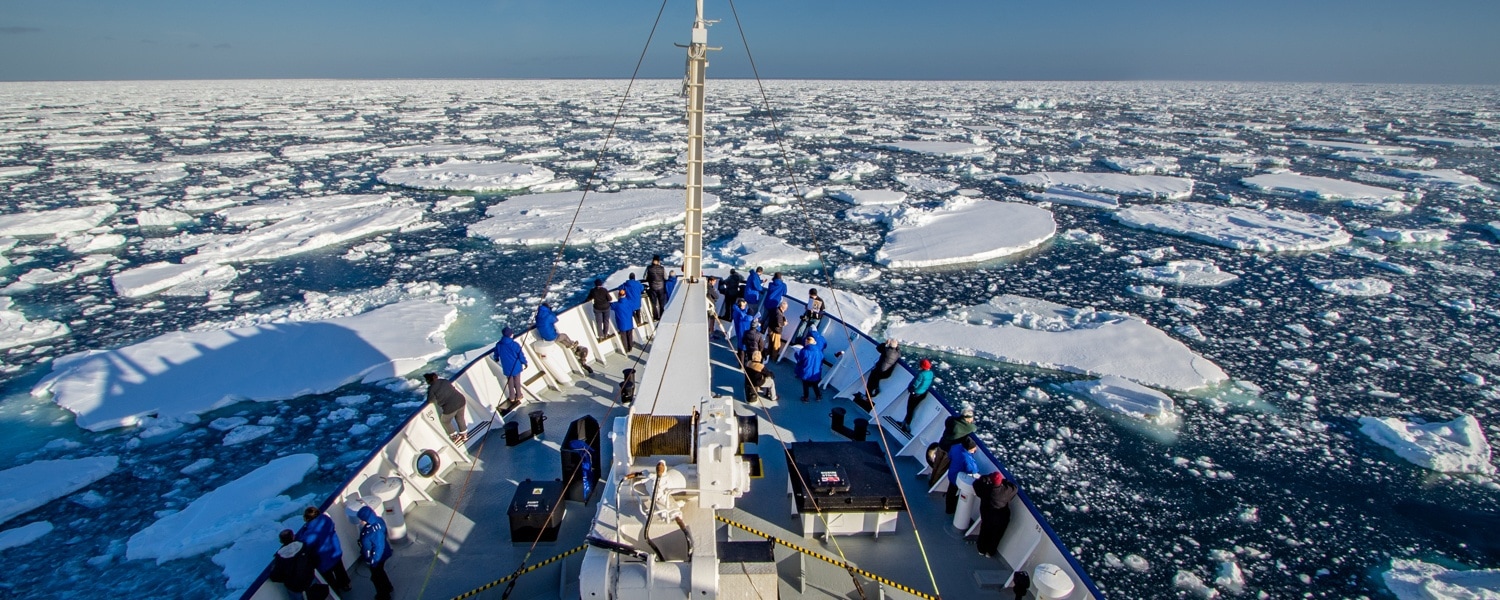
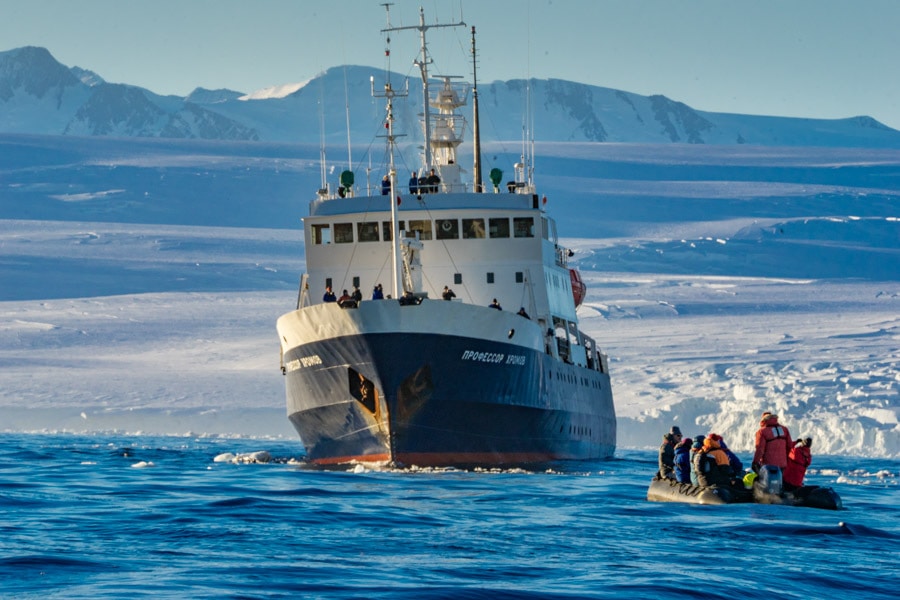

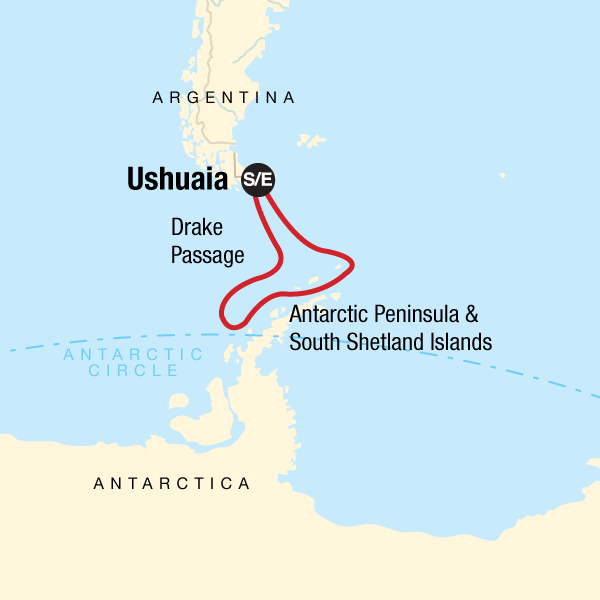
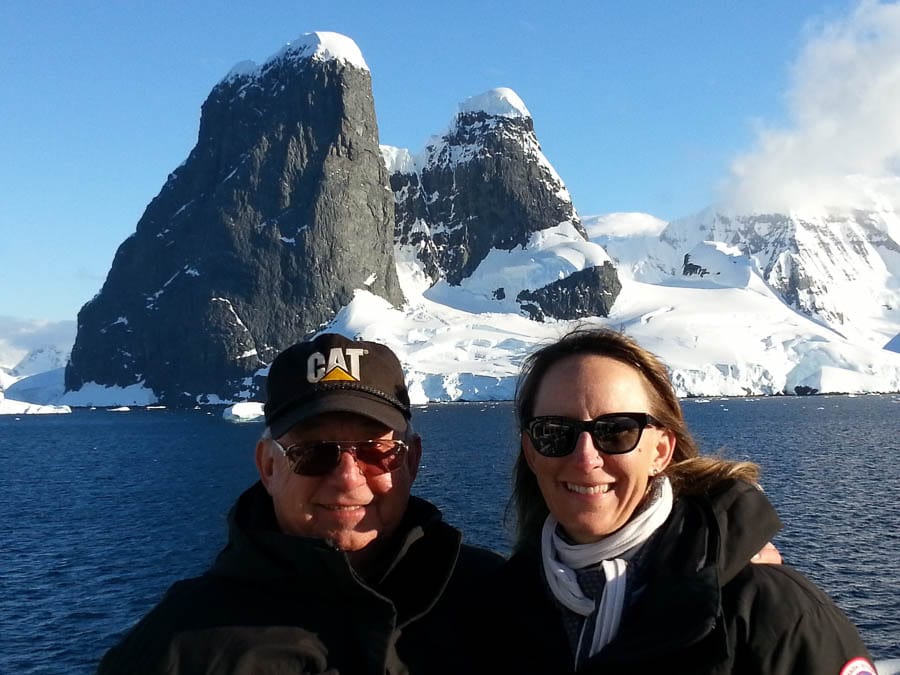
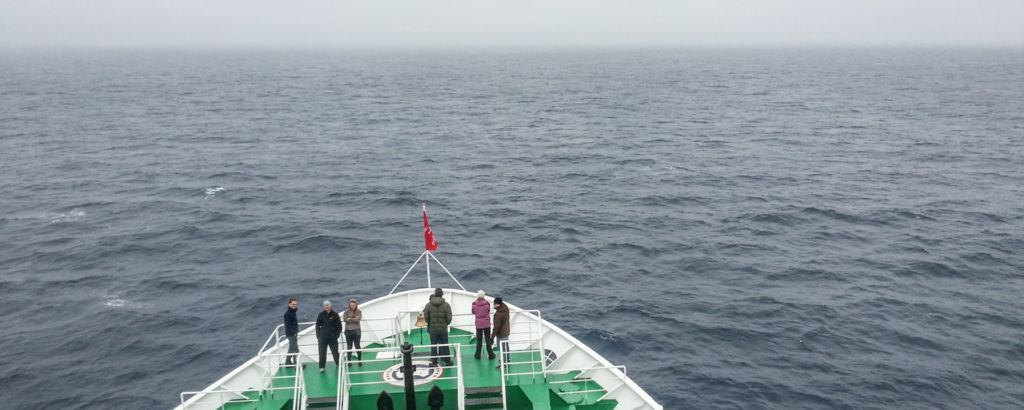
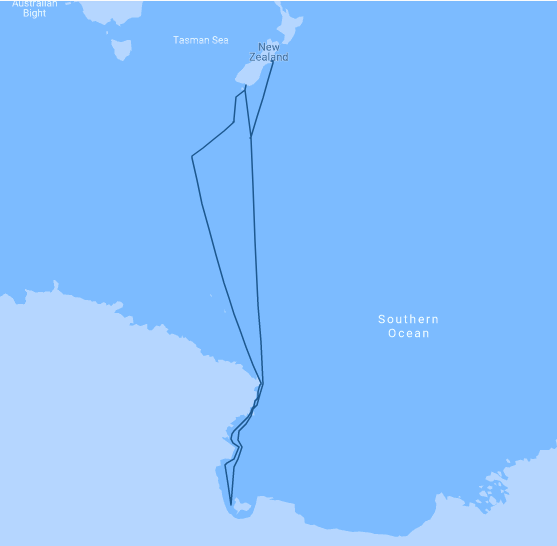
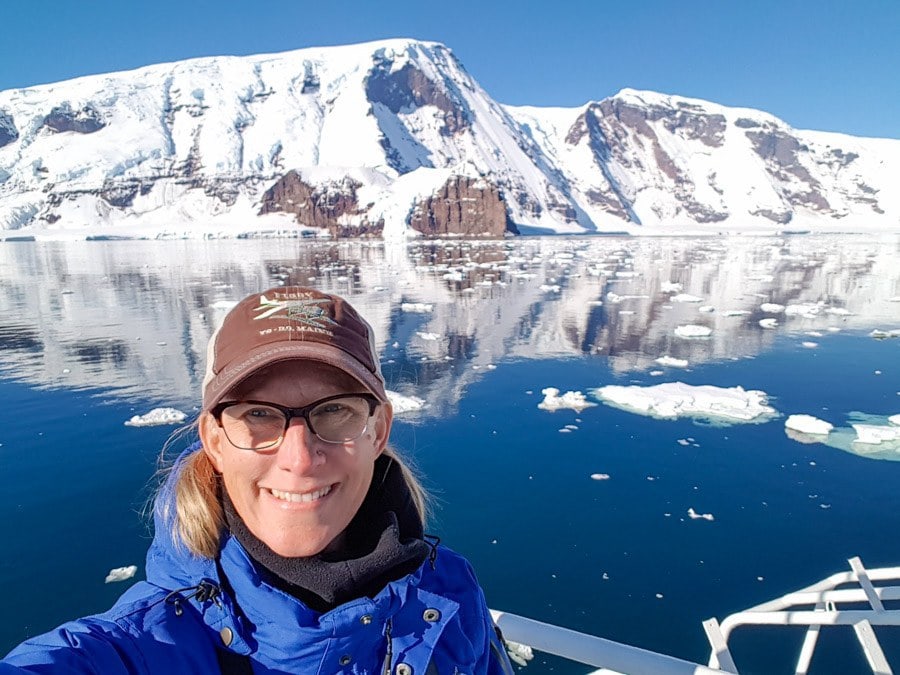
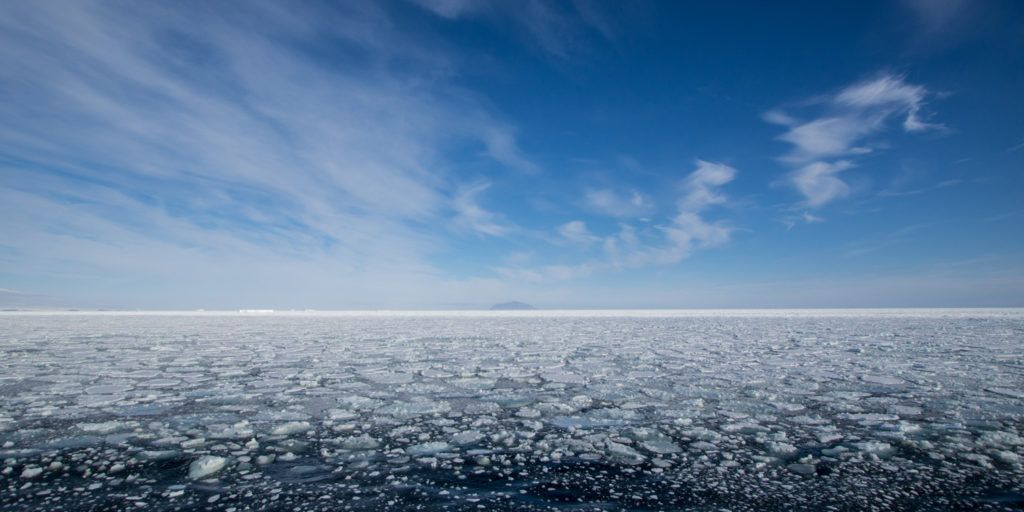
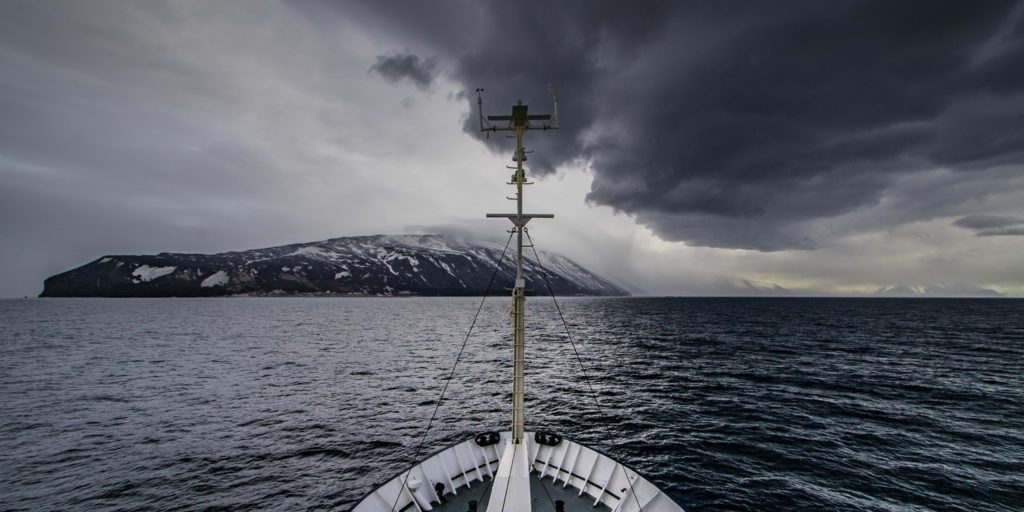
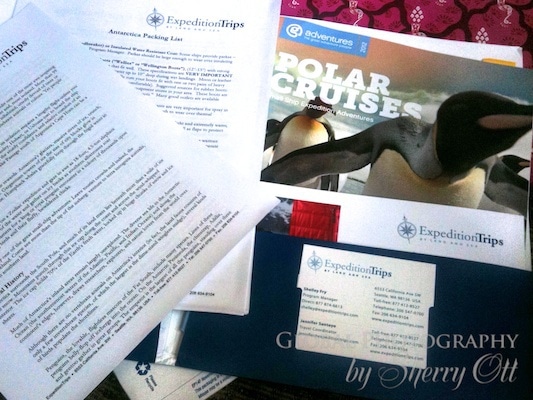

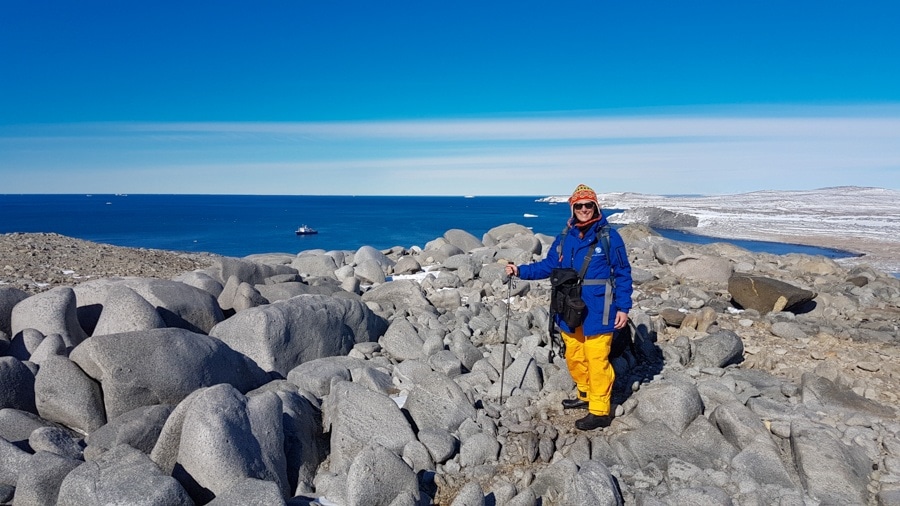
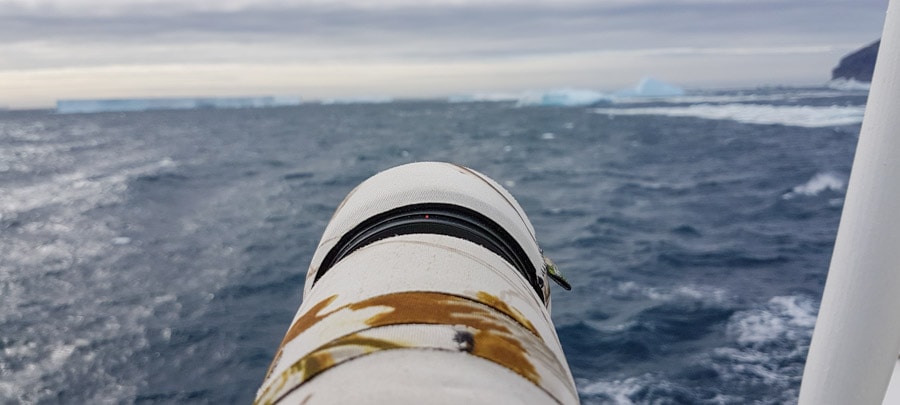
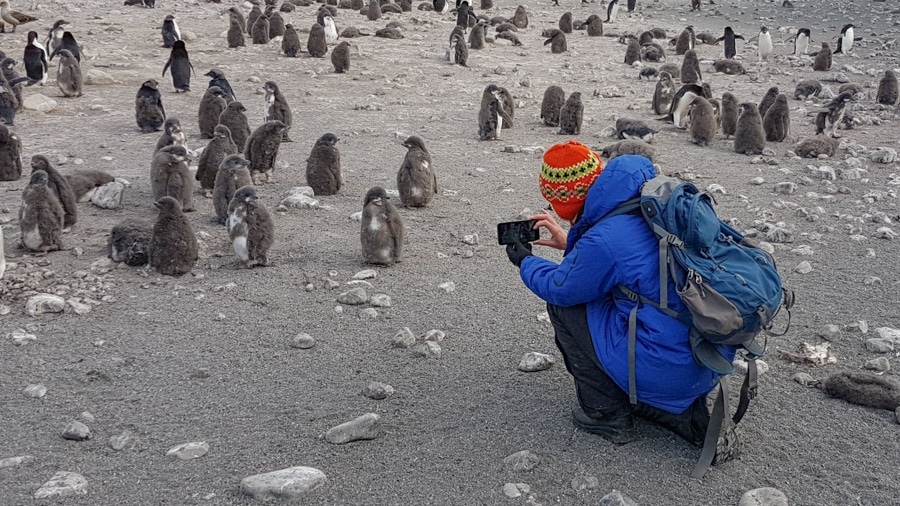


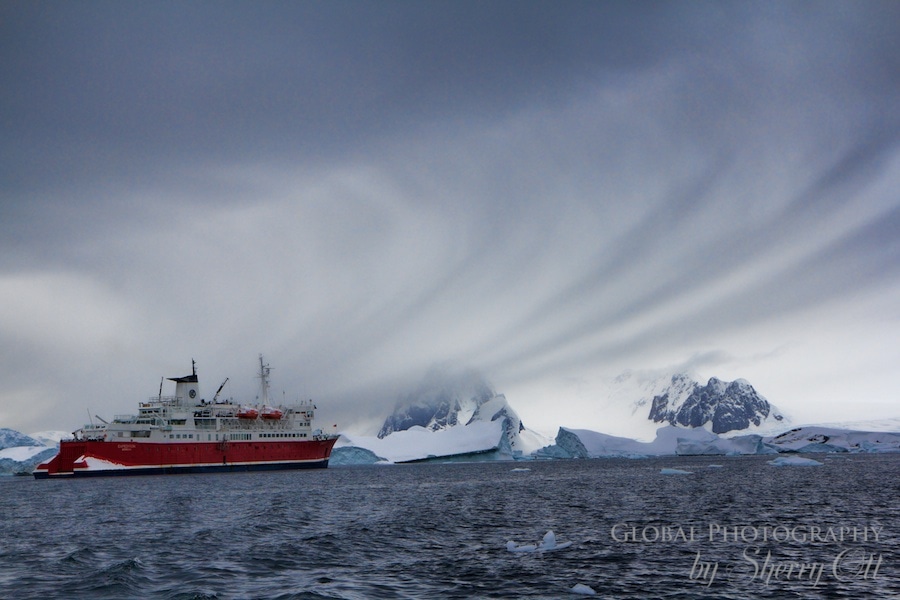
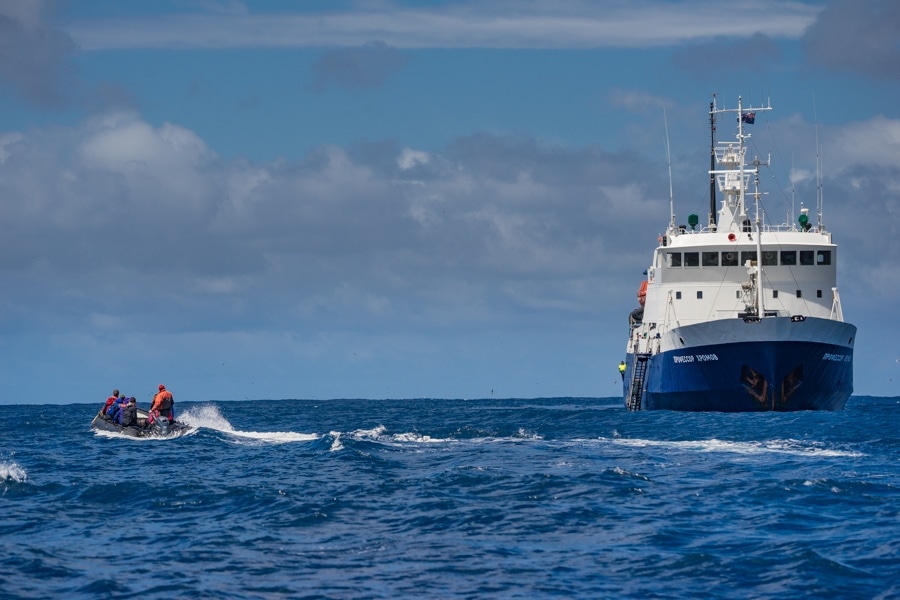
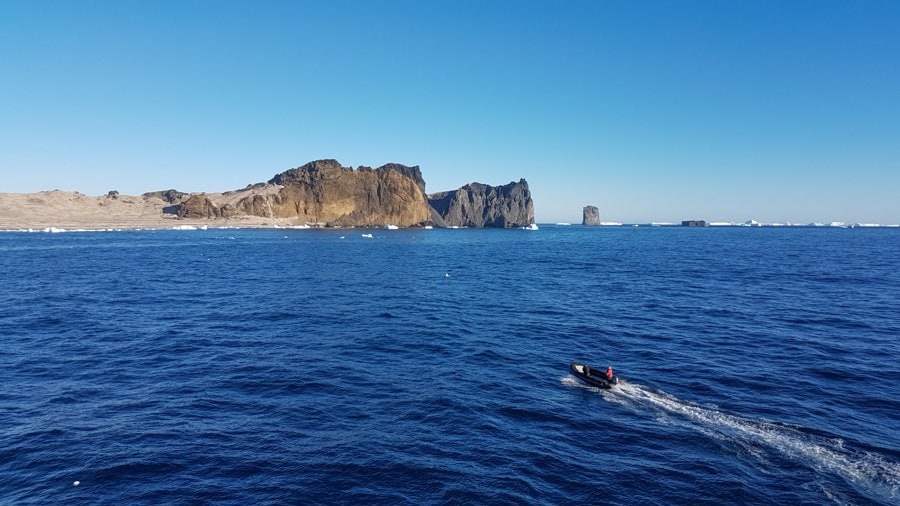
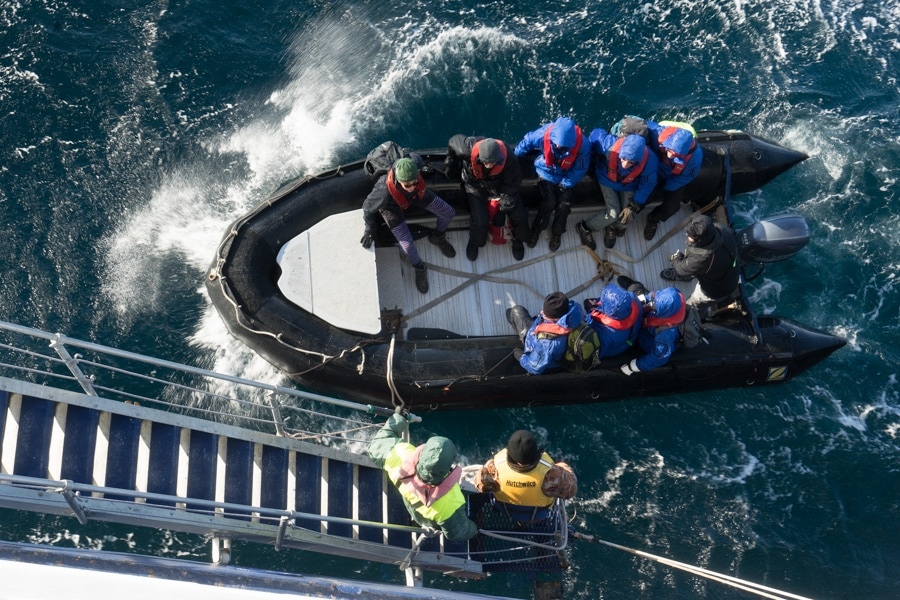
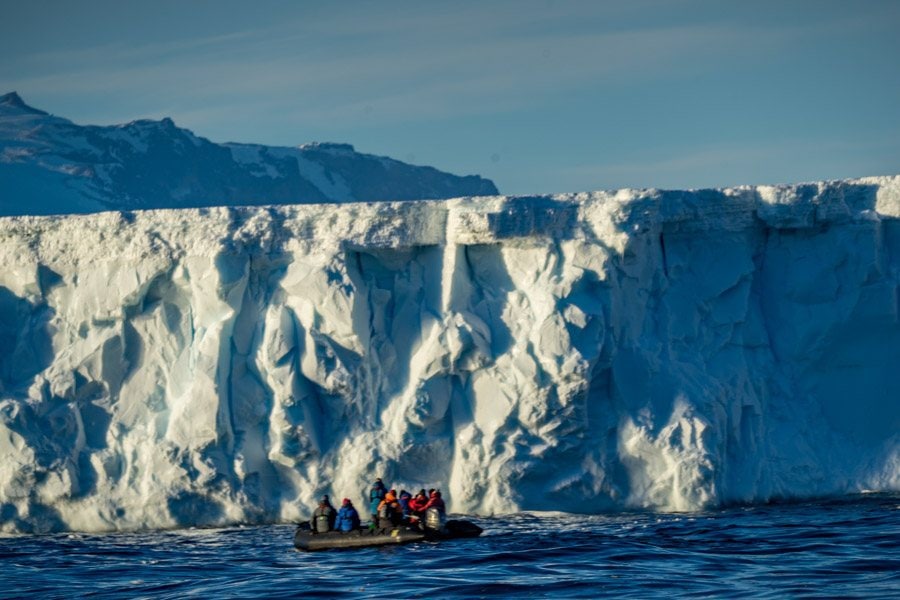
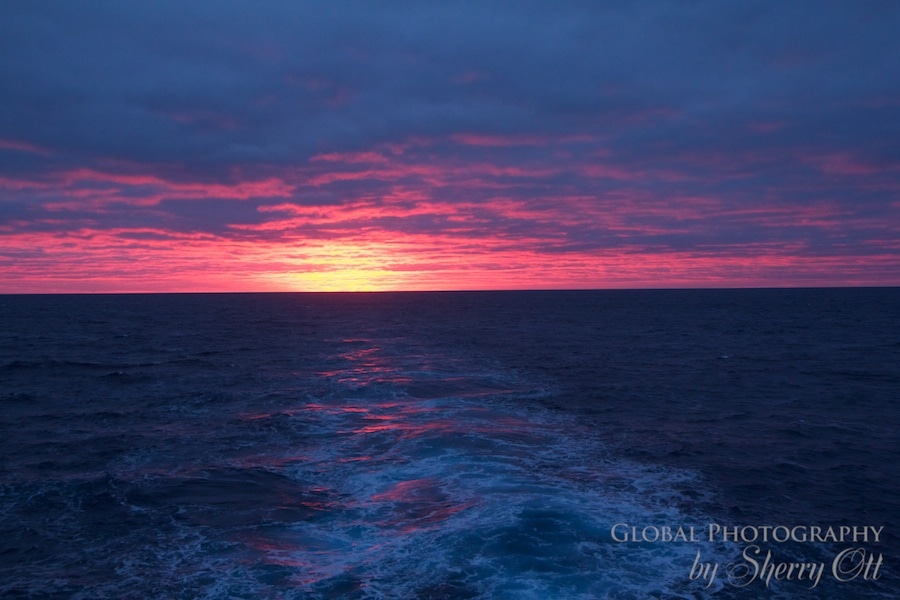
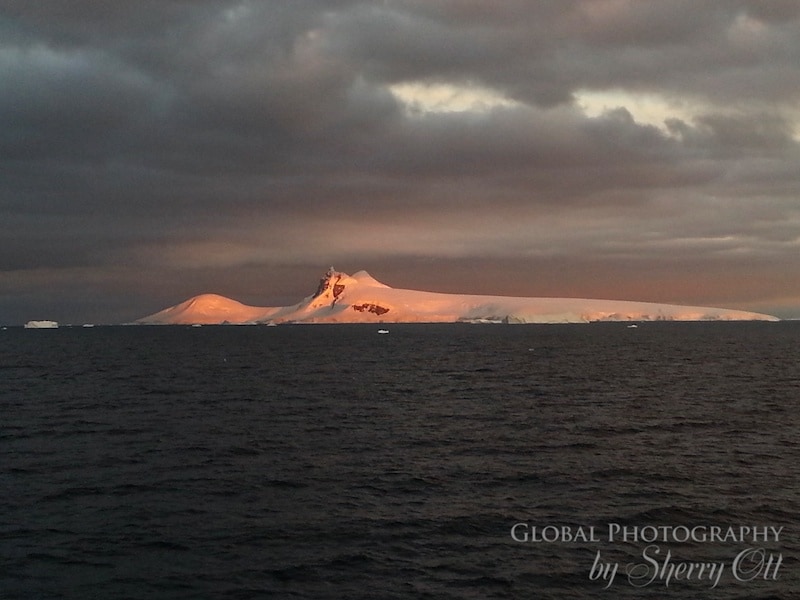
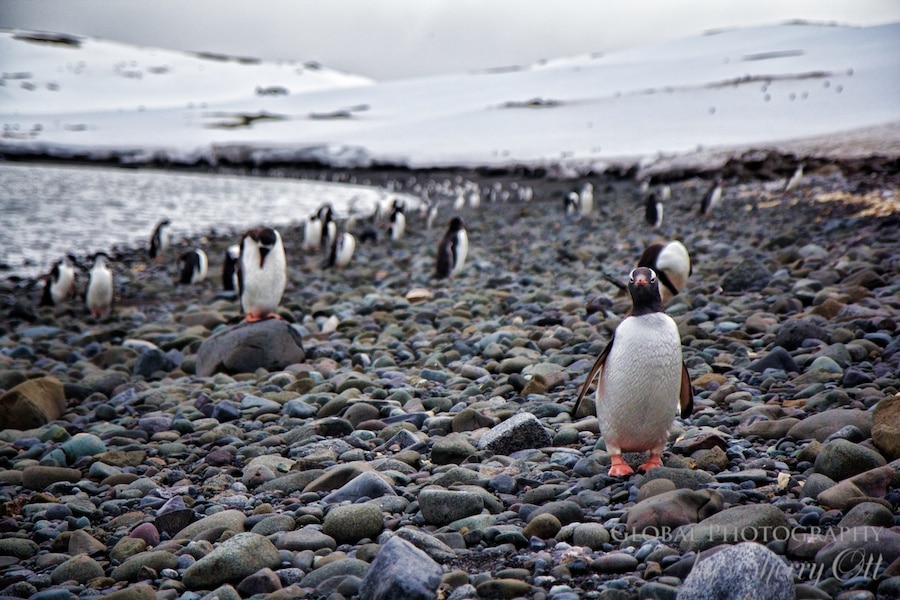
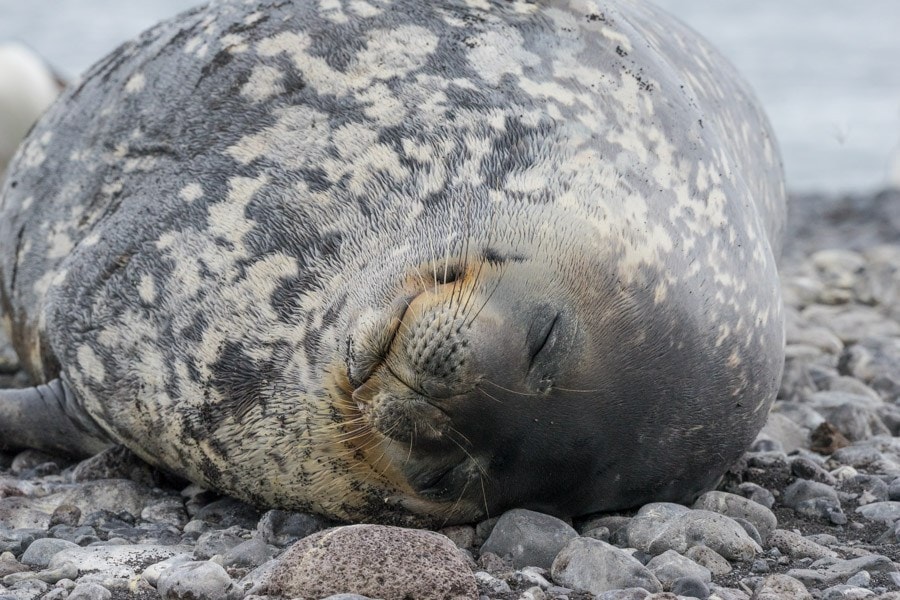
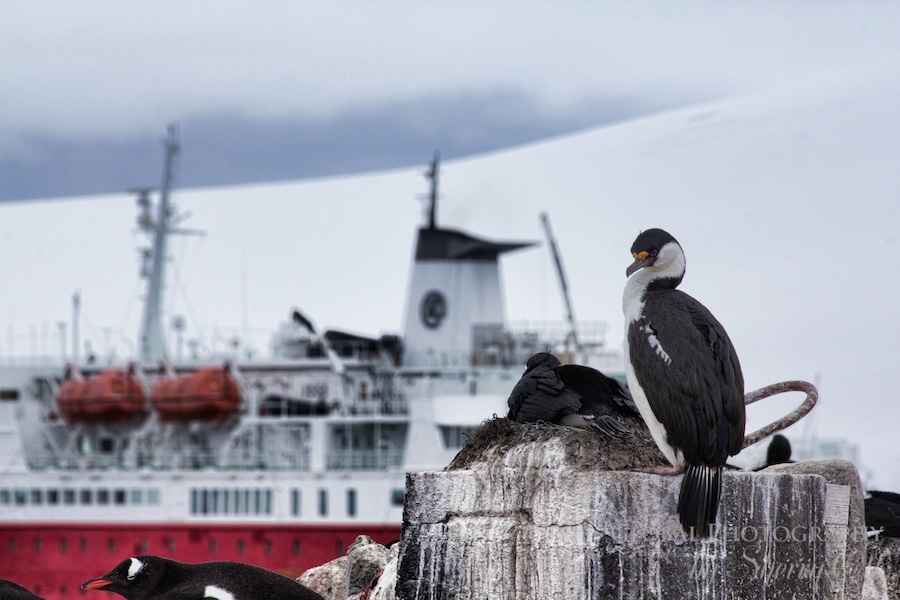

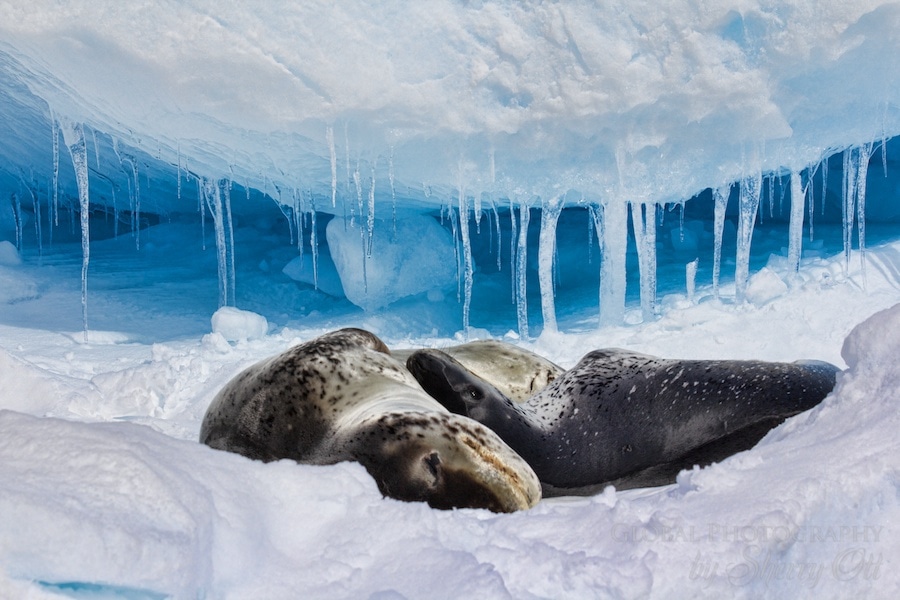
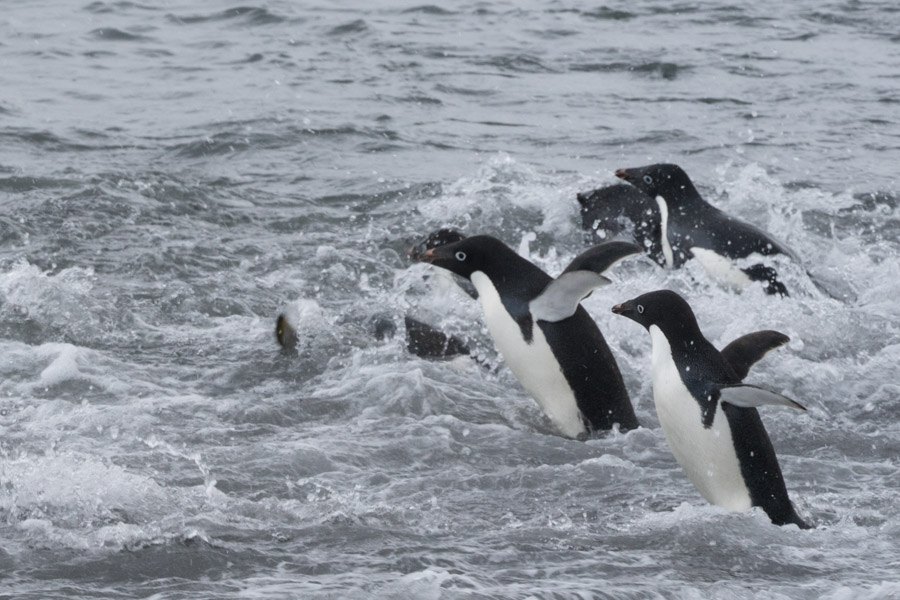
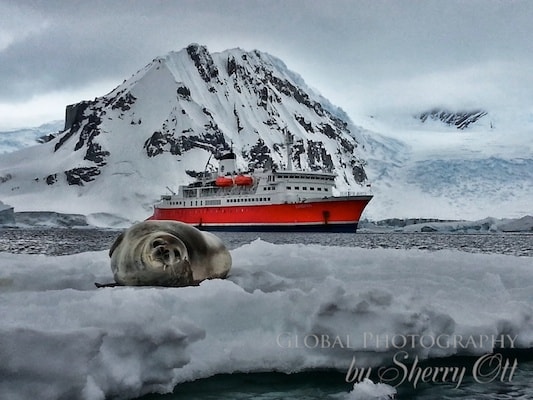
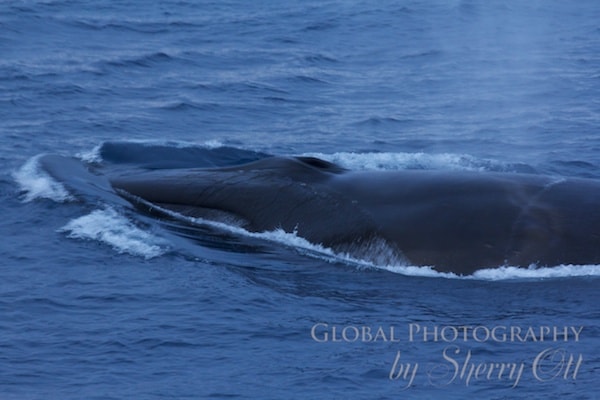
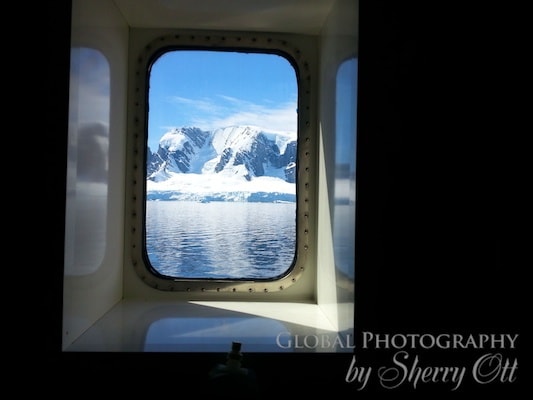
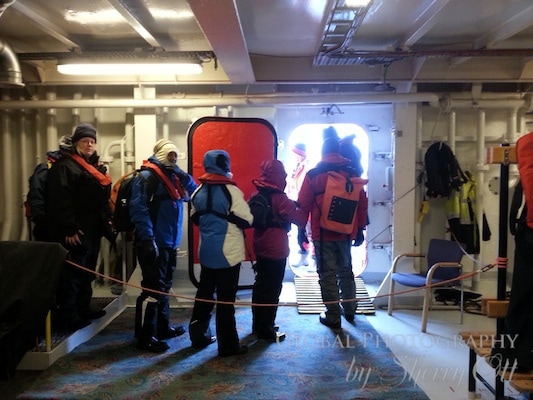
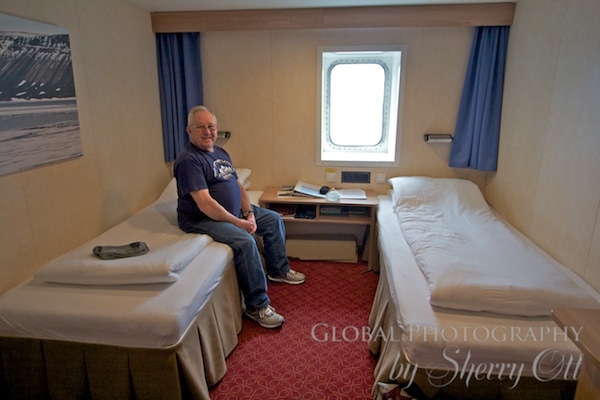
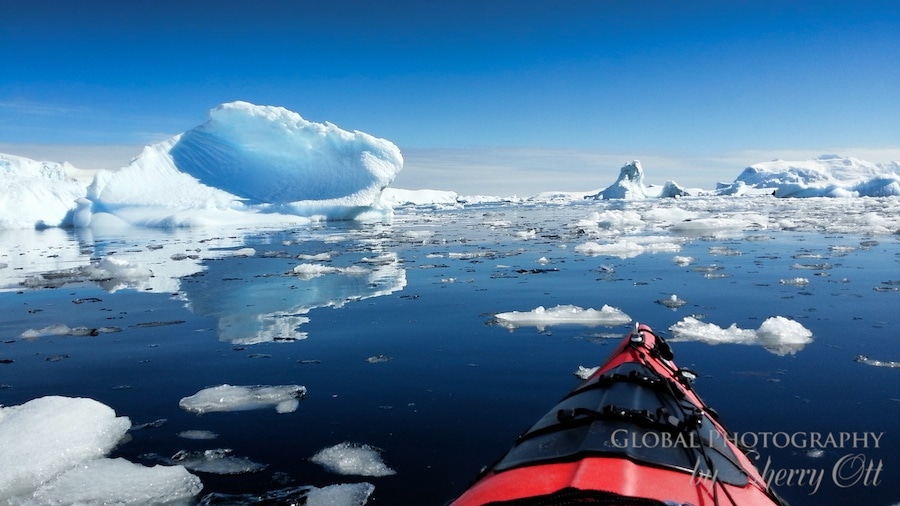
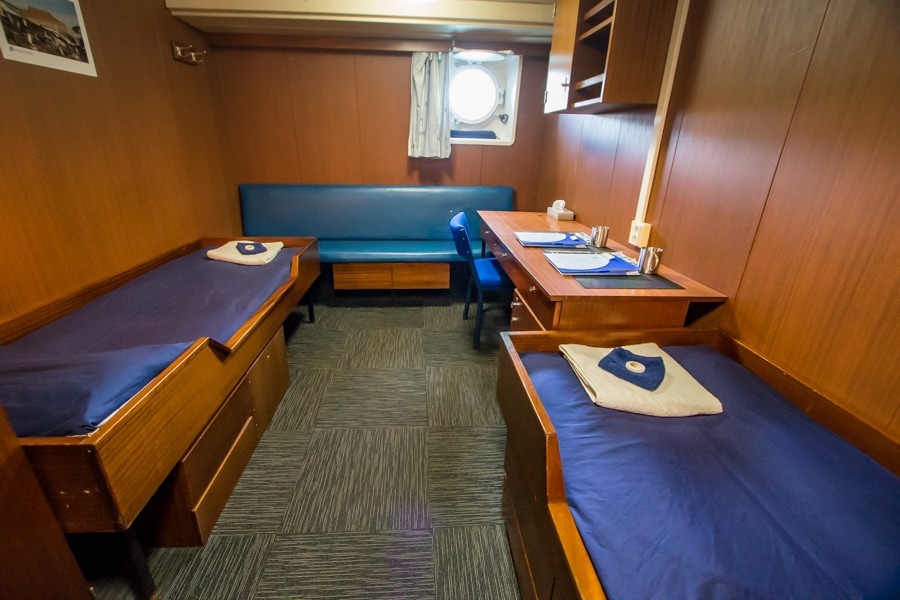
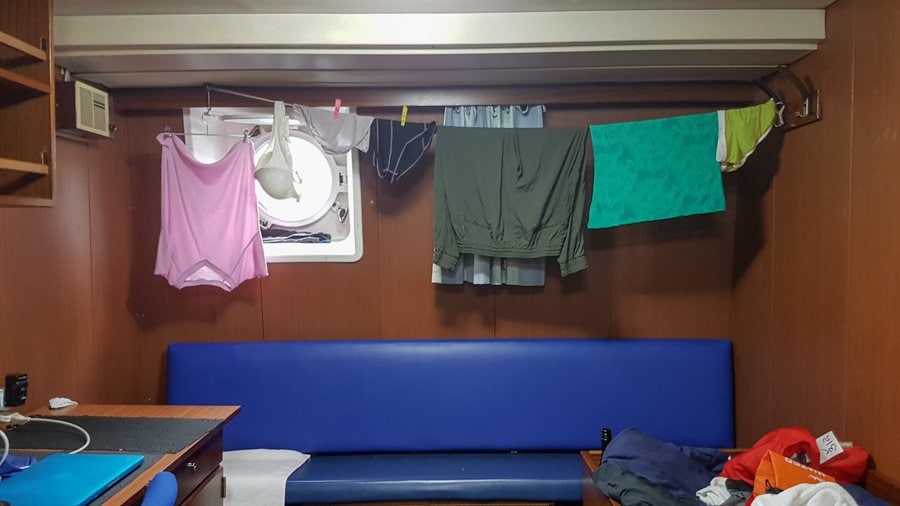
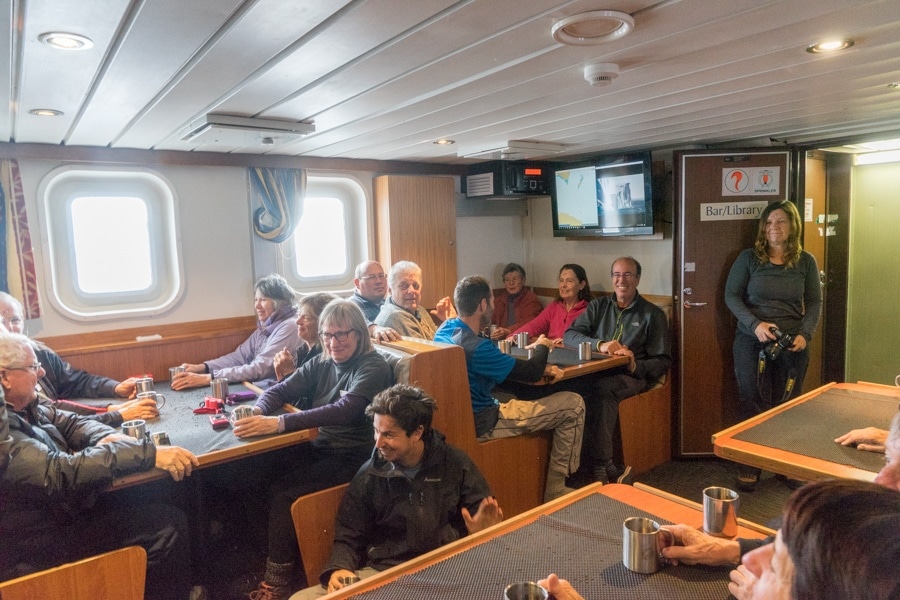
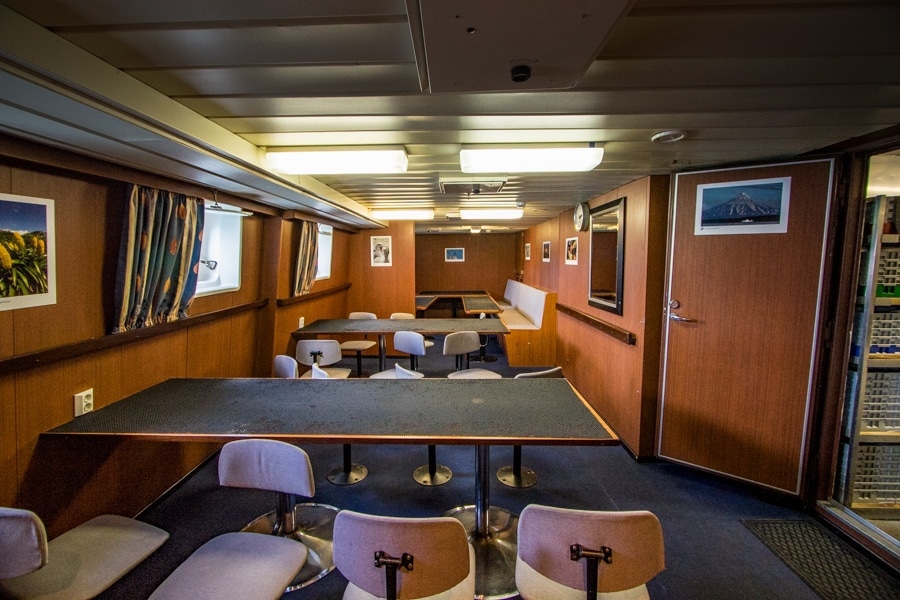
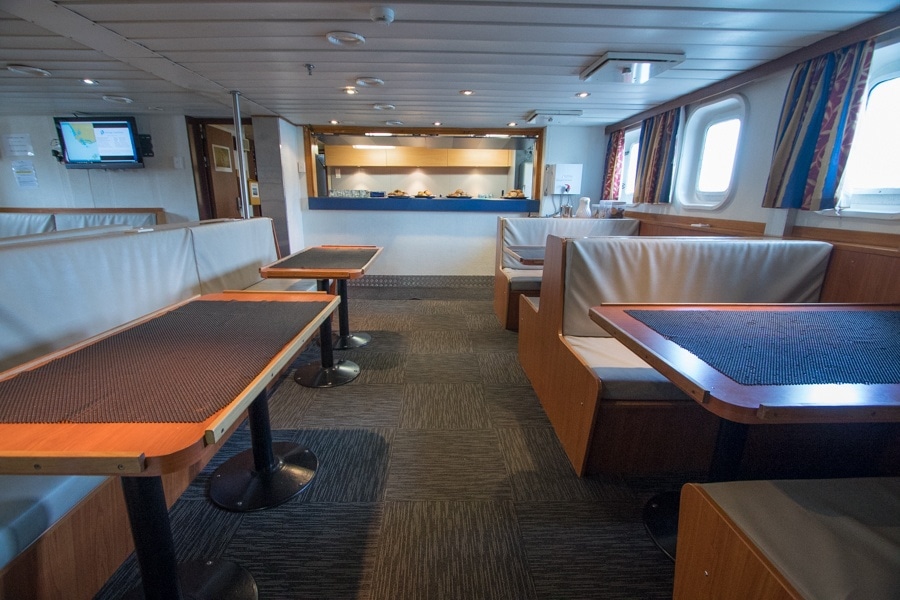
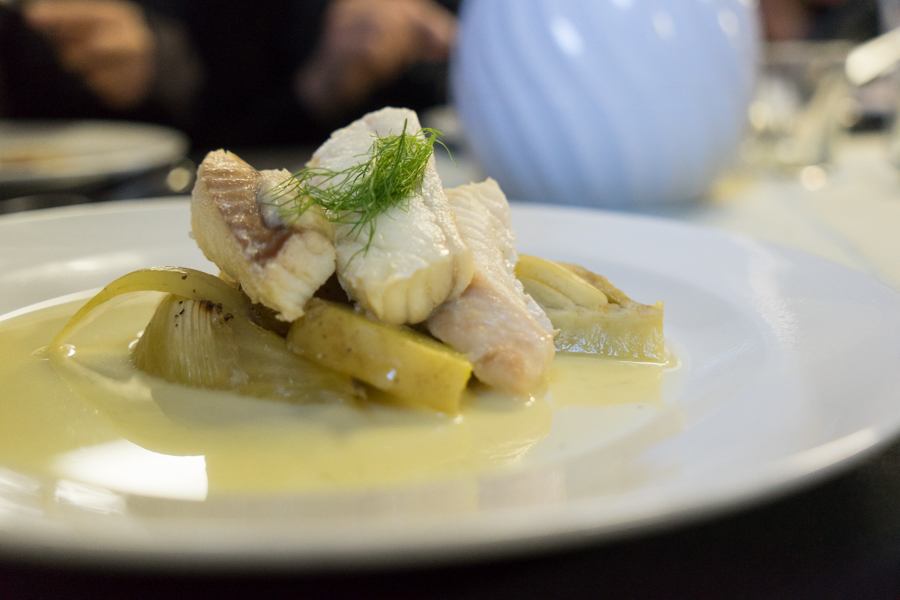
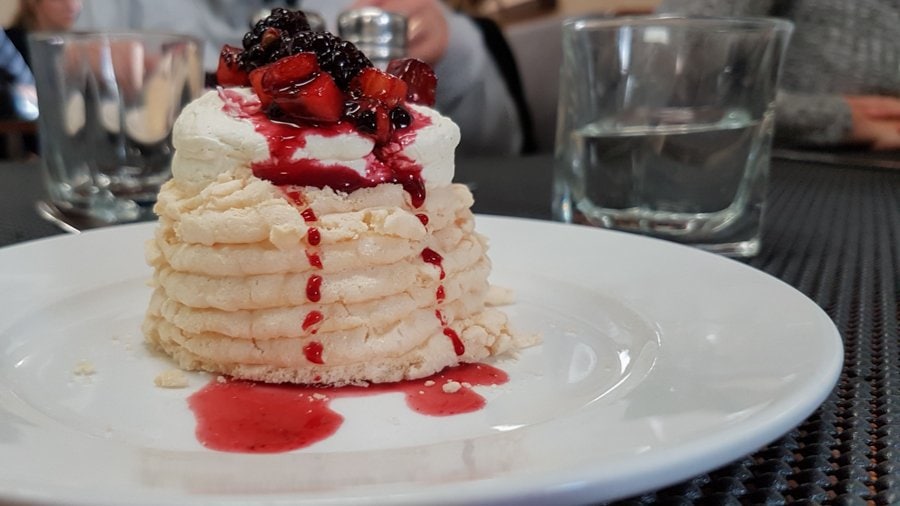
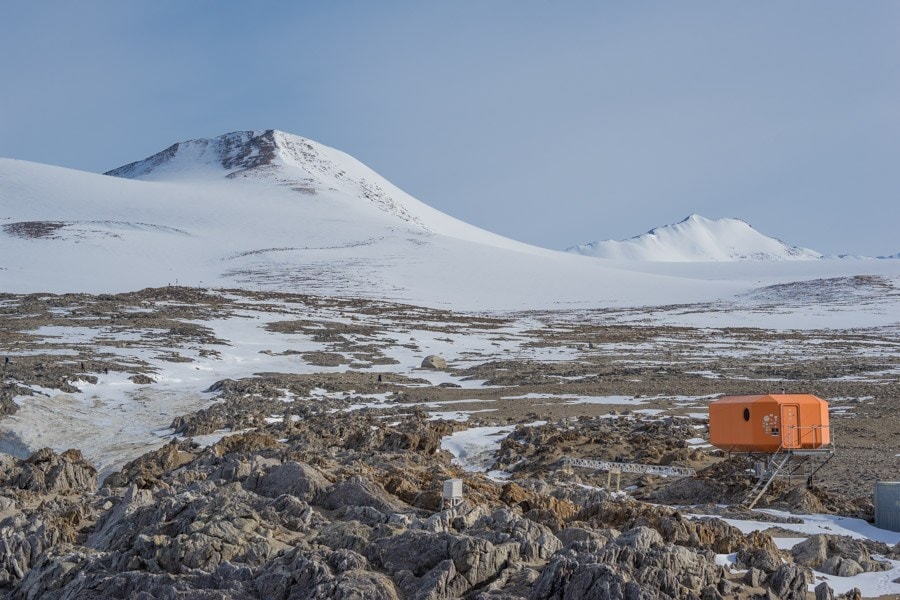
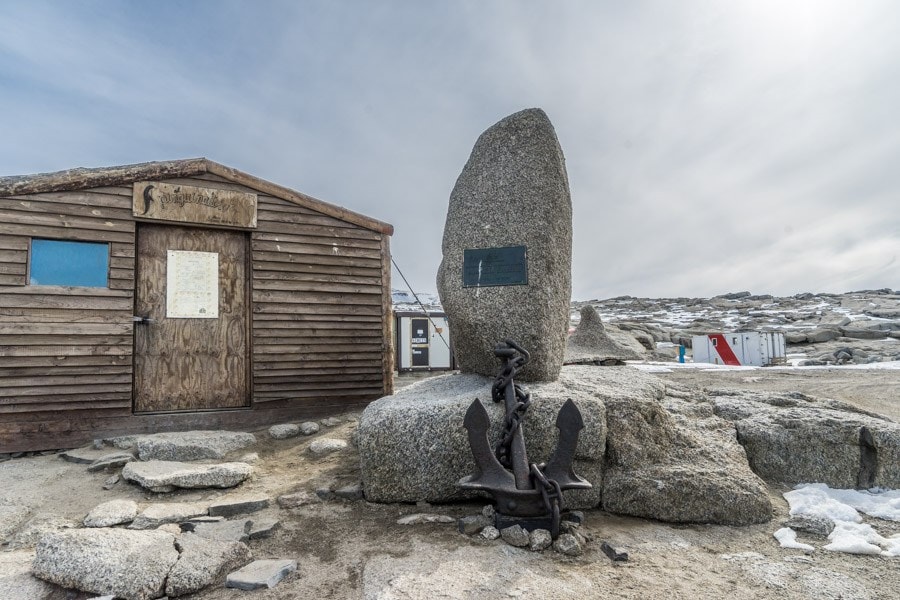
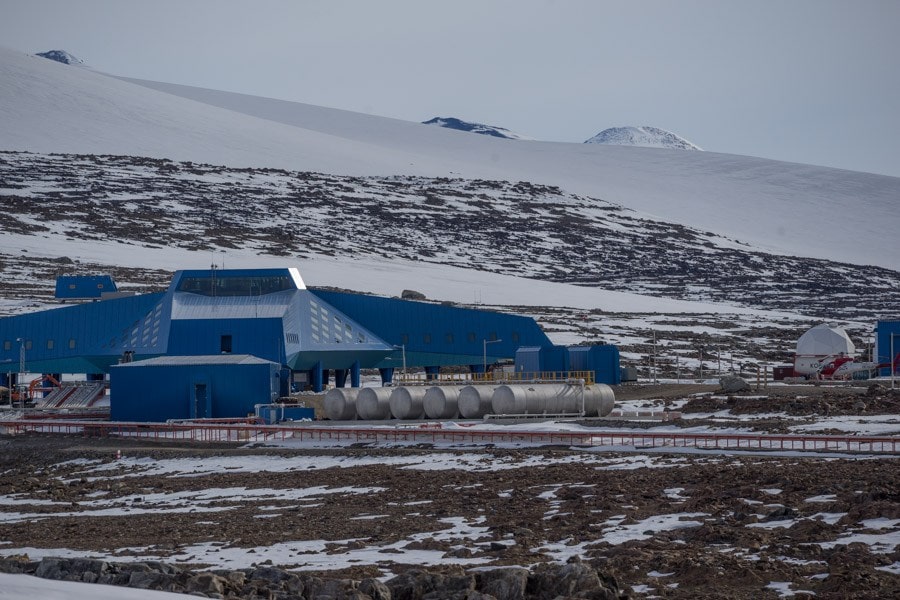
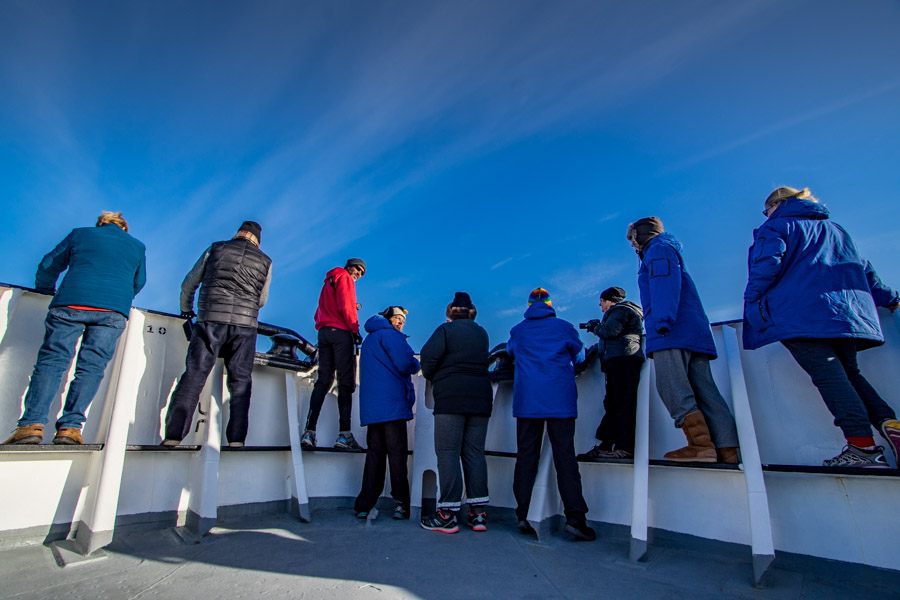
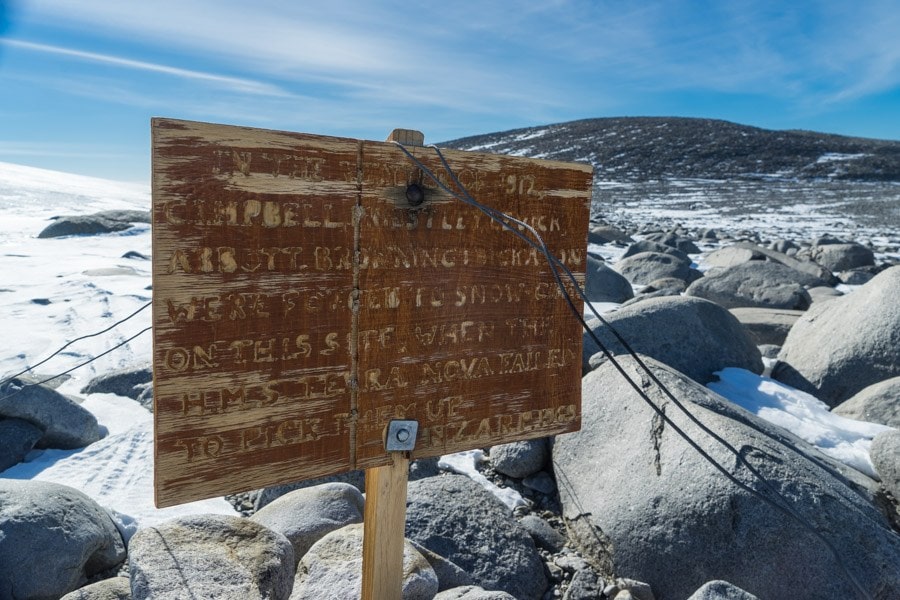
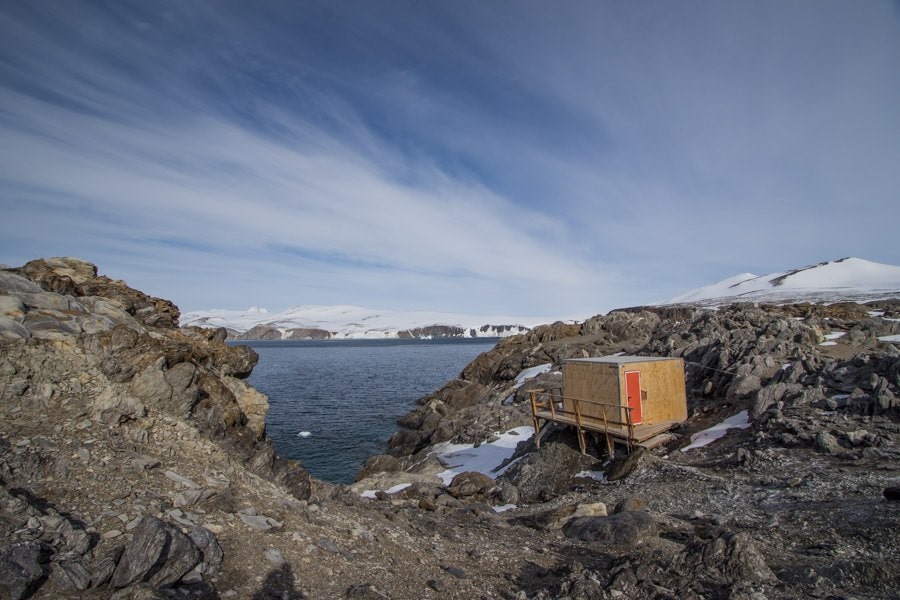
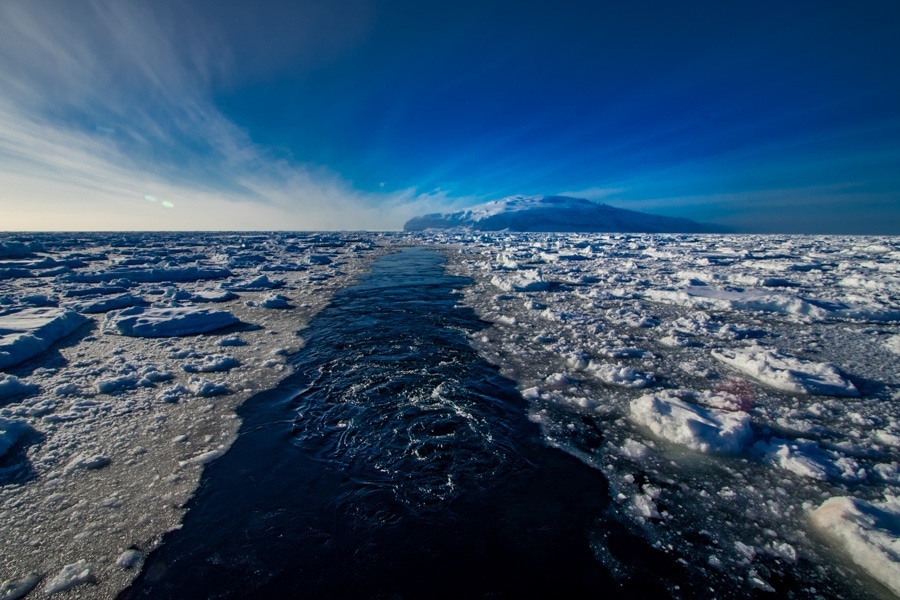
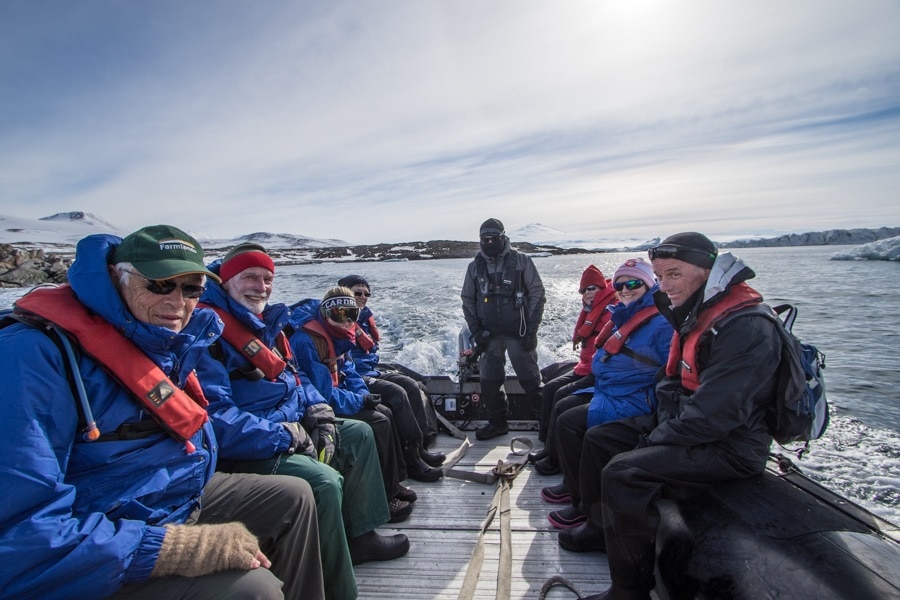

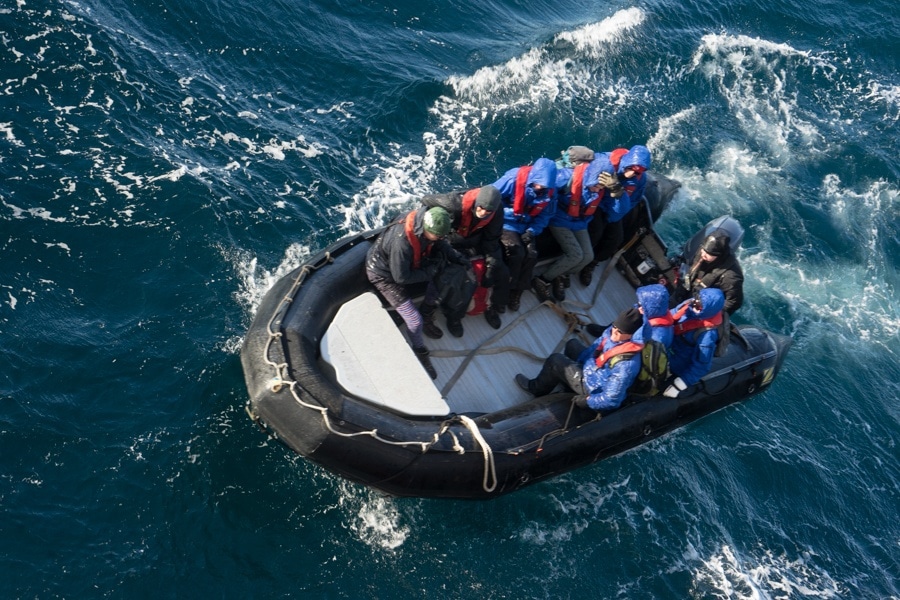
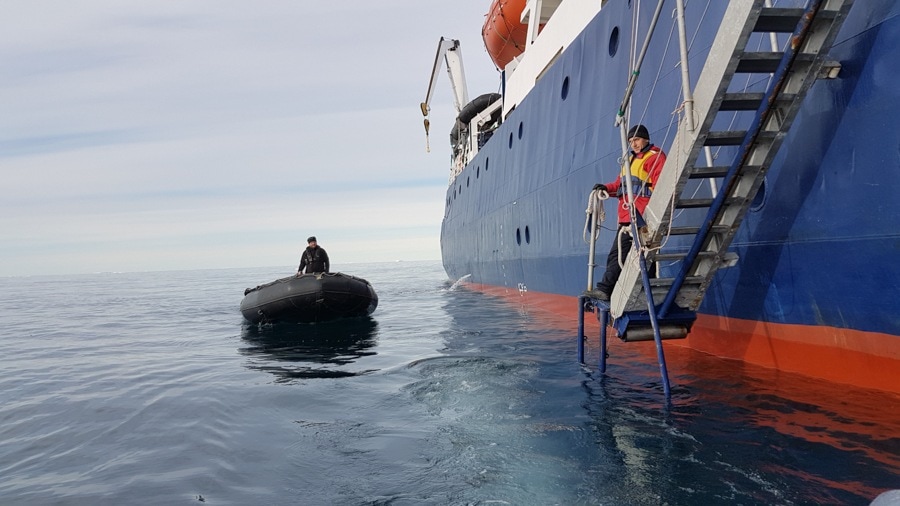
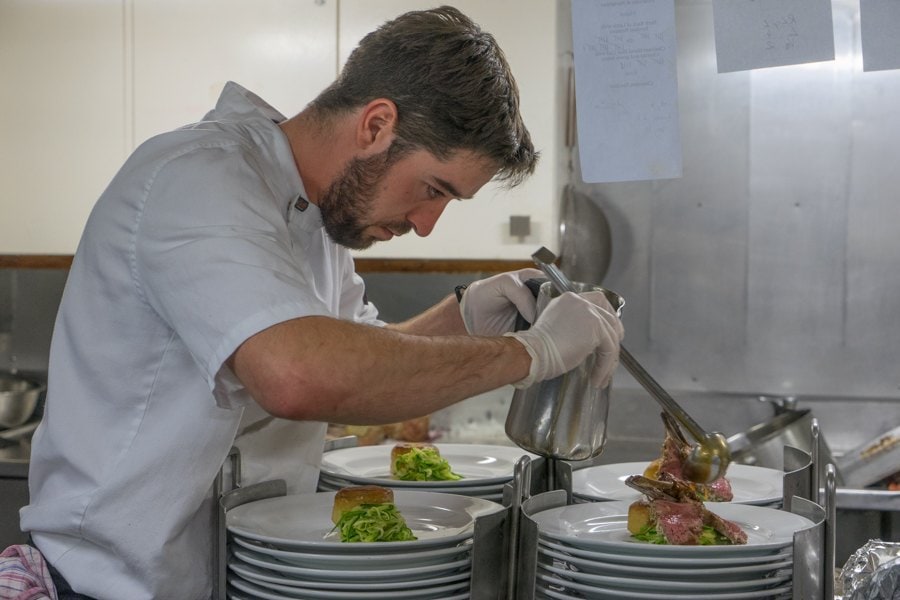
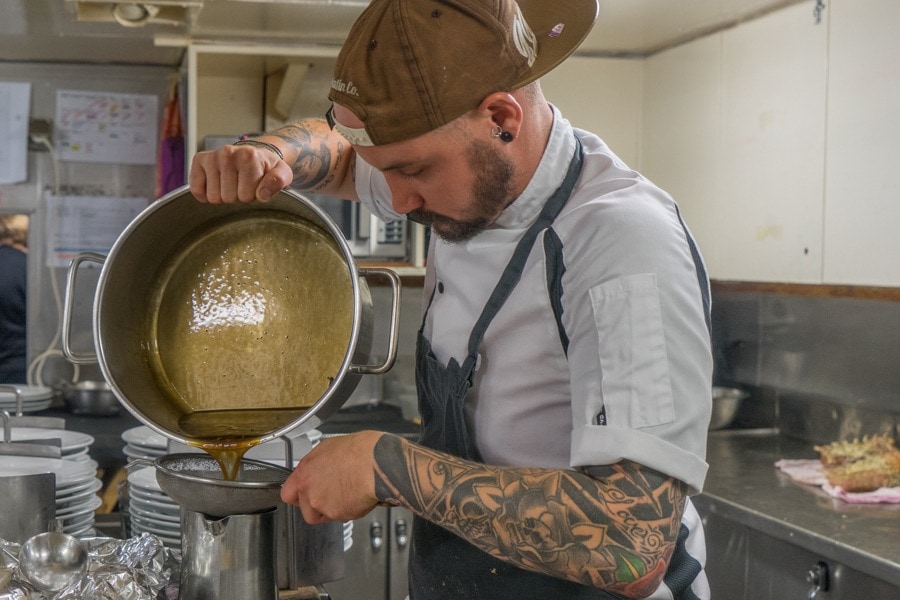
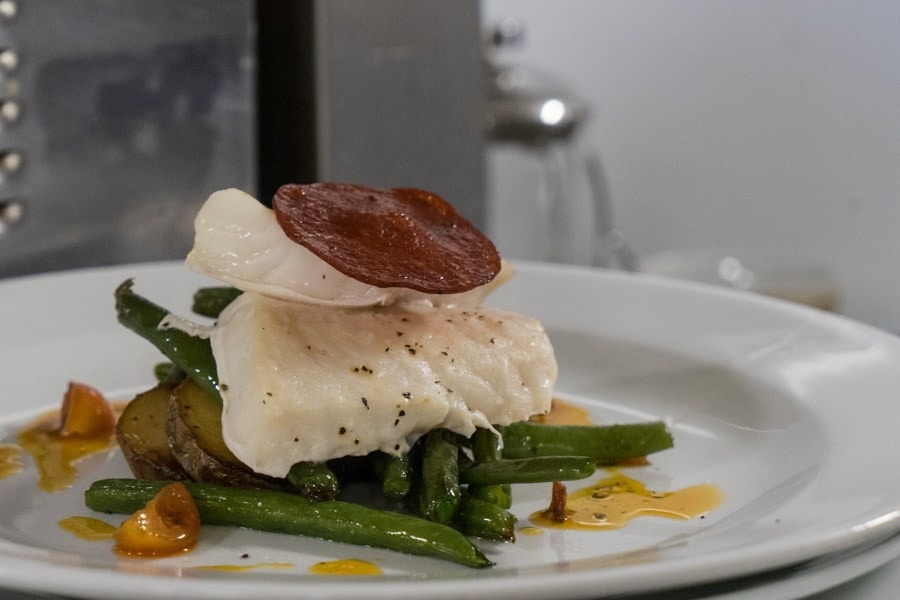
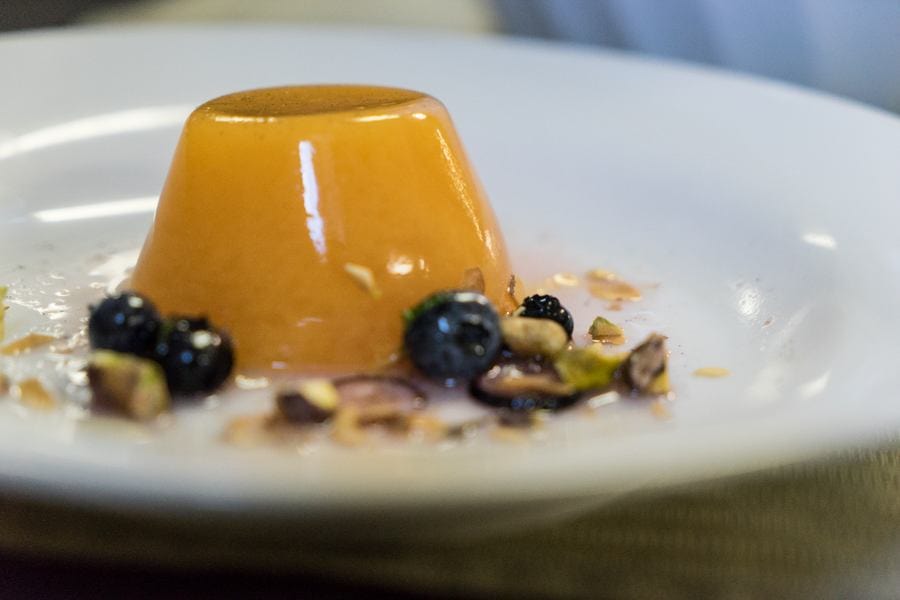
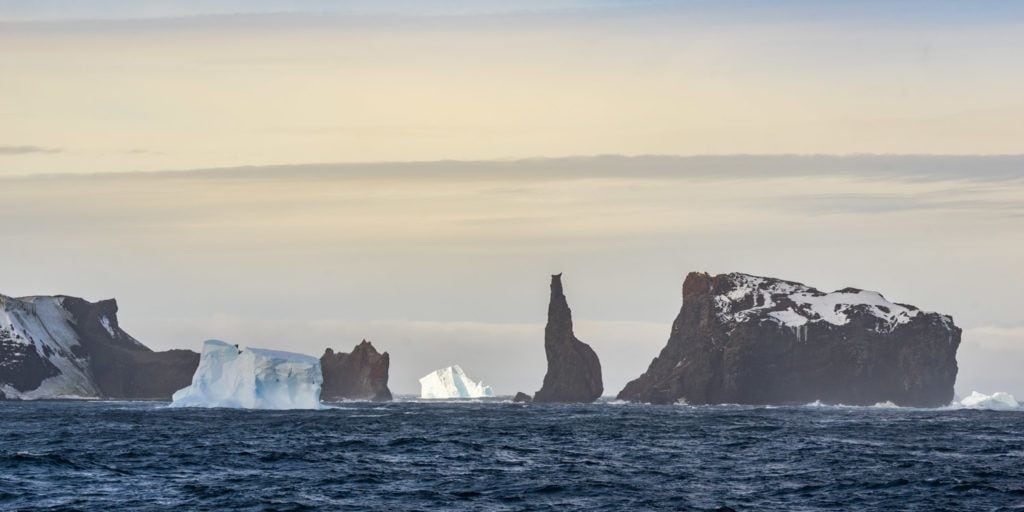
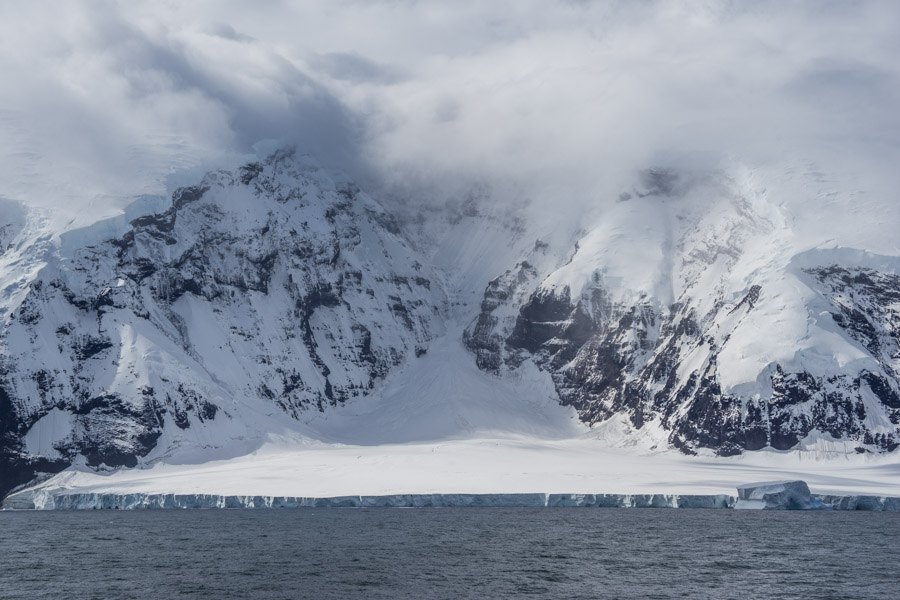
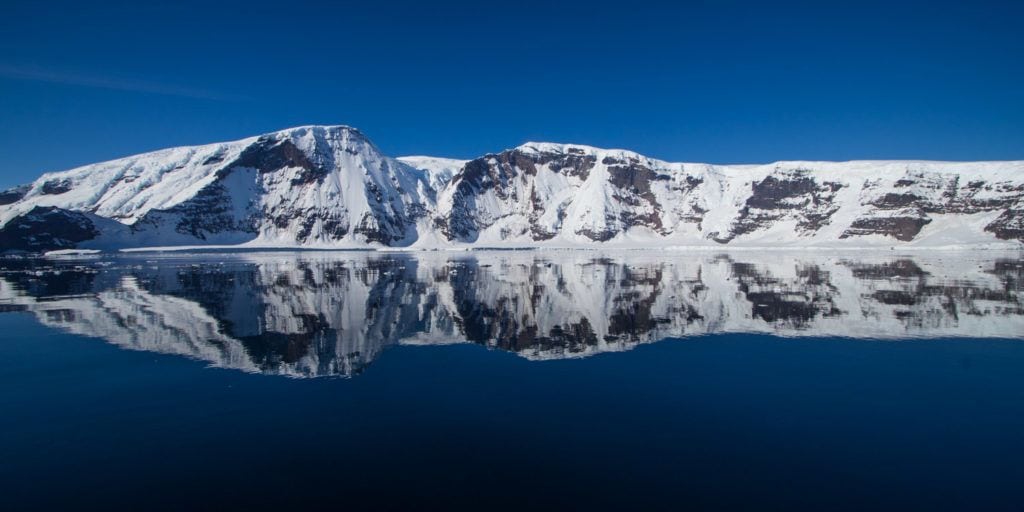
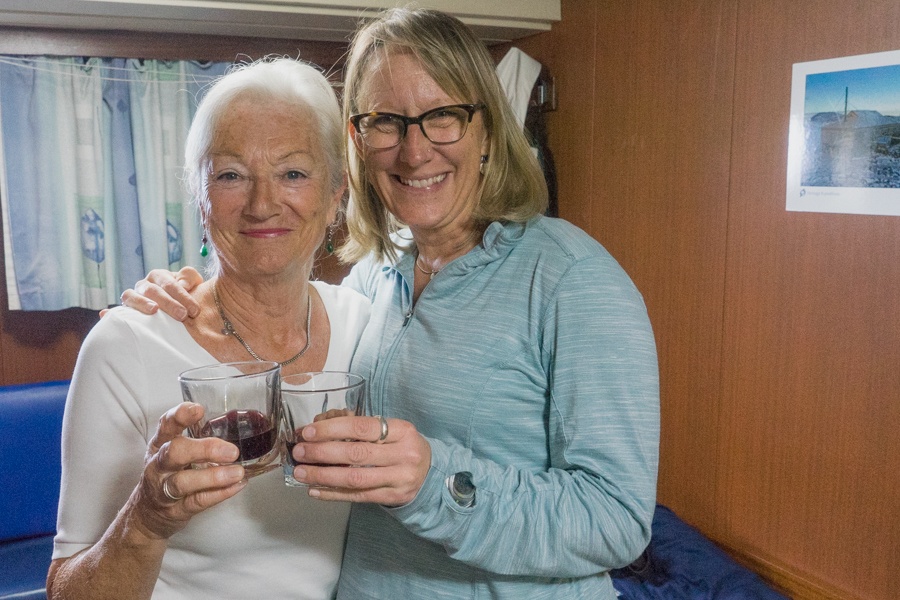
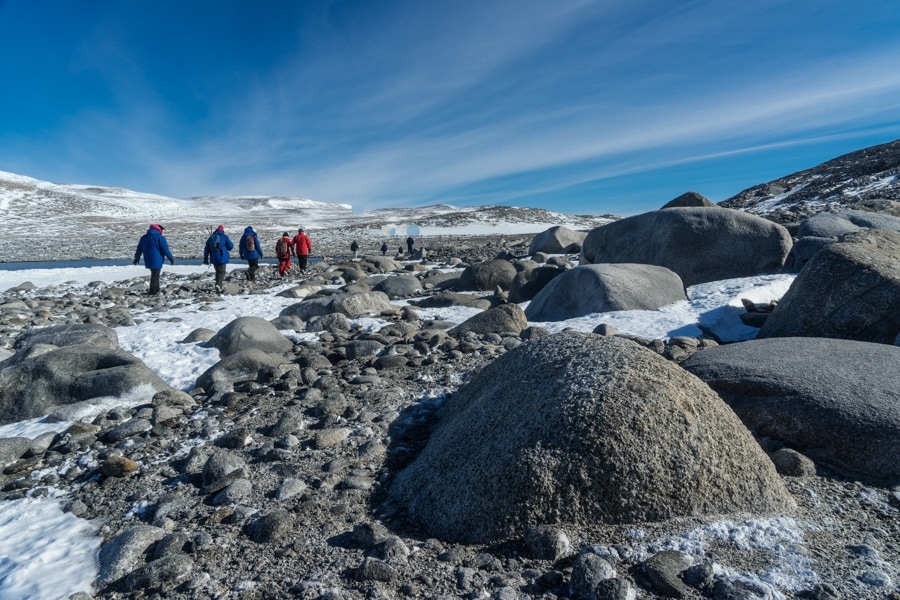
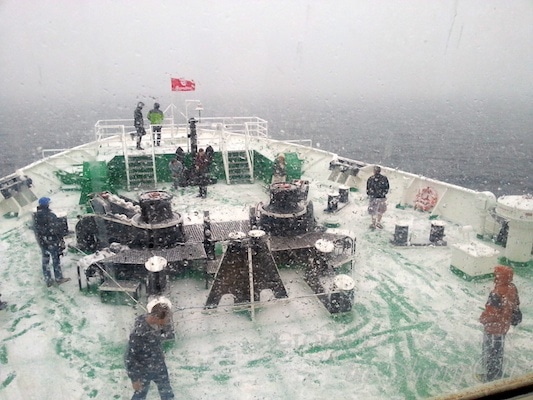
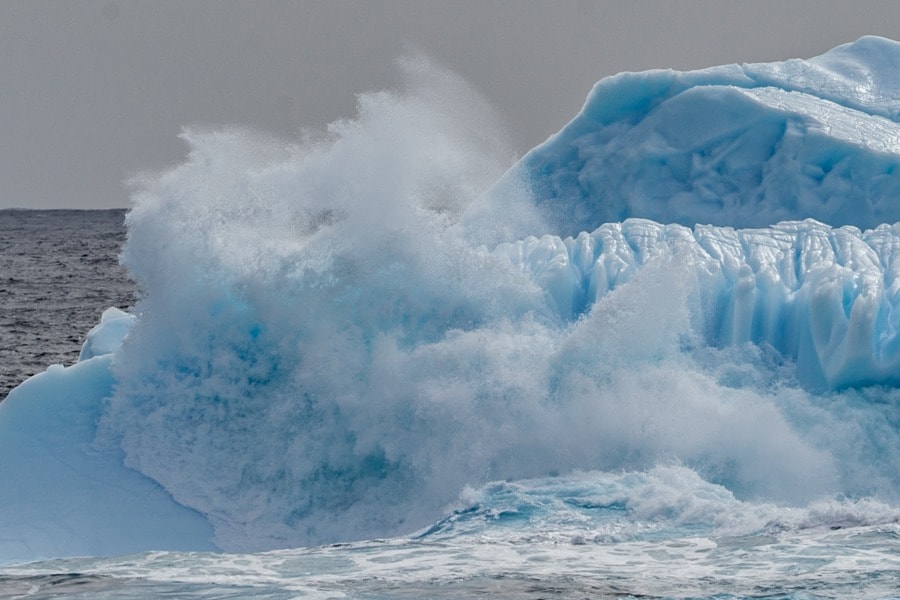
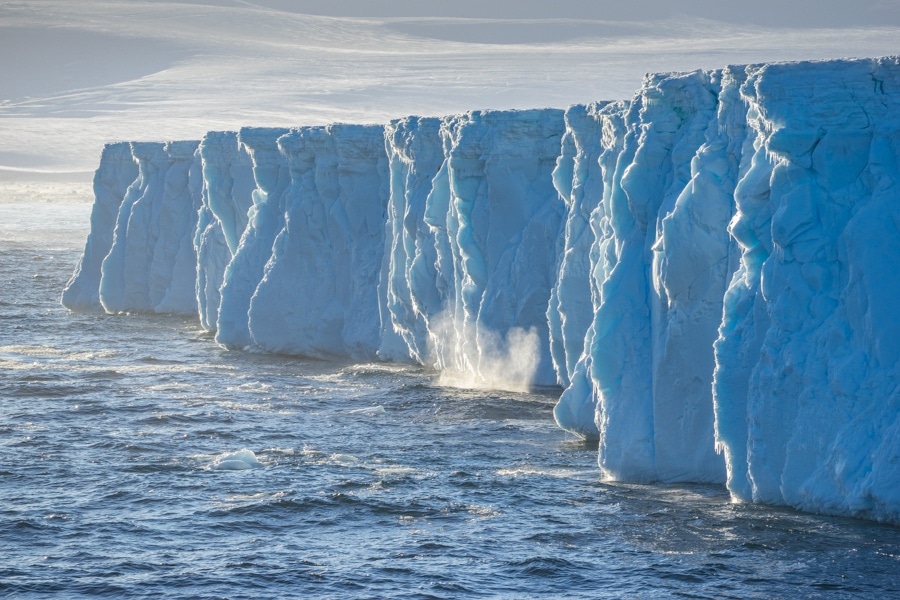
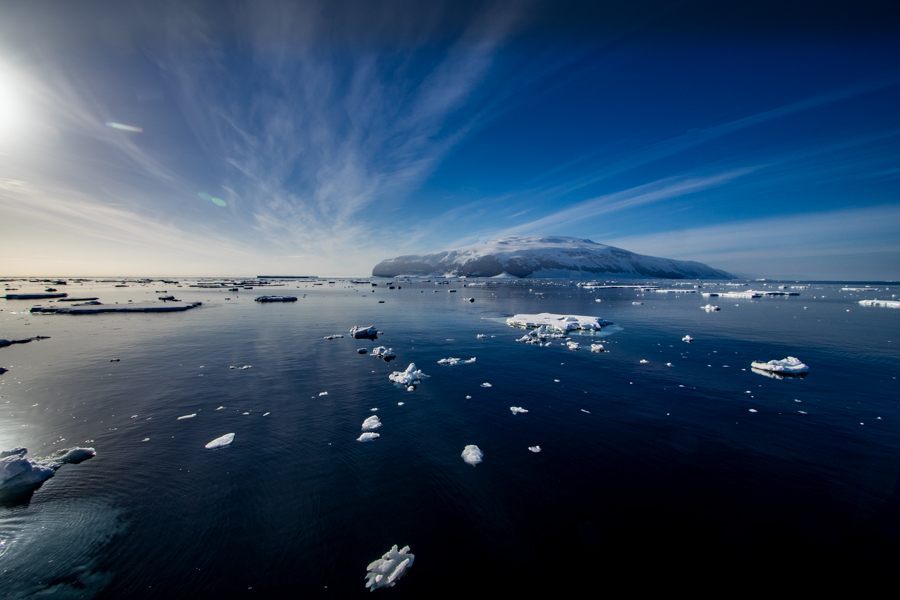
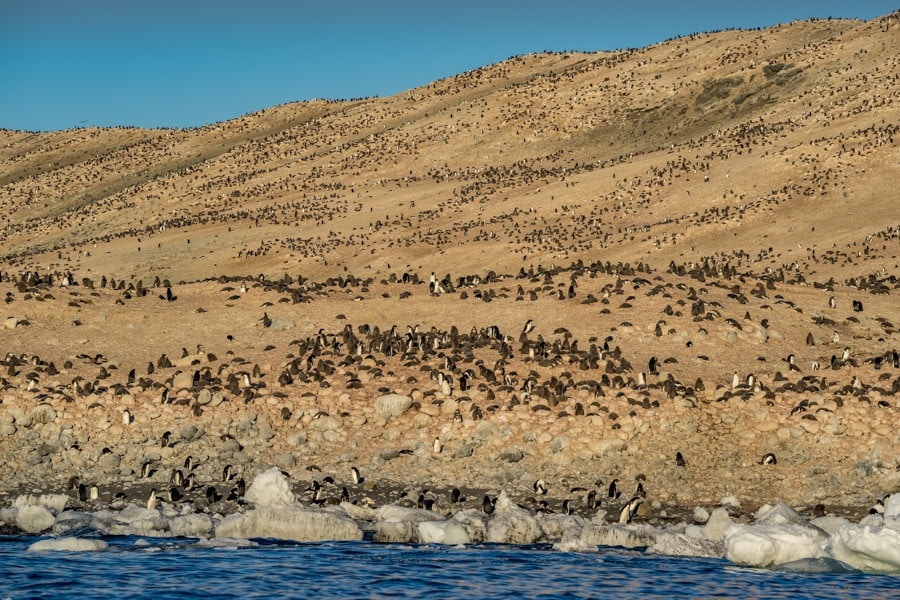
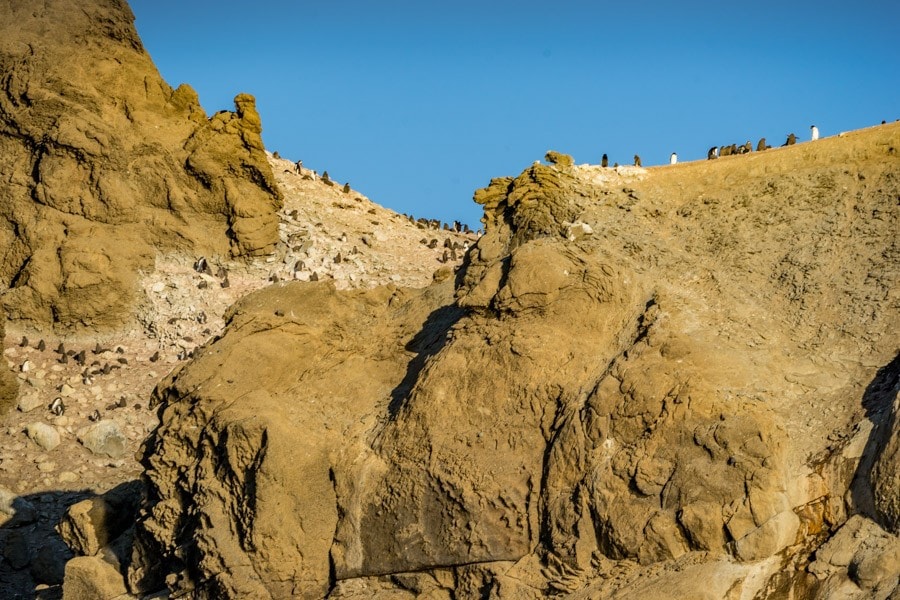
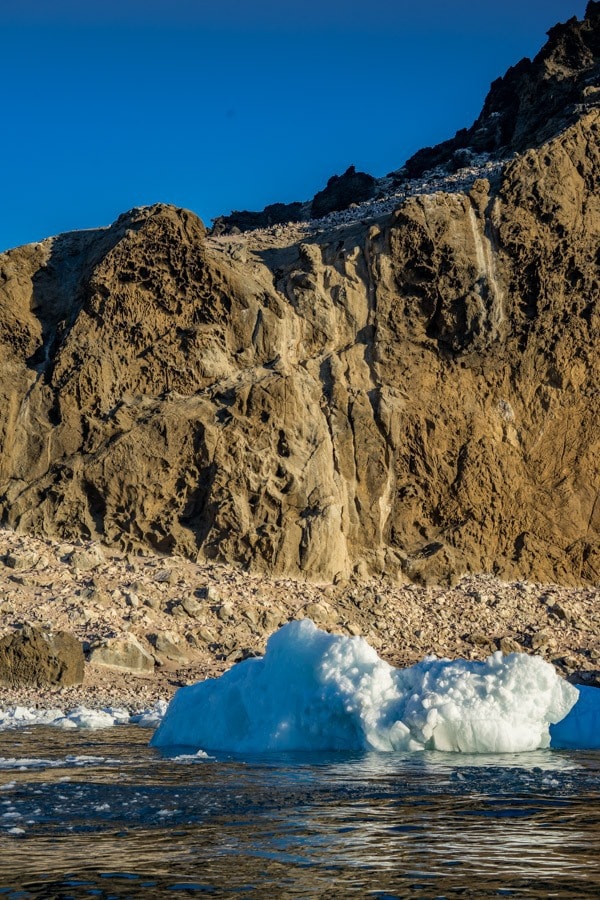
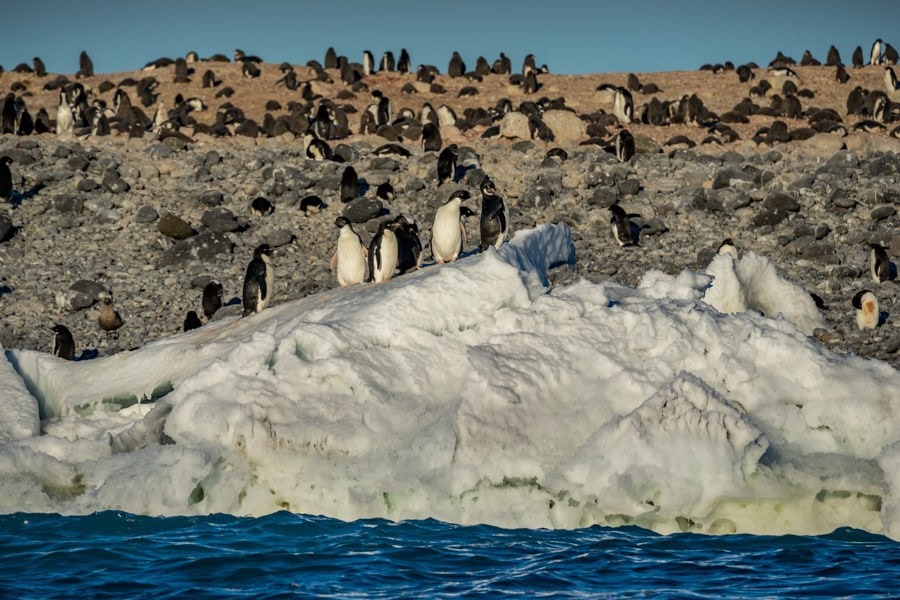
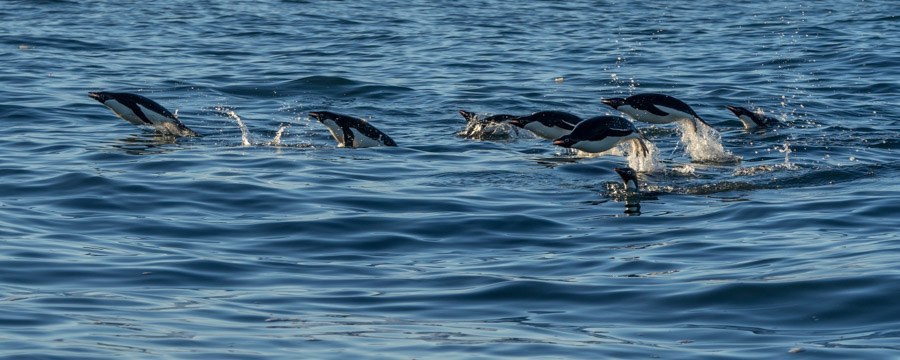
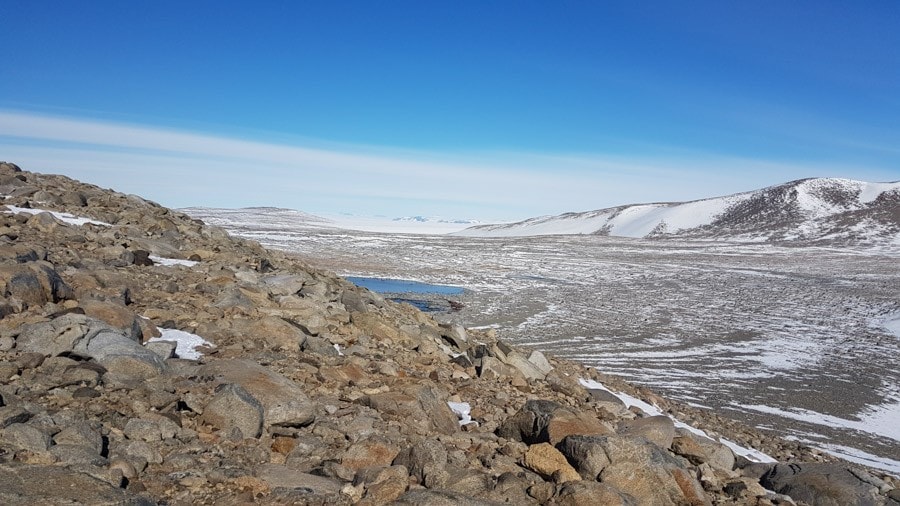

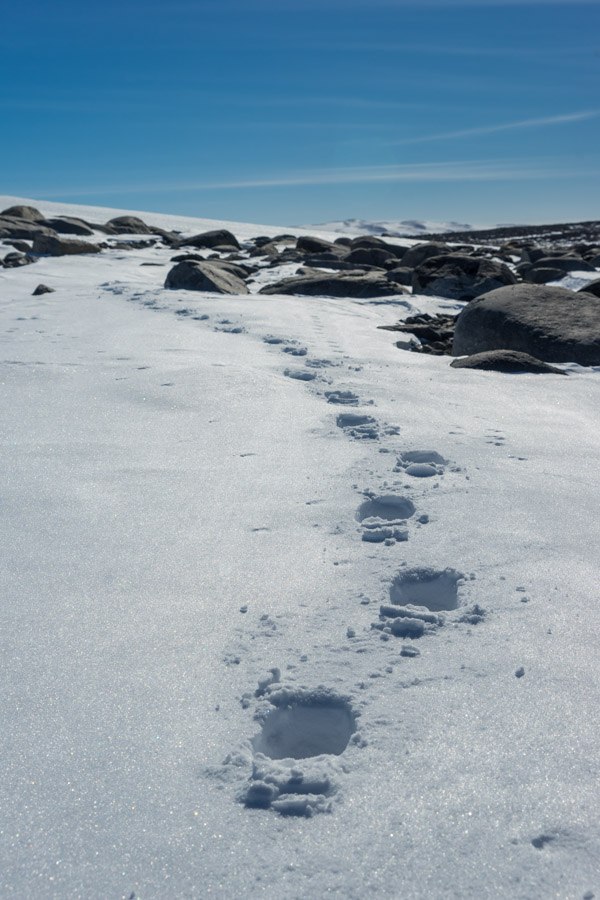
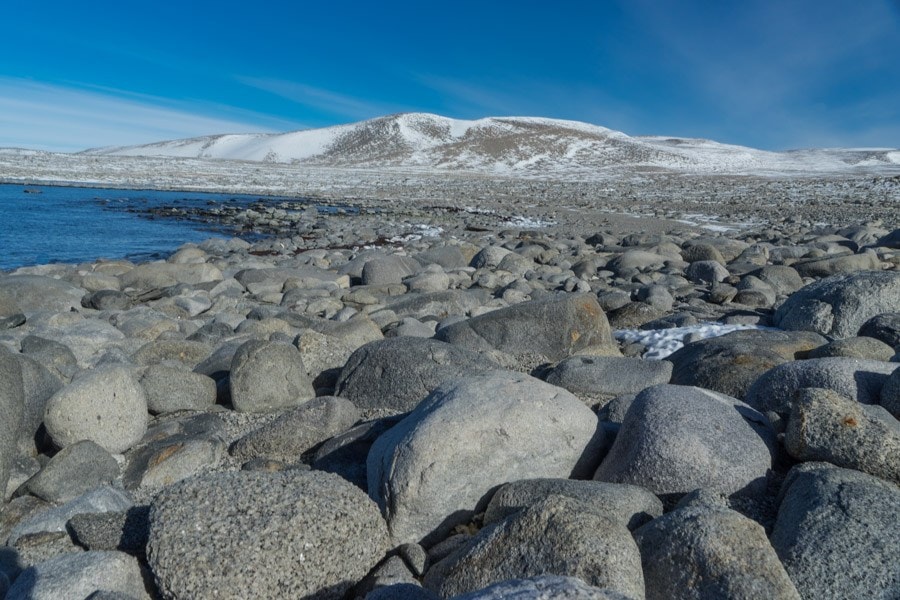
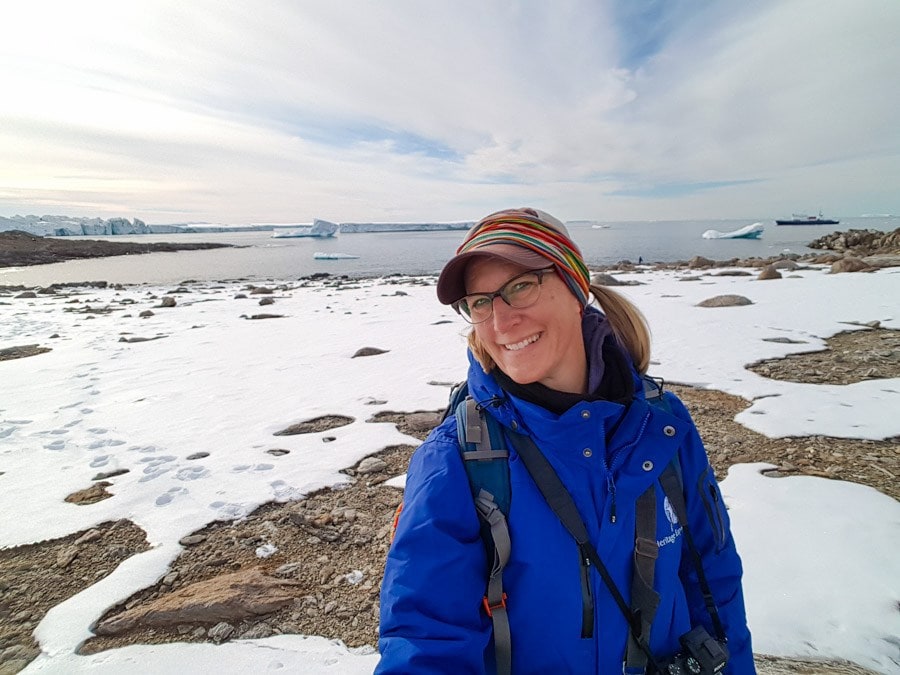
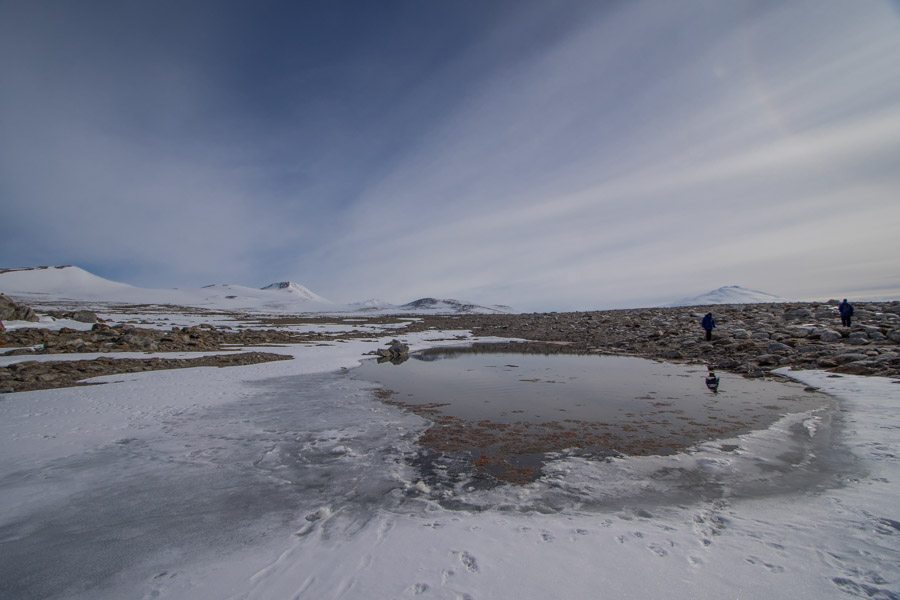
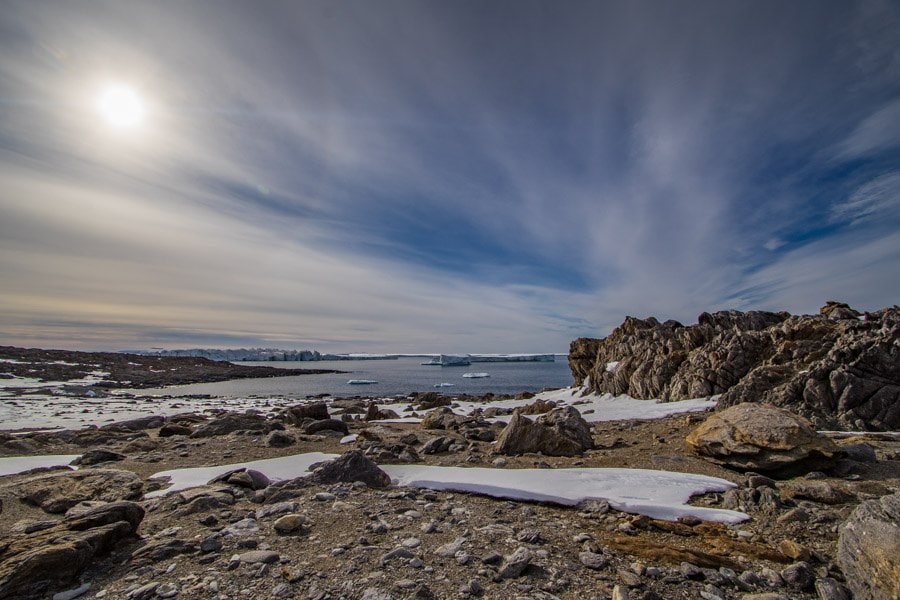
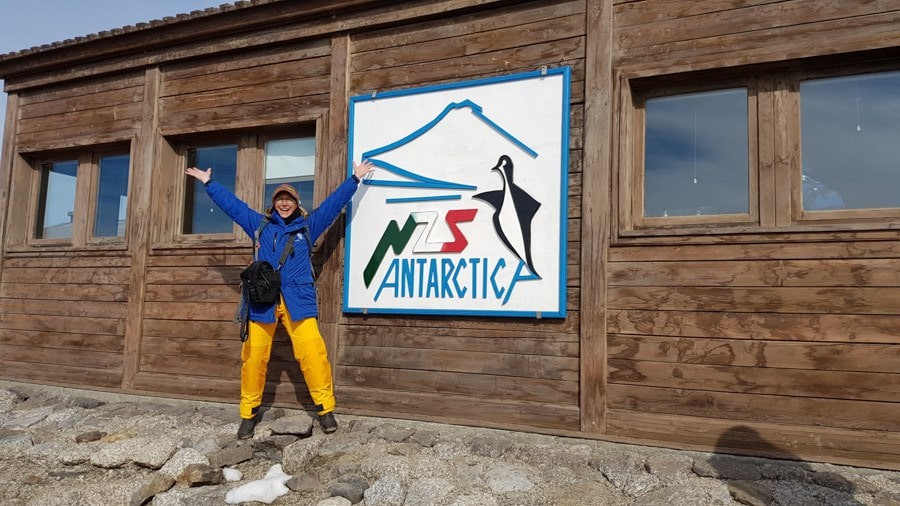
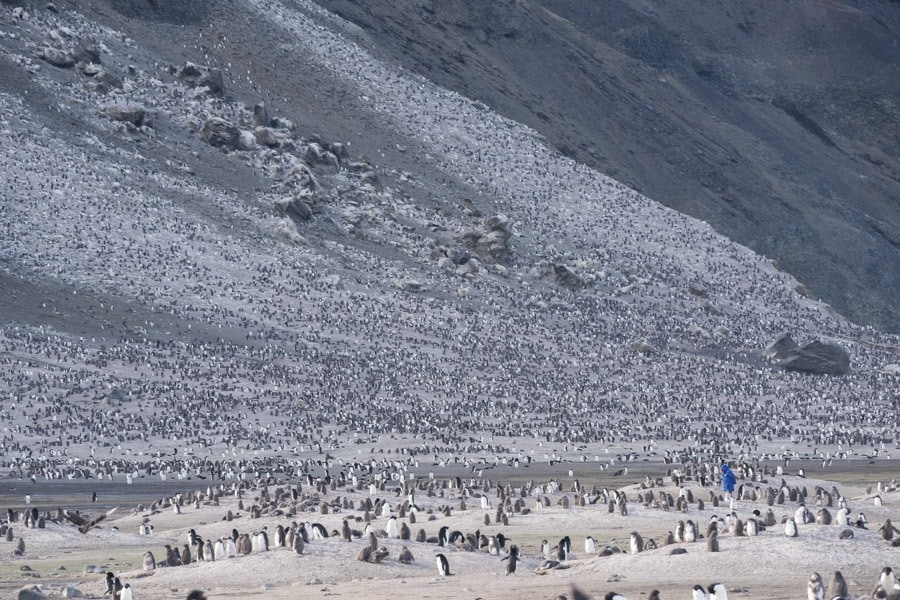
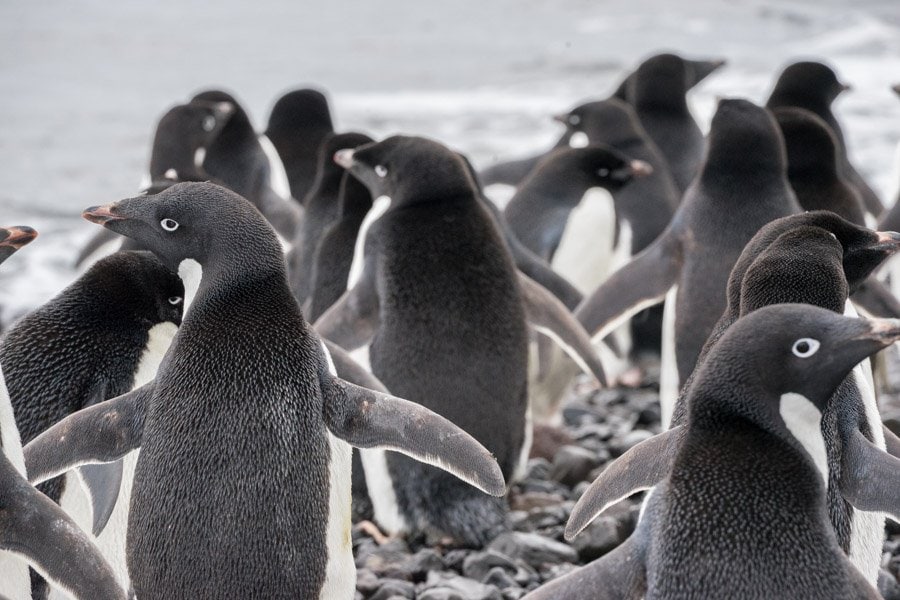
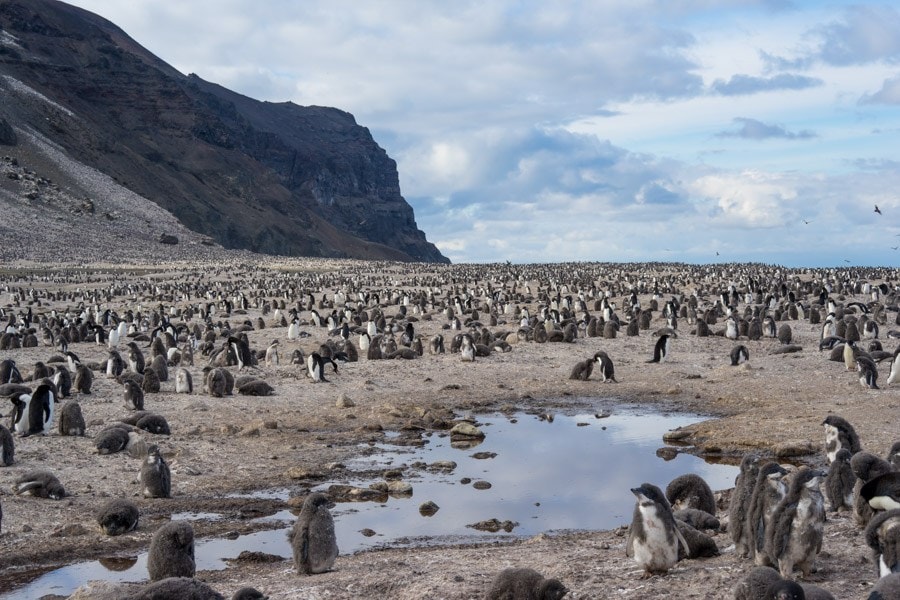
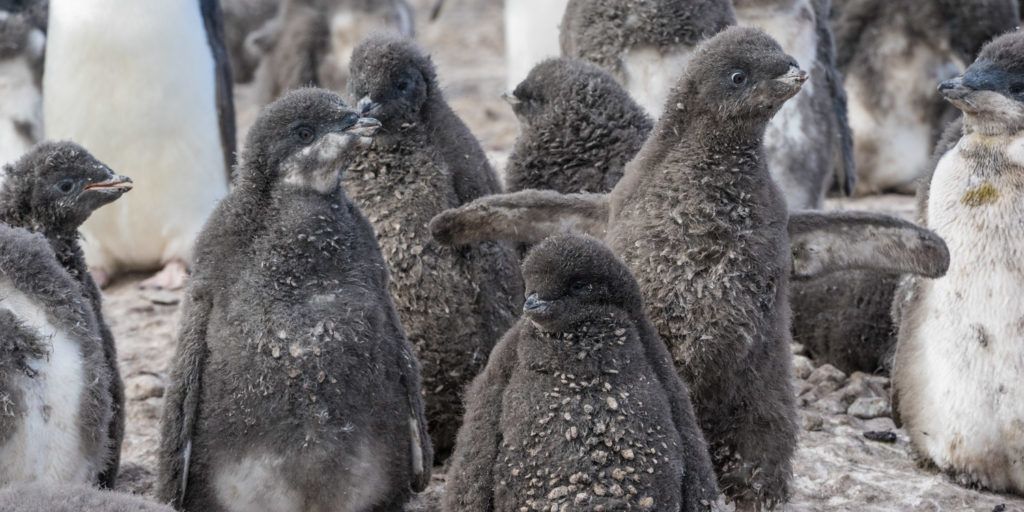
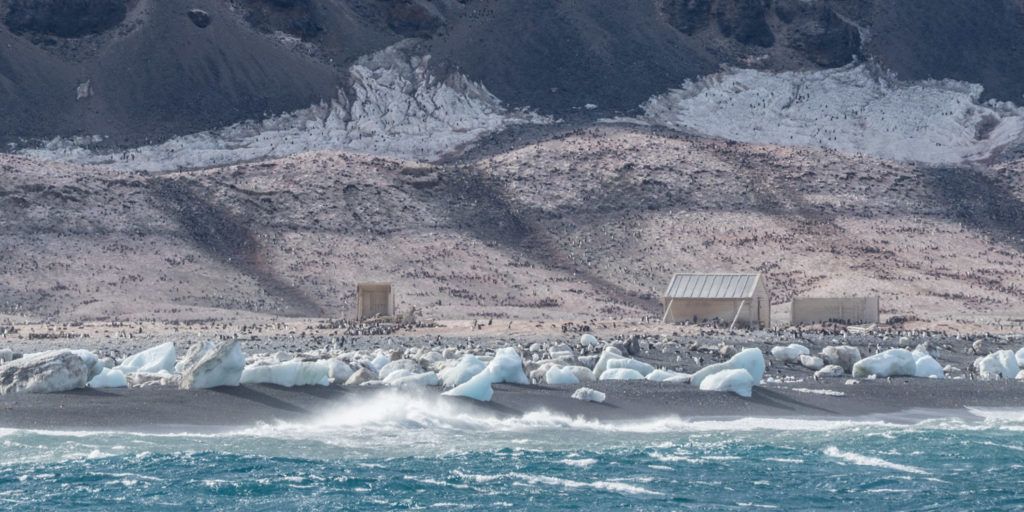
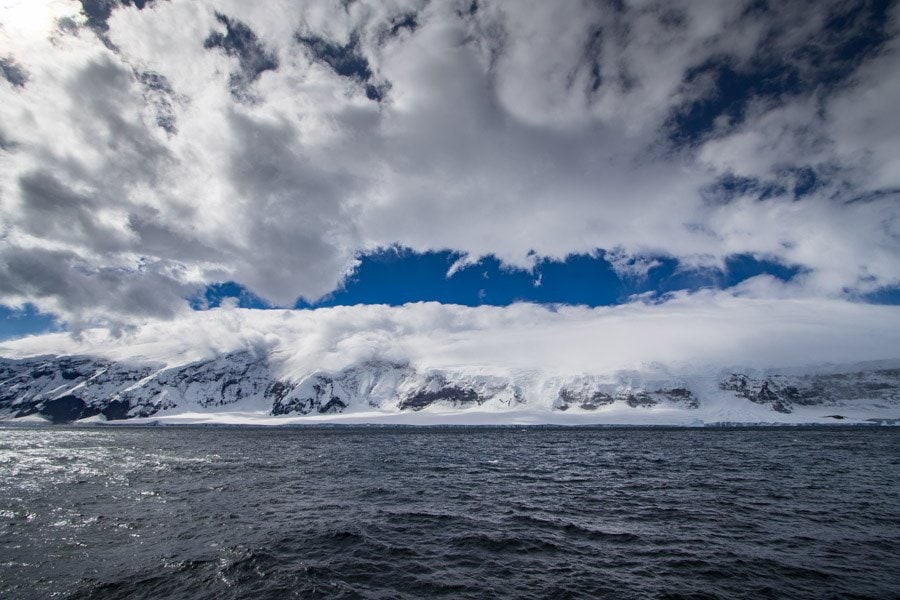
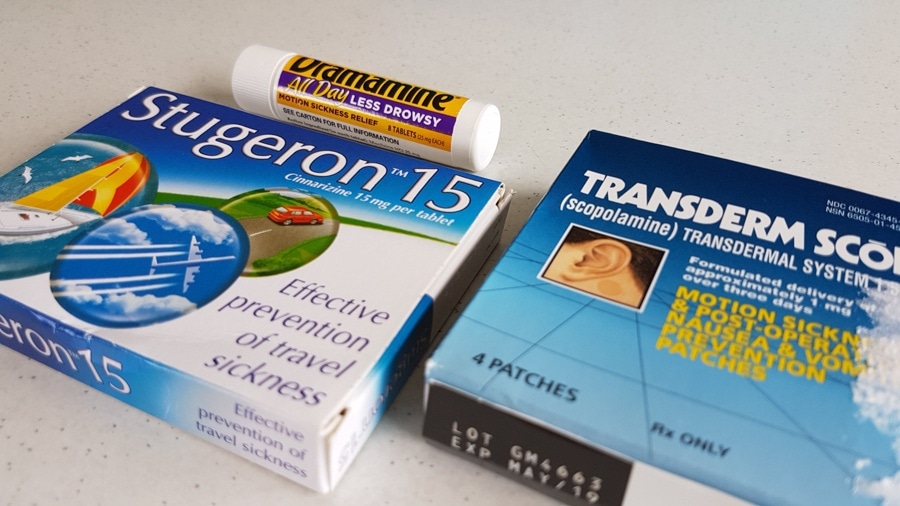
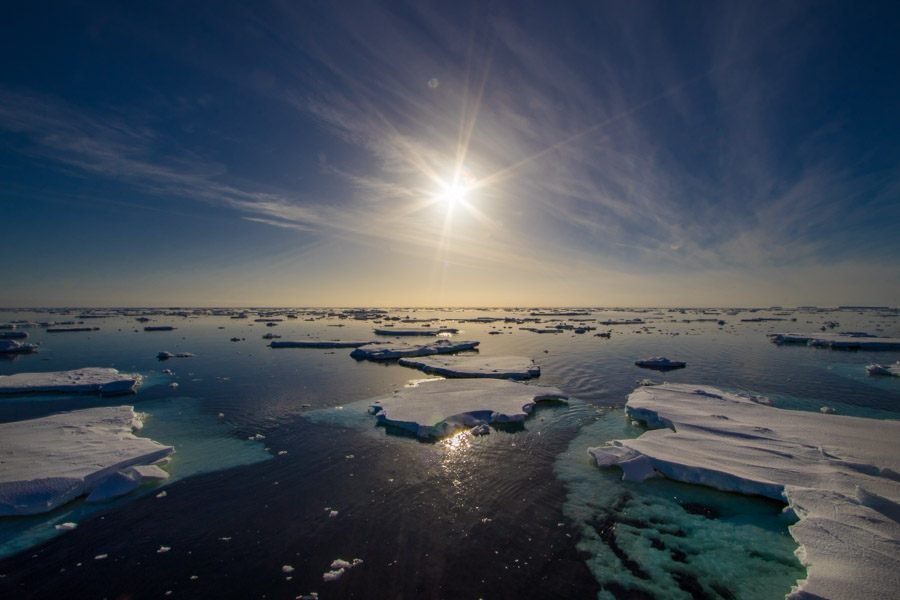
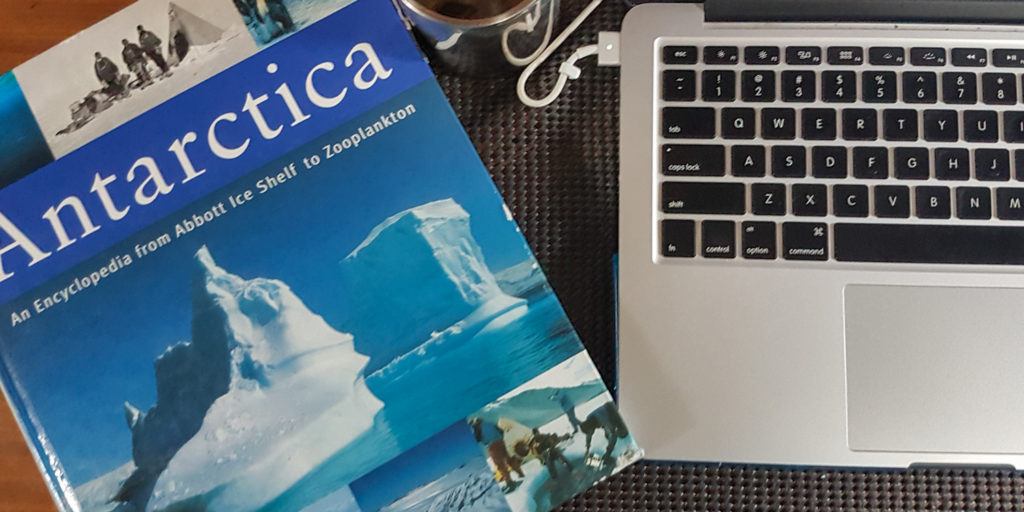
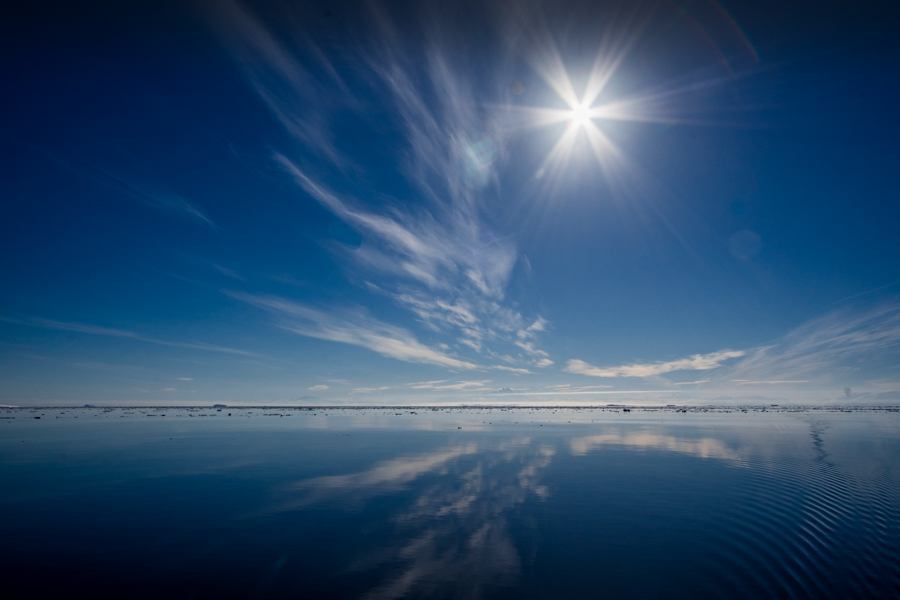
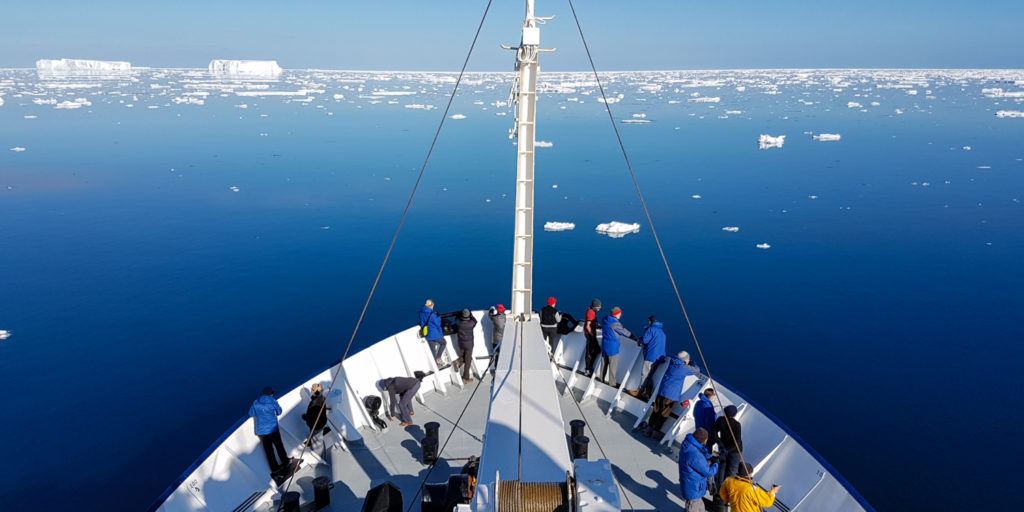

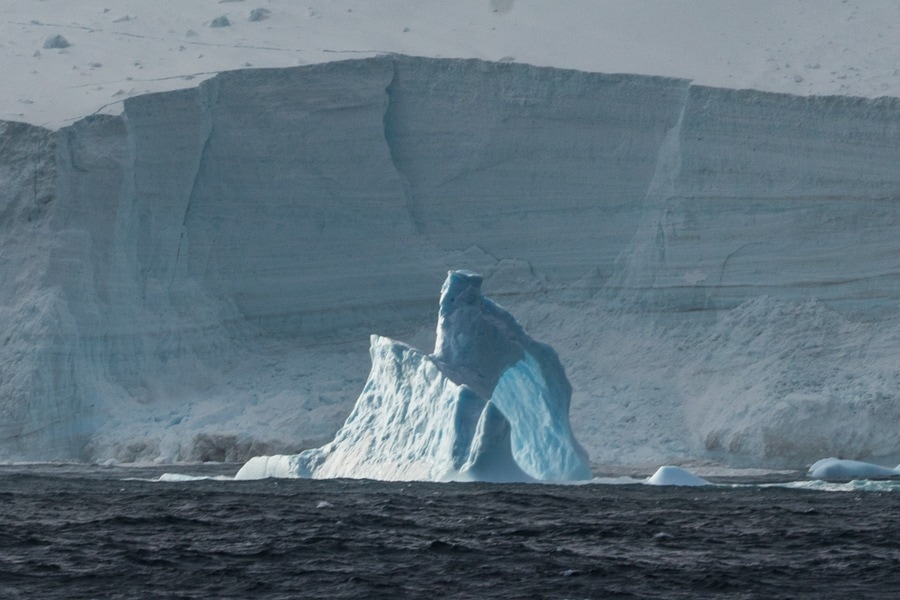
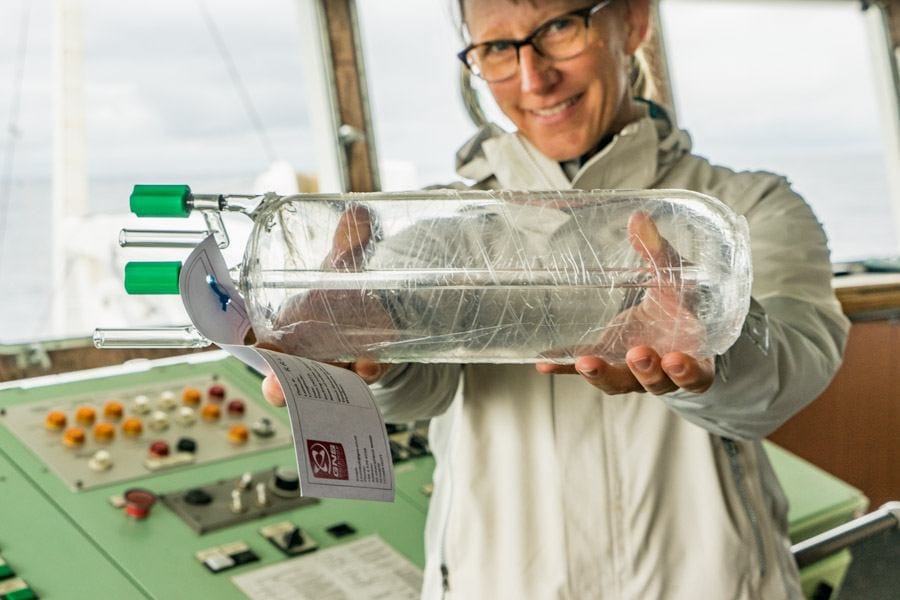
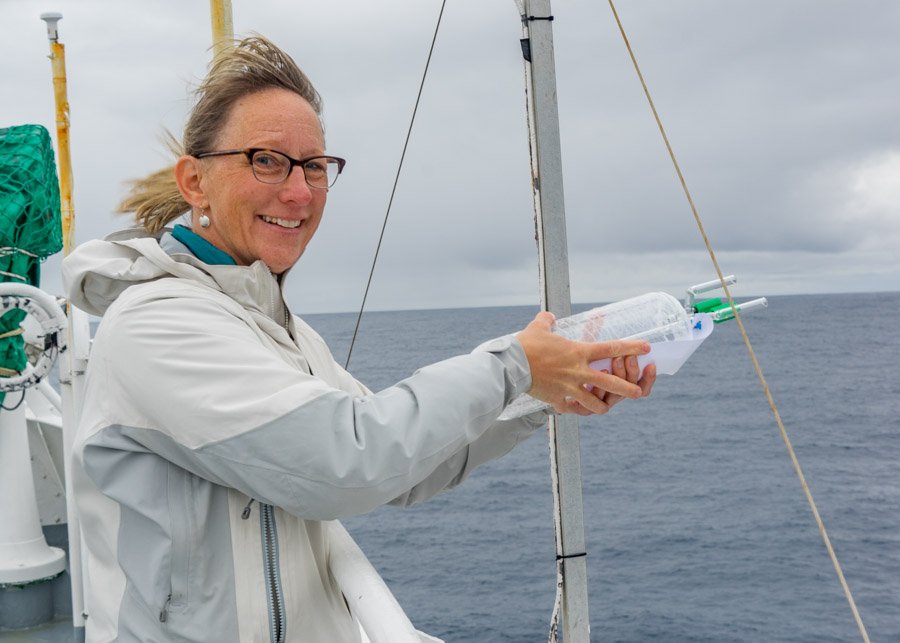
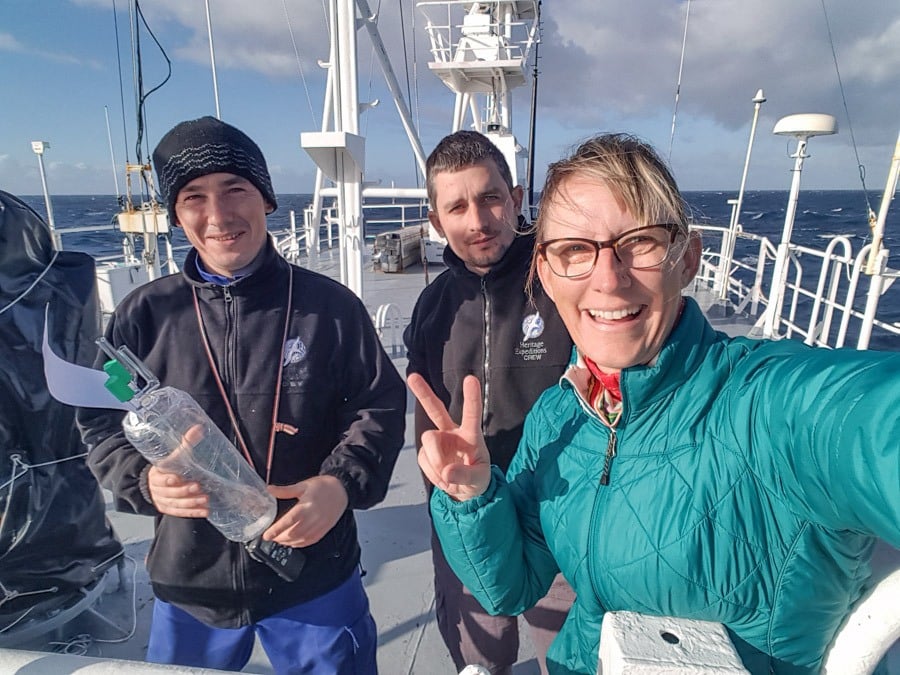
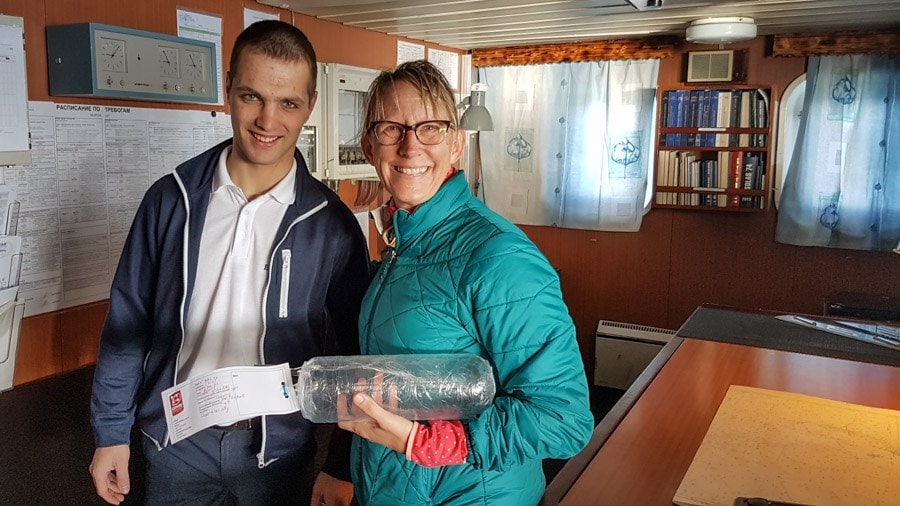
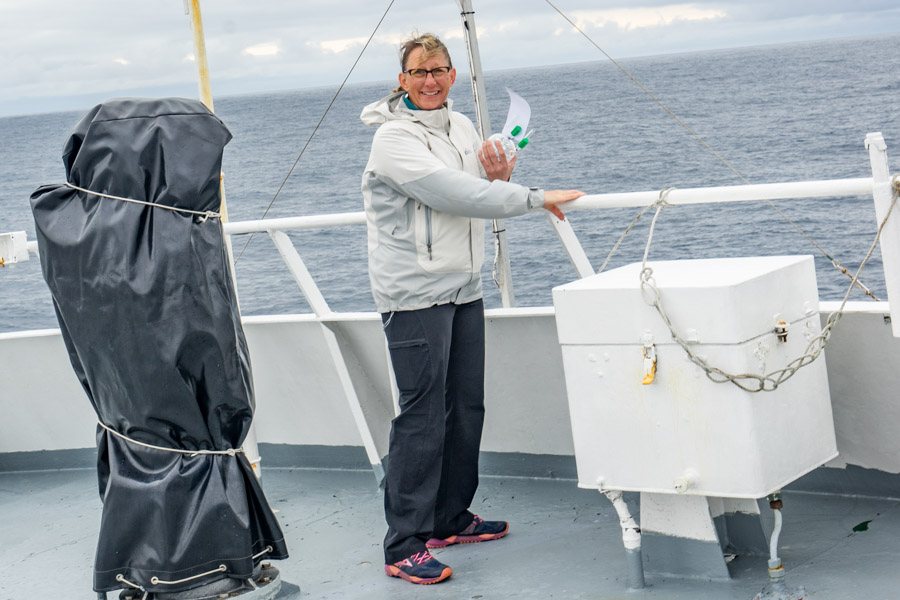
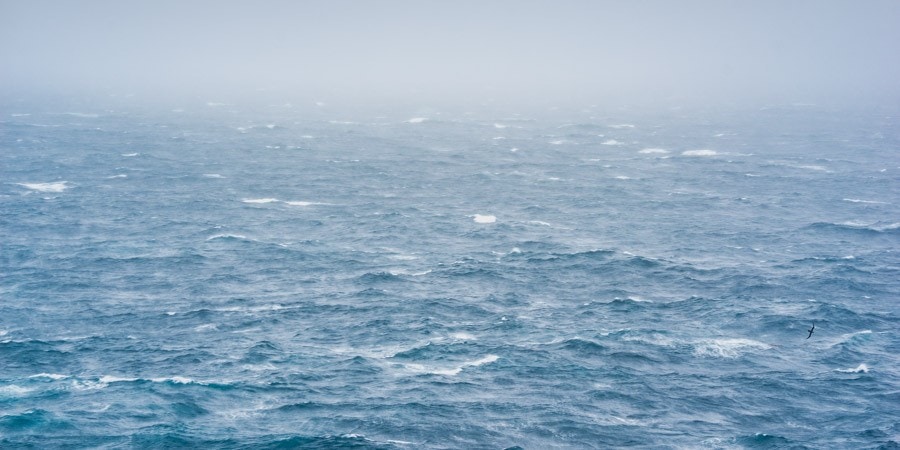
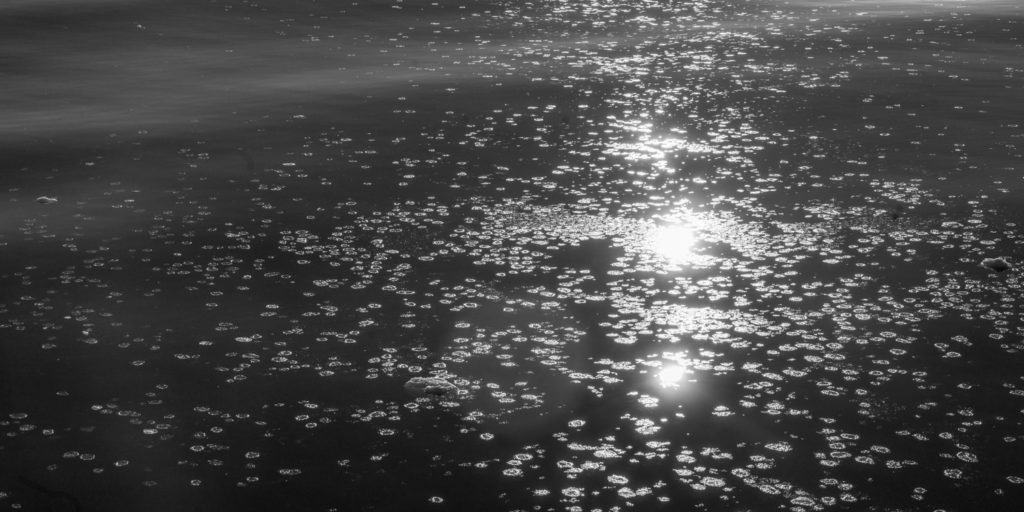
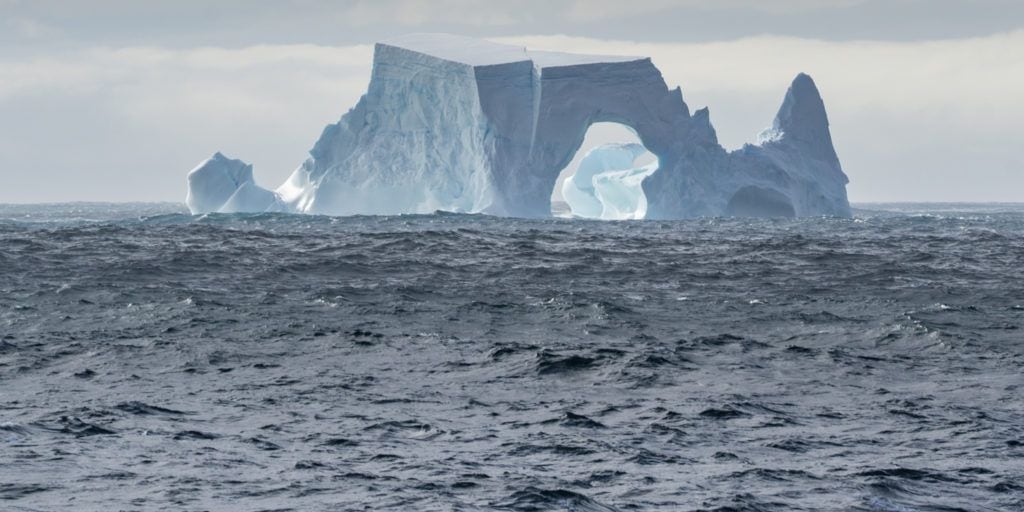
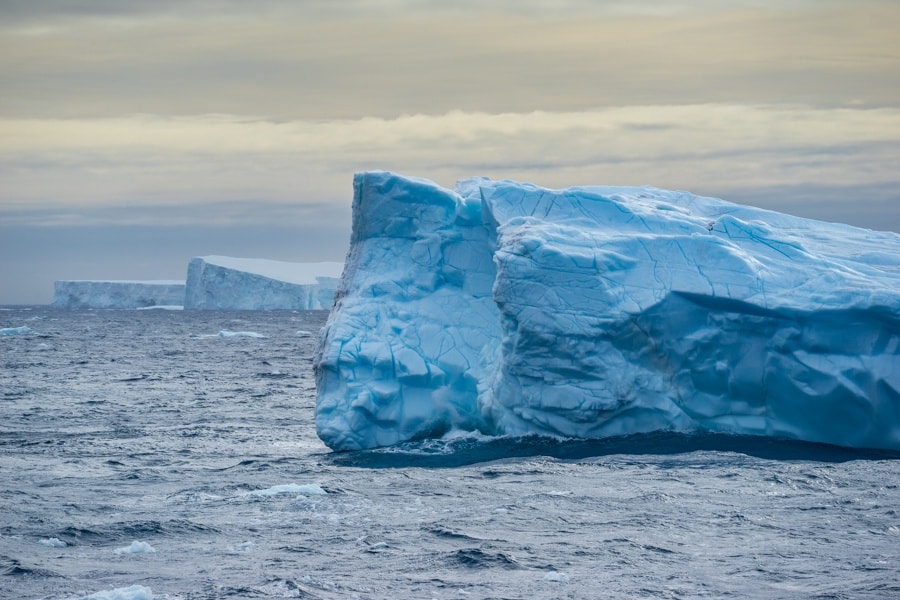
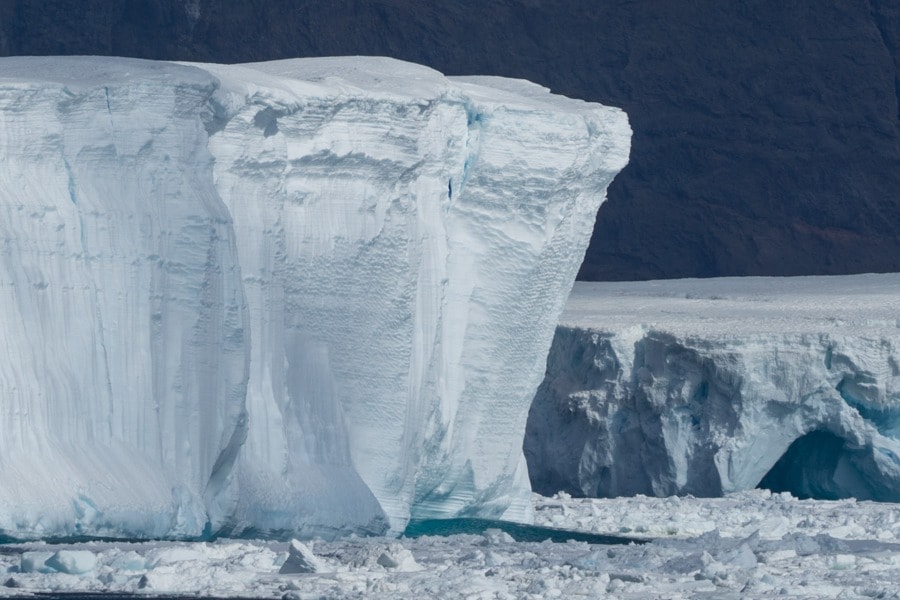
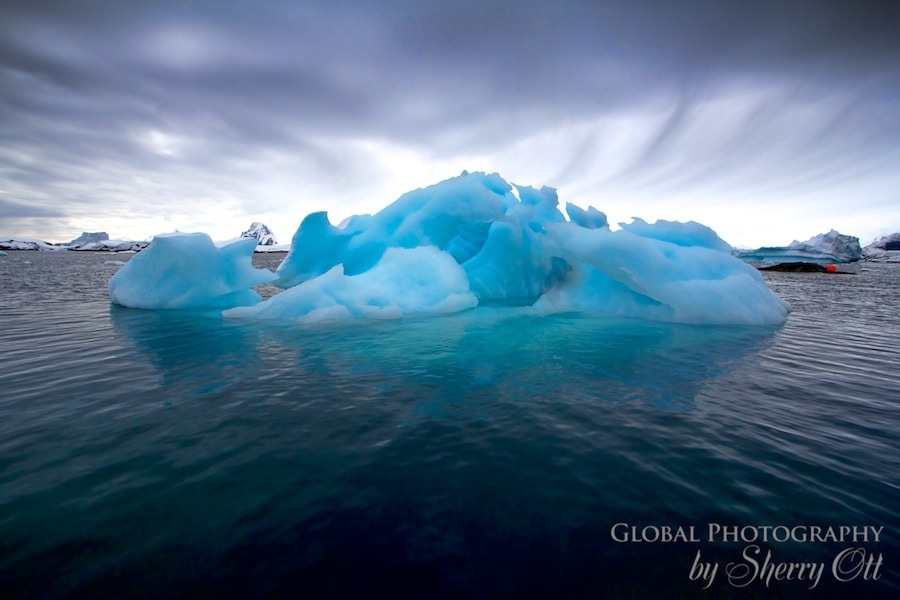
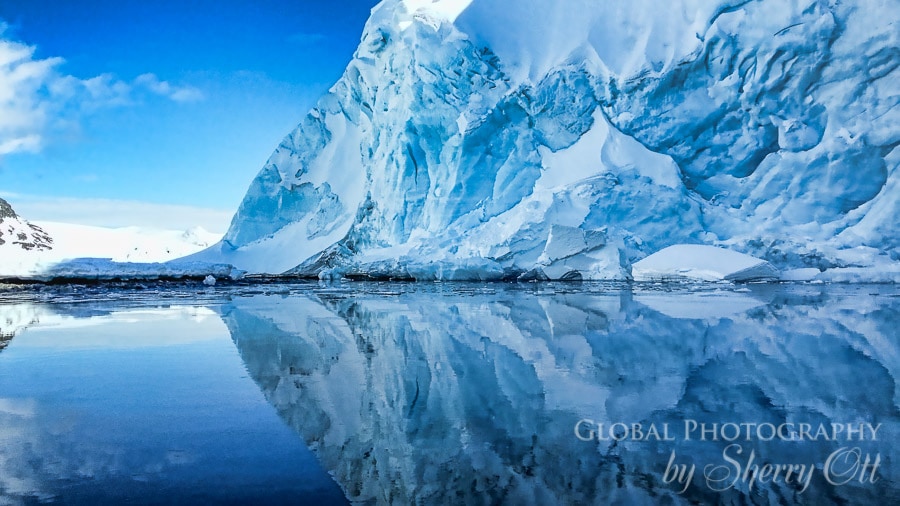
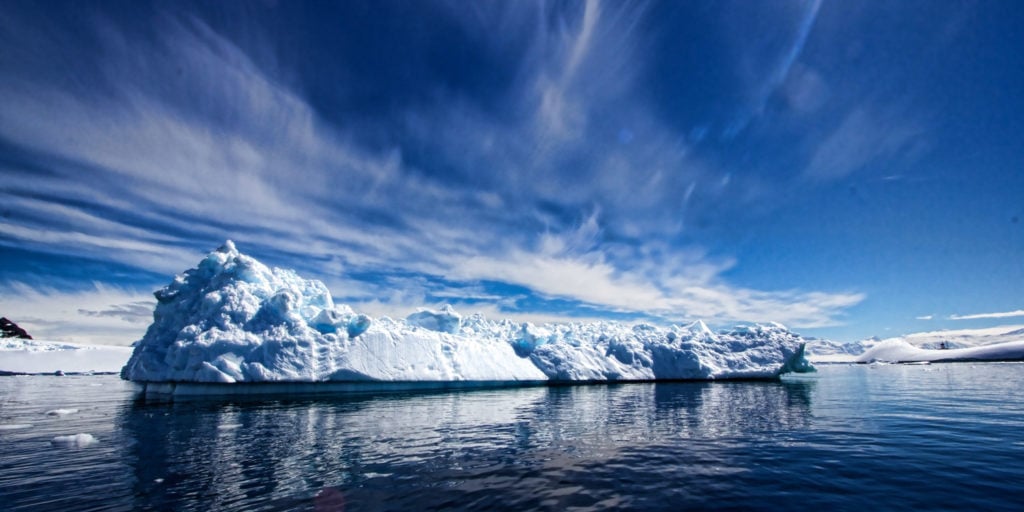
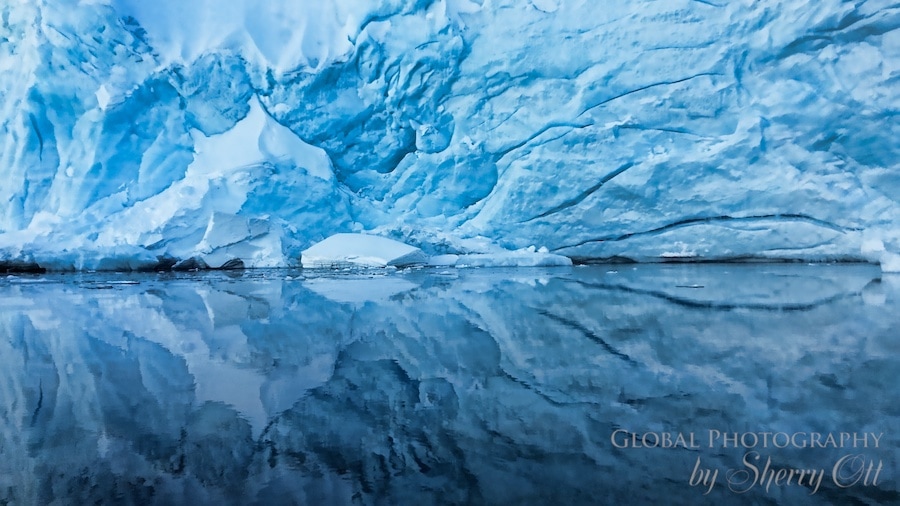
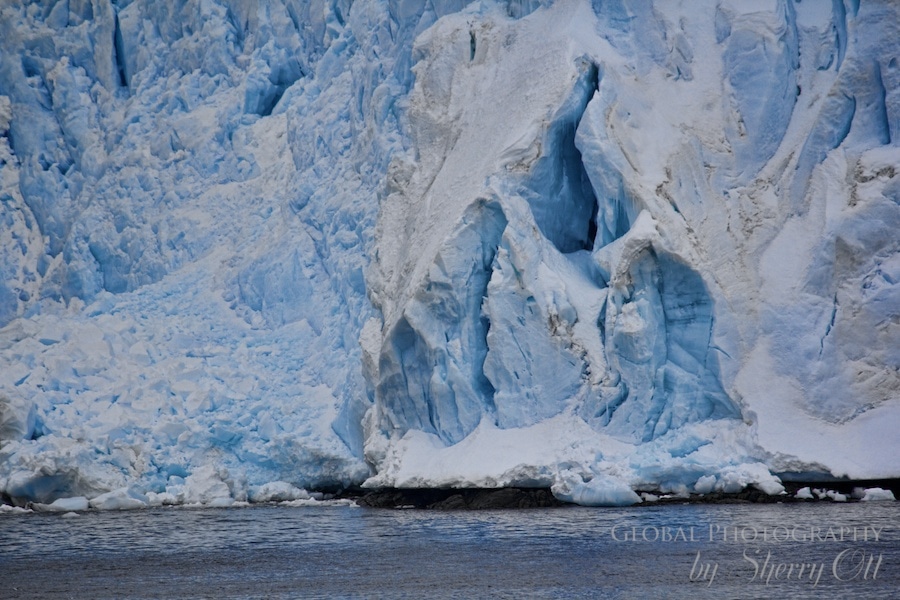
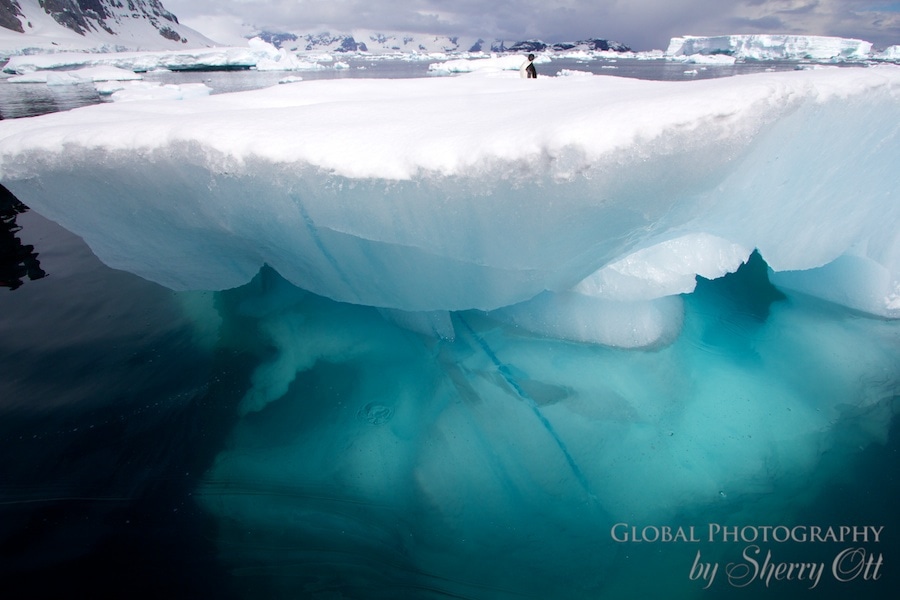
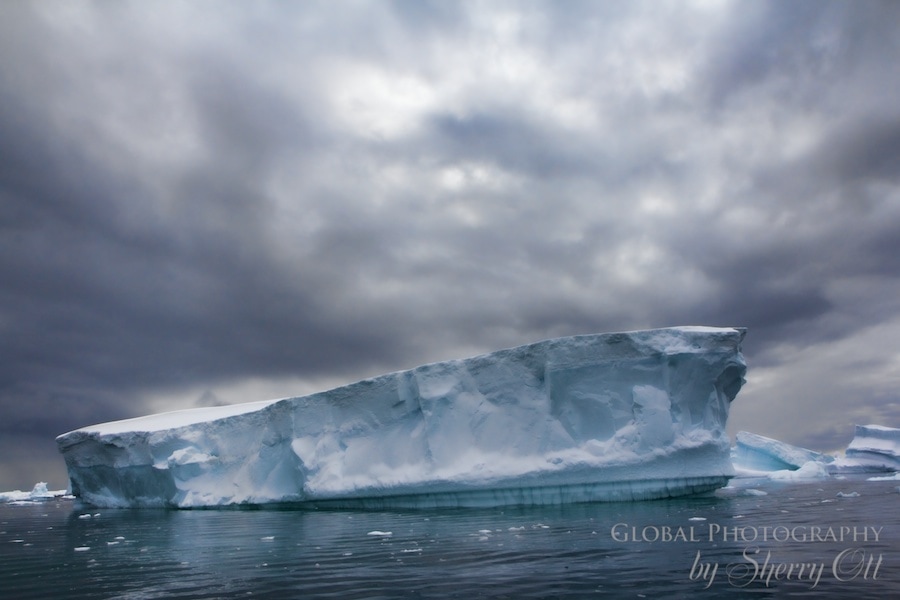
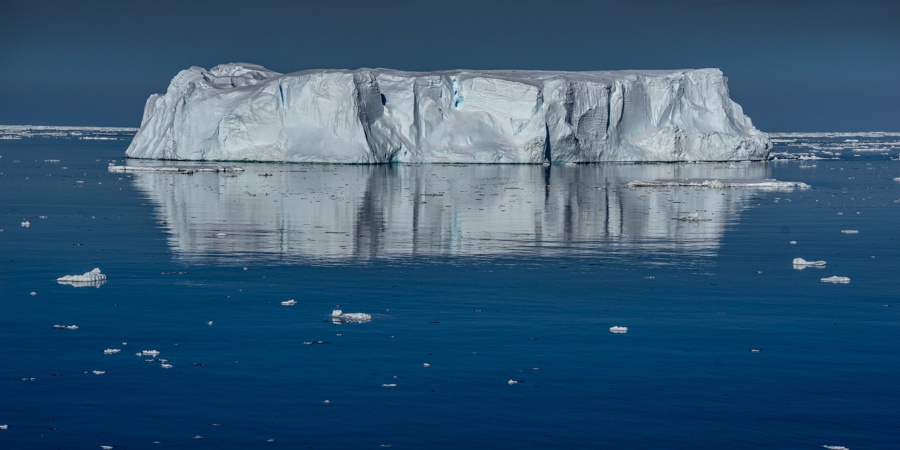
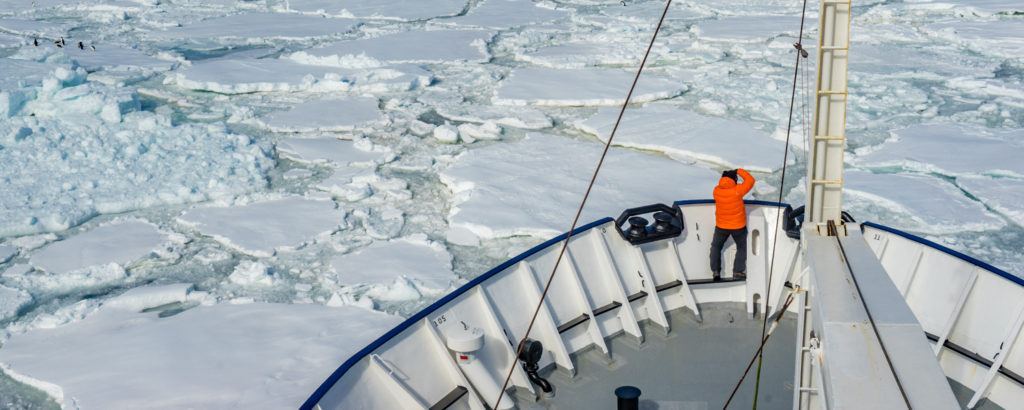

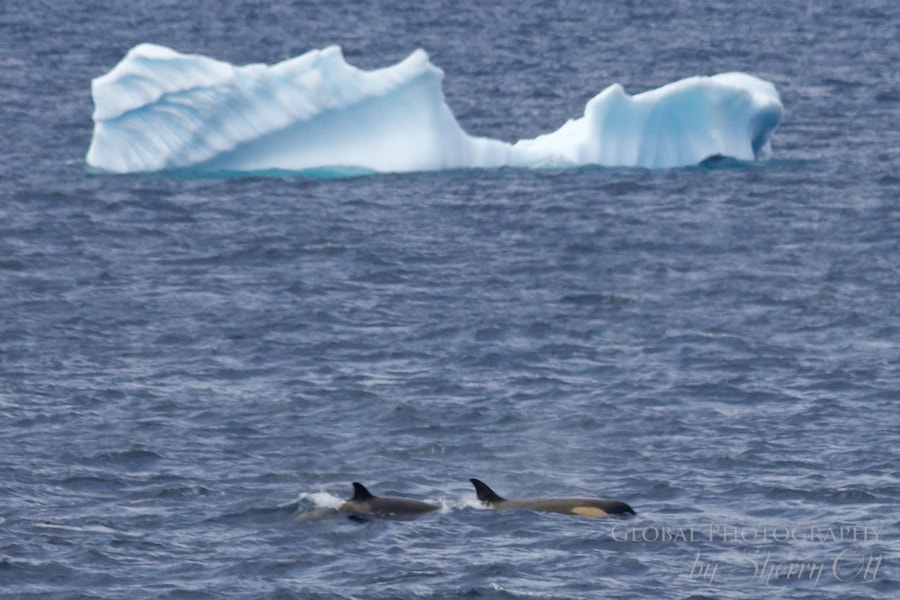

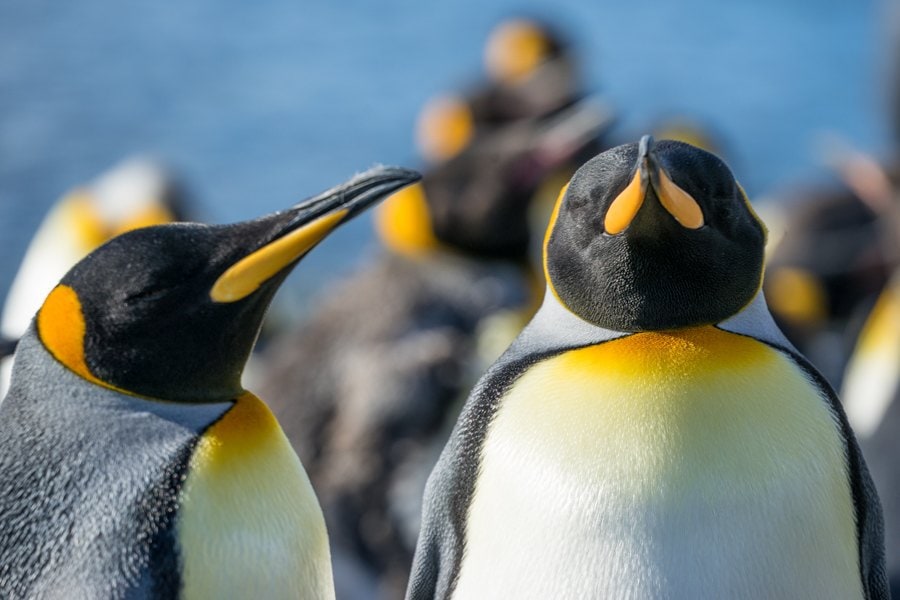
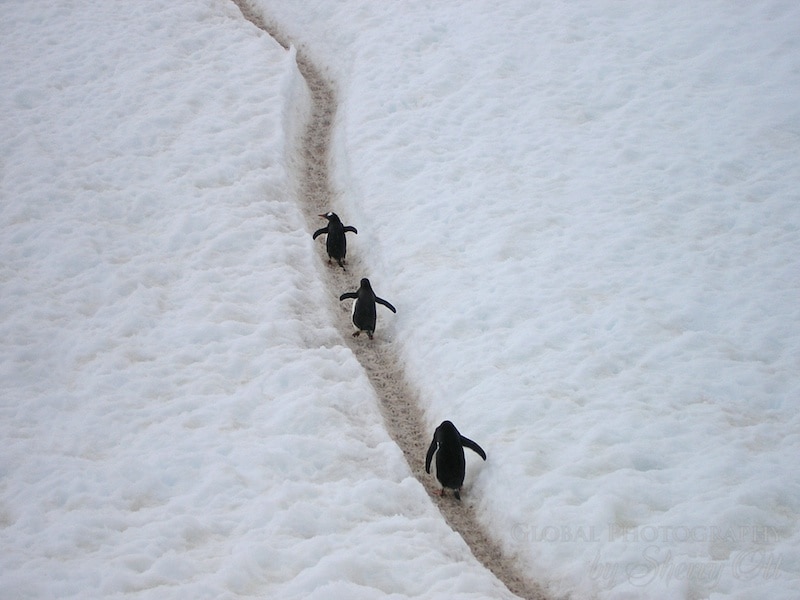
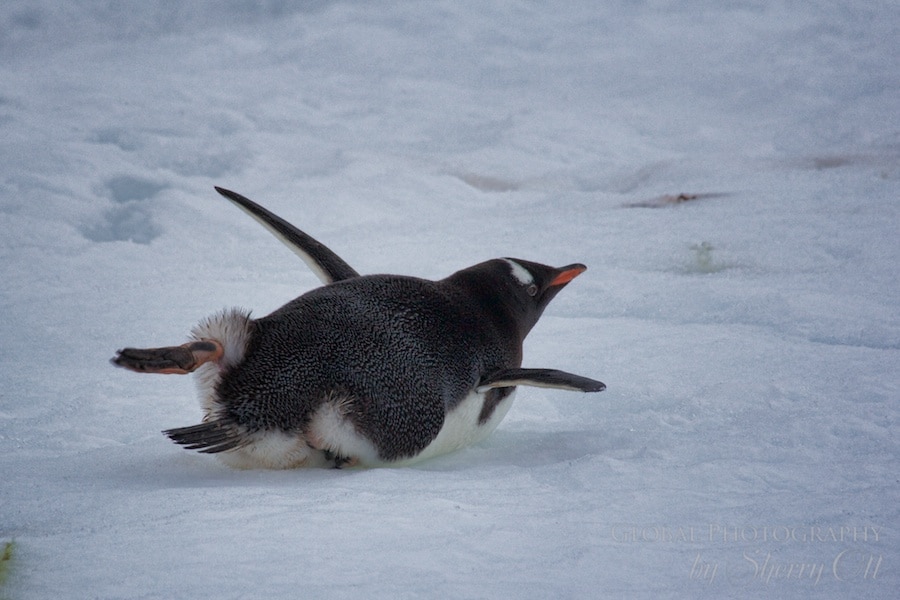
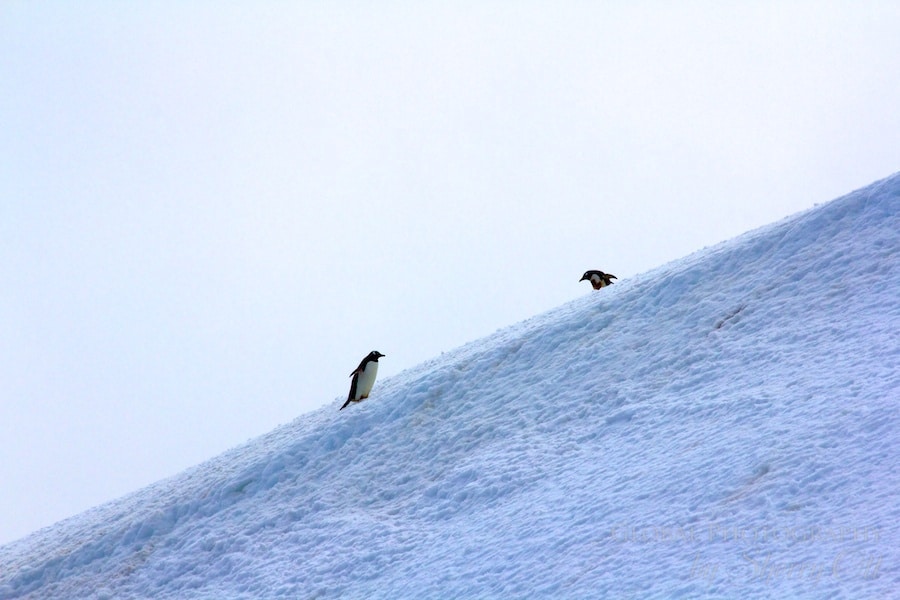
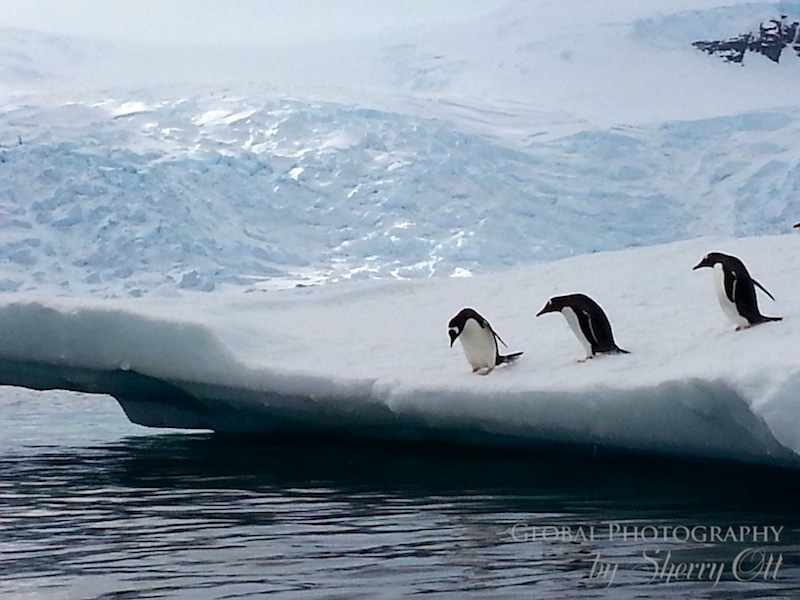
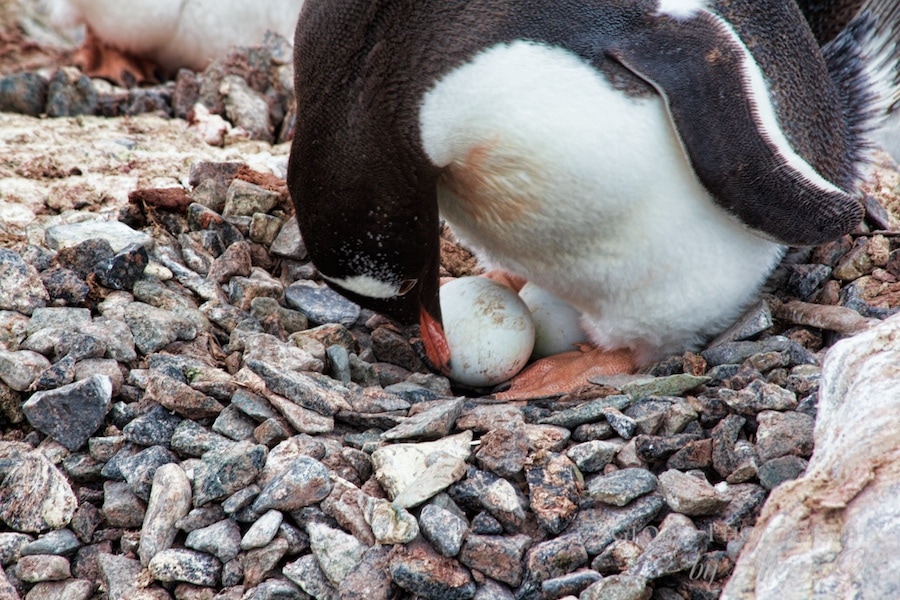
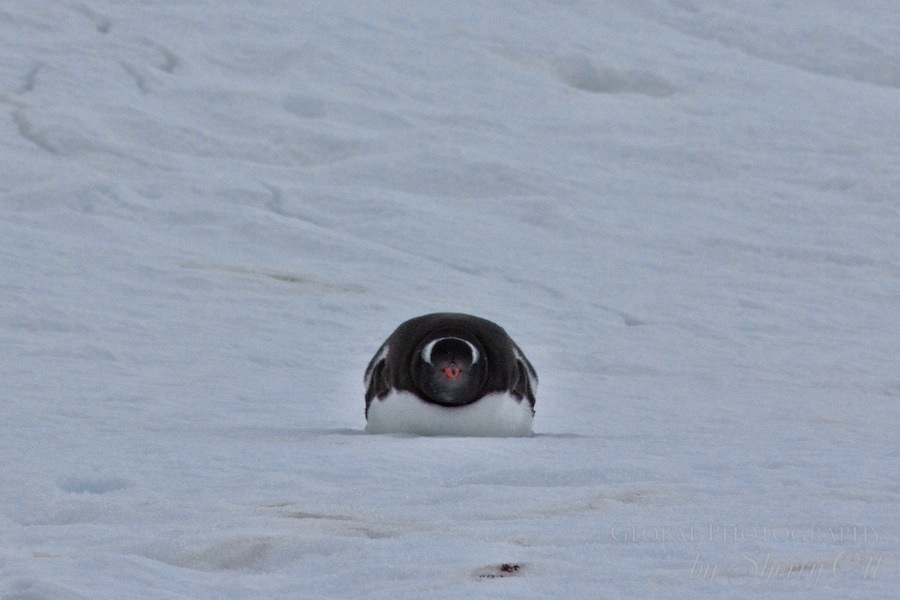
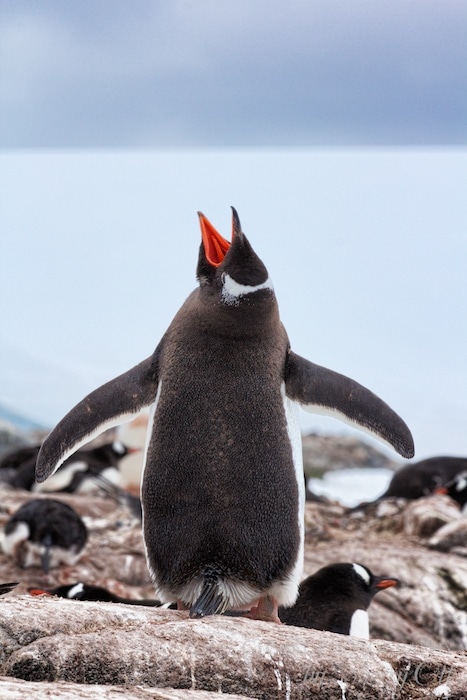
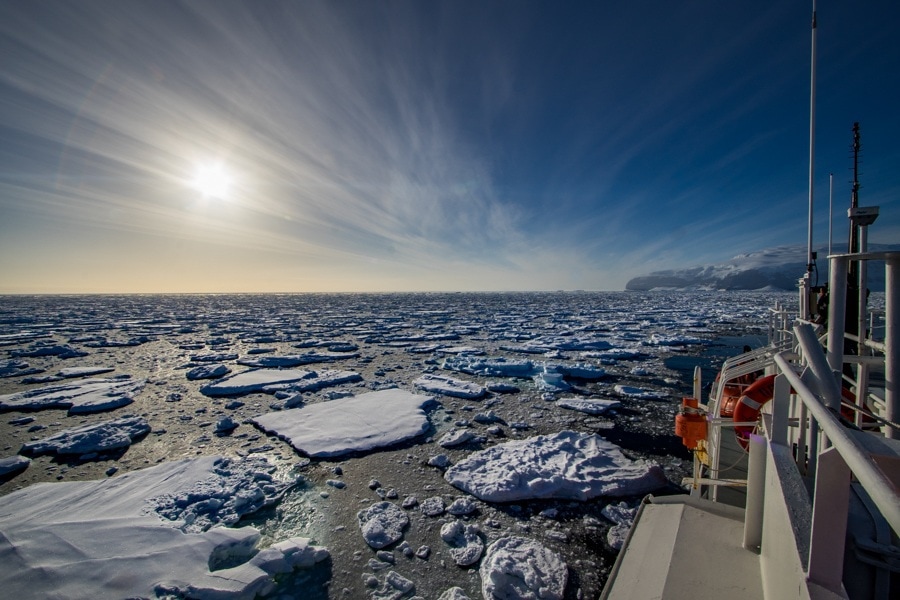
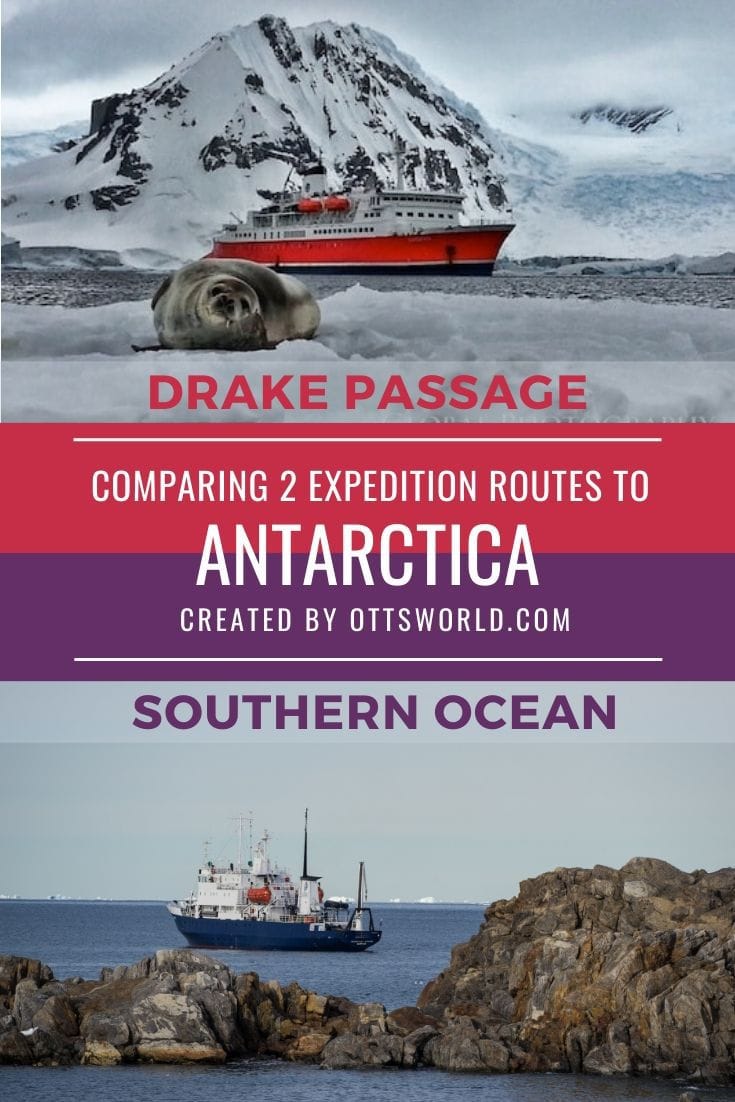
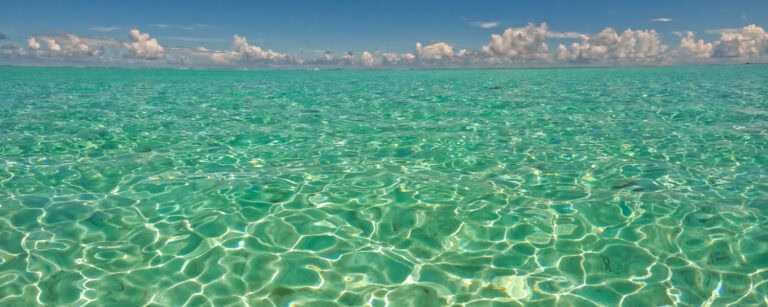





I always thought Antartica was suuuper complicated to get to. But now that I know how it makes me want to go even more!
Great article! I really want to go now. Quick question: Can you maybe do an article on your Dad’s experience aboard the freighter? That sounds like an adventure… travel the old way. Is it less expensive than flying? How did he find it? Ok, that is more than a quick question, but you should know by now that when someone says ‘quick question’, they only mean that it is a quick one to ask.
Goodness – that’s a good suggestion – however that may take a little time to pull something like that together as I wasn’t involved in that trip – but I can see if my dad is interested in being interviewed about it! It was quite a few years ago though – so some things may have changed a bit. Will put it on my editorial calendar for future writing!
Awesome! Thanks!!
Wow. That looks like an incredible experience. I’m not inclined toward cruises either, but I might have to make an exception one day.
Was it at all scary being in the middle of that dark ocean? I guess that kind of exhilarates and freaks me out.
I LOVED how isolated it was down there. I never once found it scary…it simply felt special.
All really useful stuff for anyone planning this kind of cruise – I think the kayaking looks amazing – I assume no-one ever falls in?
The kayaking was the highlight for me – and I’m working on a pretty detailed post all about it as well as some amazing video footage that I’m editing! You are able to get so close to the animals that way. Capsizing is a very real possibility and that is why it’s not for beginners. We did actually have one couple do their polar plunge out of their kayak…brrr!
Thank you so much for writing this, Sherry! My husband and I are leaving for Argentina/Antarctica next week. In 2011, G Adventures had a Christmas sale and we took advantage of the 25% off the Spirit if Shackleton trip. To cut down on cost, I am staying in a quad and he is staying in a triple. He has had so many questions since I booked this trip and many more as the trip is getting closer. You have answered so many questions! I normally don’t get excited about a trip until I arrive, but your blog posts have gotten me overwhelmingly excited! I can’t stop smiling because I know I am one step closer to the most pristine place in the world (and my 7th continent)! Thanks again!
April – you will have a spectacular time! I’m so excited for you. The MS Expedition is really a special ship and the crew is great. Let me know if there is anything else I can answer. I will be writing about Antarctica for most of January – so there’s much more to come!
Thanks for a very detailed article about visiting Antarctica. It is definitely on my list of places I woudl like to visit one day, and I now have a btter understanding of the rhythm of the trip.
How many days was your cruise?
And no mention of how rough it ever got? 😉
Love the look of kayaking through that environment – but like Heather said – They must be super stable?
Stay tuned for more detail on the Drake Passage and what that was like. But the quick answer is that we were lucky on the passage – it wasn’t as bad as it could have been – however I was still sick! Our cruise was 13 days – 13 blissful days!
And yes the kayaks are very stable. But it is serious kayaking in a very serious environment. I will have lots more to come on kayaking too!
The thought of a traditional cruiseship with fancy dinners and awful on-board entertainment does not appeal to me at all. But like you said this cruise looks completely different and I would looooove to do it. The kayaking looks awesome, albeit scary. I’d probably poop myself. 🙂
Excellent information, and great series overall. I can also count myself among the fortunate few to make a trip to Antarctica and it was one of my best travel experiences ever. I wrote a post with my tips for planning an excursion as well as some of my personal experiences that may be of interest to whoever is reading your series. Find it at: http://www.lengthytravel.com/travel-tips-antarctica-antrtidatravel-guide/ (I have also linked to your posts in the comments of that article).
Thank you for this post! I followed your adventure on Facebook–through your photos–as an Antarctica trip has been on my must-do list for a while now. You make it seem far less complicated than I initially imagined. I will have to share this with my (rather skeptical) husband.
One question–how challenging was the kayaking? It looks AMAZING, but do you have to be experienced? Because I’m not. And I can’t imagine that tipping over in that water would be a good thing. Also–did you take your CAMERA kayaking with you? It appears so, from your photos. Now THAT is brave!
Loved your article, it brought back memories of Brad’s and my trip in the early ’90s, after the collapse of the USSR, aboard the “Academik Boris xxxx”, a Russian ship looking for work after spending a year as a scrap metal carrier across the Black Sea, working for Jacques Cousteau while Calypso was in dry dock for maintenance and before that as a “Research Vessel”. We had more crew than passengers but only four of the crew spoke english.. the captain (who wore cowboy boots, jeans and a cowboy belt, played the guitar and looked like Mick Jagger), the first mate (who was as sick as the rest of us on Drake’s passage), a Canadian “chef” and the “information officer” (who’s cabin was lux, better than the Captain’s and much better than ours). I think we went in 1992 just after the USSR collapsed and all the Russian’s were on their own to find work and feed themselves.
It was a unique and memorable trip with a 30 very eclectic passengers from all over the world (including a real rocket scientist) and 60 crew members. Many academics, a wedding in the Lemaire Channel with the waters as still as a lake, magical. The best man was a NY attorney with the most interesting electronic device, a hand held GPS, It was the size of the original cell phones!
I thank you for bringing back a rush of memories.. The Ushuia rolling houses, the Beagle Channel, the confluence of the Atlantic, Pacific and Southern Ocean, the huge waves crashing over the entire ship, the nausea, and finally the incredible beauty, light, whites and blues of the Antartic. Not to mention those cute penguins, guano etc.!
Went on a real cruise last year, this bears no resemblance whatsoever! Much preferred Antartica.
Why what a huge surprise to have a comment from one of my favorite people on this globe! So lovely to hear from you…and hear your fascinating story. That sounds like quite a trip – such a crazy fun experience I’m sure. I always say that the more stuff that goes wrong on a trip the better it is to write about. But it does sound like you were able to experience it all at a very unique time. I hope all is well with you and Brad! Tell him hi and hope to see you next time I’m in NYC!
Sherry, your Antarctic Peninsula Cruise with Expedition Trips and G Adventures sounds and looks amazing. I love your gorgeous pictures.
I would love to travel to Antarctica one day via the MS Expedition. What a trip.
You wrote that your ship had 130 passengers. I believe the rule is that only 100 people can go ashore at any time. So, my question is how your cruise handled that restriction? When I went there were less than 100 of us so it wasn’t an issue, but I do wonder how it is normally addressed.
You are absolutely right about that restriction – no more than 100 on land at once. Our ship simply split us into 4 groups and only 2 groups were allowed on a landing at one time. So 2 groups (aprox. 70 people) would go for a span of 1 1/2 hours and then the next 2 groups would go for 1 1/2 hours. It worked really well. We all were able to do 2 landings a day.
Great post! Love the pics! Antarctica is on our bucket list. Thanks for the informative post. It is like we were right there with you.
Wow, I actually didn’t know that you could “just book a cruise” to go to Antarctica – this sounds and looks so amazing; I would love to do that!! Great pictures, especially love the seal nursing.
Simply incredible…I have been on many cruises, and Antarctica is obviously on my list. To experience cruising with only 130 passengers though would probably ruin me of them for life:)
Wow, this looks incredibly exciting! I’ve never thought of it as a coveted destination, but it’s definitely worth trying at least once in a lifetime … Thanks for all the details!
Hi Sherry, I am so glad to have found your post. I am going on the same trip in 16 days!!!!! I am scared and excited. I can’t wait to hear what you have to say about the Drake Passage experience. I have enough seasick pills to knock down a whole country, so I think I will be fine. But I recently saw (unfortunately) Life of Pi (the movie), plus the 2007 sinking, I am really scared! Also, did you fly into EZE and then flew from AEP to USH? I have to switch airports, and have heard that grabbing a taxi is the easiest way. Do you have any comment on that?
Thanks again for the great post. It helps me greatly.
YOu’ll have a wonderful time – despite the Drake Passage. I had sea sickness meds – but was still pretty uncomfortable for those days through the Passage. I have another article coming out about it in a week or so. However – the ship doctor also has meds – and quite frankly it’s unique to each person and you just have to accept it and know that as soon as you settles down you will feel better and it will all be worth it. Yes – I flew into EZE and then down to Ushuaia. Yes – the best way between airports is just grabbing a taxi. They say it will take about an hour. I have to do that in a month on my way back to NYC from Patagonia. Good luck and let me know how it all went!
What an amazing experience, and all that with your father, which, I am sure, made it even more special. As others stated, I am not a cruise person either, but doing the Antarctica looks like a cruise I could enjoy. I love the fact that one can go kayaking, and that is something I would love to do very much. As always, you brought exceptional stunning photos… the first shot is simply breathtaking! And those leopard seals look so cozy and comfortable 🙂 What a wonderful part of our world!
Hi Sherry, one stupid question. I have never been on a cruise / doesn’t like them either. Are bath towels provided on board? How about sunblocks? Thanks so much for your help!
Towels are def. provided. Sunblock I brought myself. but there is also a ship doctor with supplies and a little tiny giftshop with stuff like that available.
you got a good one here. I honestly haven’t tried cruising in my entire life..maybe I still don’t have much courage to do it..but you just described the thing quite clear that I can imagine myself in there.
AMAZING article! Thank you so much for sharing!
What a great piece! I’m so glad that you were on AFAR’s list of unorthodox trips for families, this one is high on my list, and hopefully this will help me sell the Mrs on the trip!
Thanks Jude! I do hope you get to Antarctica – it was one of the best places I have ever traveled to (along with Mongolia). And if you go – do the kayaking – it’s amazing!
Wonderful article,helped mr to plan nov 14 antartic in depth voyage
Wondering how would be weather in nov,I am nature lover,have seen already penguins and whales in Alaska and South Australian shore and newzyland
Amazing photos and story! I love penguins so much, and this is very high on my list of things to do in my life. I’ve saved this in my evernote Antarctica planning folder and hope to make the journey in 2016!
I am looking at booking on this ship through the small cruise ship collection (www.small-cruise-colelction.com). Does anyone know anything baout this company?
Sorry – I”m not familiar with them so I can’t offer any info. Good luck though – it will be an amazing trip!
WOW, Sherry, what a detailed report. The zodiac landings must be a highlight but kayaking in Antarctica sounds like a major bonus. My friend Lynn Chen was on the MS Expedition last November and a link to your article has been added Lynn’s post. Here’s the link: http://packinglighttravel.com/destinations/antarctic-adventure-on-ms-expedition/
WOW! Looks like an incredible experience. I’d love to get there some day, the photos are gorgeous!
hi Sherry,
I just relived my first Antarctica Cruise in 2007 with your wonderful story?
you just hit the point with everything you say –
exactly my thoughts –
it had been a dream of mine since I learned about it in school
It is the most special place ever!
we are NO cruise people either,
so it was hard for me to see myself on one of those ships –
and to get my husband on it,
it had to be at least comfortable –
(I would have jumped on a Russian vessel)
we took the Bremen from Hapag Lloyd the Shackleton route –
(we booked two months in advance,
they laughed at us when we inquired,
but then had a sudden opening)
at least it was an expedition cruise with scientists on it
who gave wonderful information
every night til 11pm
and the next morning at 6am we went out on the first zodiac before breakfast??
it felt like an adventure the whole time,
not like a vacation?
wonderful?
it was still analog photography then
and since Everything on this trip was expensive,
I was constantly worried not having enough rolls of film before they ran out at the tiny boutique on board
glad those times are over?
I still have the cruise from New Zealand on my bucket list – needs a bit of saving
thanks for bringing it closer again?
I cried when it was over and sometimes even tears well up just reading about it
or looking at my photos.
but I am so grateful we could do it at the time,
it was a crazy act between jobs, leaving three young adults back home and using the life savings, but we Never regretted it!
looking forward to my next trip there?
have a wonderful New Year with amazing trips??♀️
I adore your comment about “it felt like an adventure the whole time, not like a vacation” – what a wonderful way to describe it. That’s what I strive for in all of my trips I take! Thanks for sharing your memories!
Wow! That is such a wonderful experience. Antarctica is definitely one of our dream destinations outside our own country.